A blog centered on reviews ranging from movies to board games and everything in between
Don't wanna be here? Send us removal request.
Text
Star Wars Jedi: Fallen Order Review
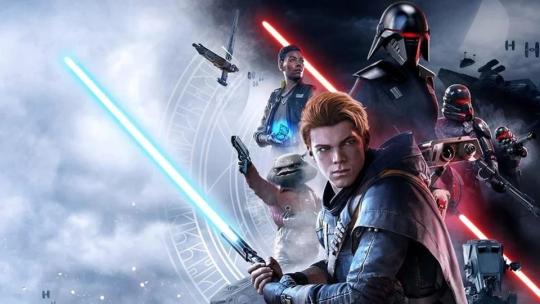
Before the dark times, before the mouse empire, LucasArts published several fun, memorable Star Wars video games, from Star Wars: Bounty Hunter to The Force Unleashed series. After Disney’s acquisition of LucasArts in 2012, the Mouse House stopped all internal developments at LucasArts and laid off most of its staff in 2013. Signaling its turn to the dark side, Disney awarded EA (voted worst company in America multiple times) a multi-year license to create Star Wars video games.
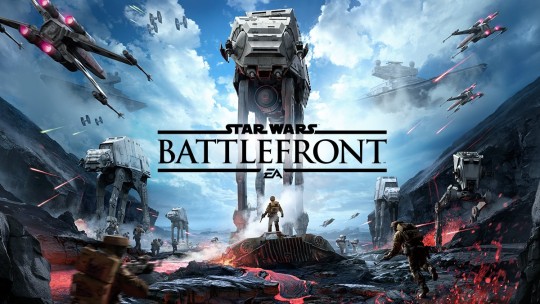
EA rebooted the Star Wars Battlefront series (2005′s Star Wars: Battlefront II has to be one of my most played video games) and released the new Star Wars Battlefront in November 2015. Critics acknowledged the game’s great graphics and visuals, but it quickly became apparent that the game lacked content. The hero and villain rosters were very limited, and the game only included content from the original trilogy, not the prequels.
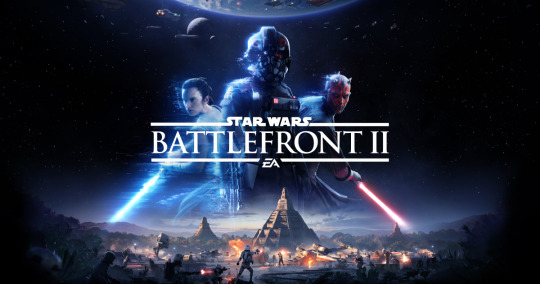
Then came EA’s disastrous Star Wars Battlefront II, the repercussions of which shook the gaming world. Released in November 2017, Battlefront II had some promise. It was the first game since the Disney takeover to feature a single-player story mode that was canon to the film series. The game also contained content from the prequel, original, and sequel trilogies. Additionally, EA greatly expanded the hero and villain rosters. However, EA showed it true colors with the game’s loot boxes, which could award players significant gameplay advantages if they purchased them with real money. Essentially, the game turned into a pay to win system, thereby making players who did not purchase loot boxes feel so disadvantaged that Battlefront II virtually became pay to play.
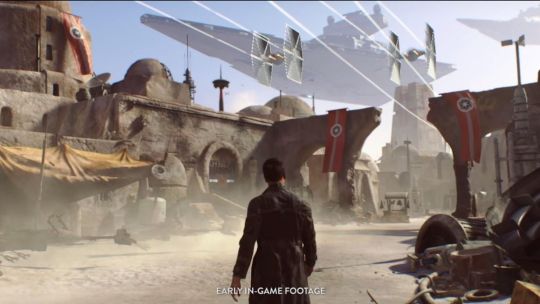
Although Visceral Games, the studio behind the Dead Space series, was developing a single-player Star Wars game, even getting to the point in the development process where they could tease everyone with in-game footage, EA canceled the game and shut down the studio. Not counting the Lego Star Wars games and mobile games, EA’s Battlefront games were the only new Stars Wars video games on the market, an astonishing reality compared to the rate at which LucasArts used to produce games for the franchise.

Eventually, EA finally came to its senses and assigned a single-player action-adventure Star Wars game to Respawn Entertainment, the studio behind the Titanfall series. Former Santa Monica Studio employee Stig Asmussen served as game director, and heavy-hitting talent like writer Chris Avellone, perhaps best known for his work on Fallout: New Vegas, joined the project. Finally, Respawn released Jedi: Fallen Order in November 2019 to much critical acclaim.
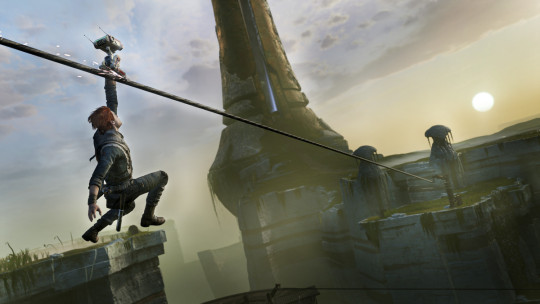
Now, with that long-winded background introduction establishing the recent state of Star Wars video gaming out of the way, let’s get into the real reason why everyone is here. What did I think of Jedi: Fallen Order? I am usually well behind on newer video game releases, but our current state of affairs with the global pandemic has afforded me a bit more time to dust off my controller. Having just beaten Fallen Order earlier this week, I have plenty to say about the game. (I even made a pros and cons list! Can you tell I have also been spending my time watching the misadventures of Leslie Knope and company in Parks and Rec?)
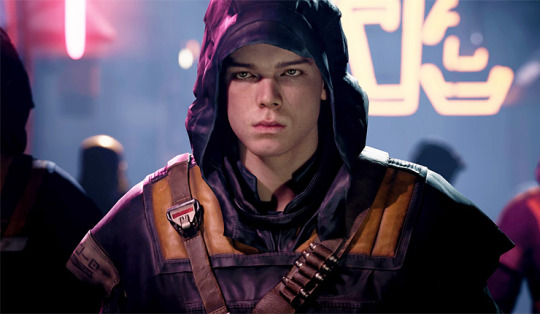
At its core, Star Wars is about family, friendship, and good versus evil, so let’s start by talking about this game’s characters and plot. (Don’t worry; I won’t spoil anything from the story.) Fallen Order nails the spirit of Star Wars. Set five years after Revenge of the Sith, players control Cal Kestis, a Padawan forced to keep a low profile after the Jedi Purge. Cal lives on the planet Bracca, where he works as a scrapper salvaging ships from the Clone Wars. Kudos to the game here. I stopped a couple of times just to admire the visuals of Bracca. It was definitely a “wow moment” seeing TIE fighters shriek by overhead and watching a Separatist ship descend from the atmosphere. One day, Cal taps into the Force for the first time since Emperor Palpatine’s Order 66 to save a friend from certain death from a workplace accident. Unfortunately, an Imperial probe droid records the incident, alerting the Empire of a Jedi fugitive. Two Inquisitors quickly arrive on the scene to track down the Jedi. Introduced in the animated series Star Wars Rebels, the menacing Inquisitors are an evil organization of Force-sensitive beings, some of them former Jedi, who have been tortured and turned to the dark side by Darth Vader and the Empire or otherwise willingly joined the organization out of hunger for power. They are tasked with hunting down surviving Jedi in hiding and others exhibiting Force potential. Somehow, Cal has survived this long even though he still carries around his lightsaber with him everywhere! When the Inquisitors corner him, he literally just pulls it out of his pocket! How has no one ever noticed it before? Did none of the Imperial probe droids floating around the planet ever take a snapshot of the weapon? Plot holes aside, two new characters, Greez and Cere, rescue Cal from certain doom at the hands of the Second and Ninth Sisters and ferry him off world.
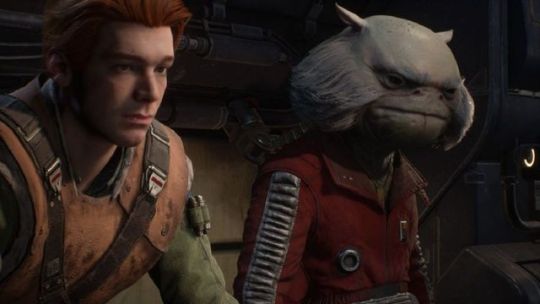
Cere is a former Jedi who held the role of Seeker in the Order. A Seeker located infants with Force abilities who could be taken to Coruscant and trained in the Jedi arts (think the good version of the Inquisitors). Greez is a starship pilot with a bad gambling habit, a green thumb, and an insatiable appetite. Cal finds a small droid named BD-1, who reveals a message from Jedi Master Eno Cordova, detailing the existence of a hidden Jedi Holocron containing a list of Force-sensitive children across the galaxy. In the wrong hands, this list could lead to the children’s demise. Cal and Cere want to use the list to rebuild the Jedi Order. Thus begins the race between the Empire and our crew of ragtag misfits to secure the Holocron.
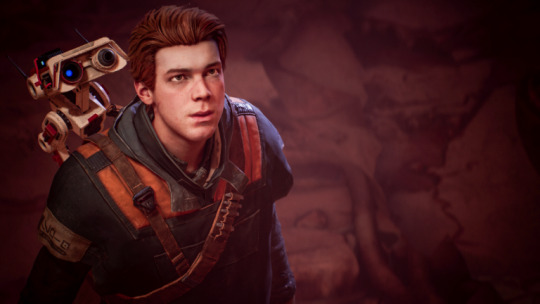
Overall, the story is good, great even for recent Star Wars standards. It fits the Star Wars cannon very well, and I loved the nods to the Clone Wars, mentions of obscure characters, and the foreshadowing of future events. Some moments elicit chuckles from the appropriate Star Wars humor, while others go to some truly dark places. The way the game tackles Order 66 earns it extremely high marks from me. The developers need to be applauded for bringing in new and relatively unknown planets that we have not really had the chance to explore before. There is no Hoth, Jakuu, or the like to be seen here, thankfully. Star Wars is a big galaxy; it is about time we saw different parts of it. We have spent more than enough time on Tatooine. The planets we do visit feel alive. Each one has a different color palette, climate, weather pattern (although the developers may have been a little heavy-handed on the fog in a few of the locations), and, of course, flora and fauna.
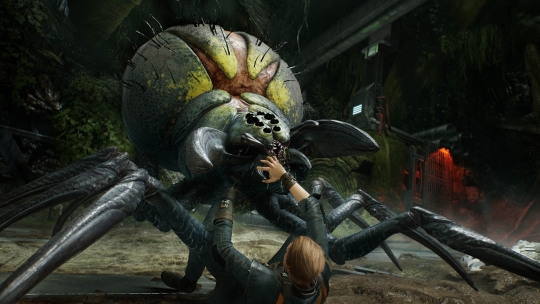
Cal fights everything from annoying rat creatures to ram-like slugs, from giant venus fly traps to trampoline spring-plants. Players can even collect plant specimens on different planets and plant them in Greez’s terrarium, which was a nice little way to take a piece of each planet with you on your journey. Oh, and the spiders. Cal has to kill tons and tons of spiders. Again, this is Star Wars! There is a whole galaxy at your disposal full of creatures that look like whatever your imagination can dream up, and the best we get is different species of spiders? That is probably nitpicking, but it felt like it was worth pointing out.
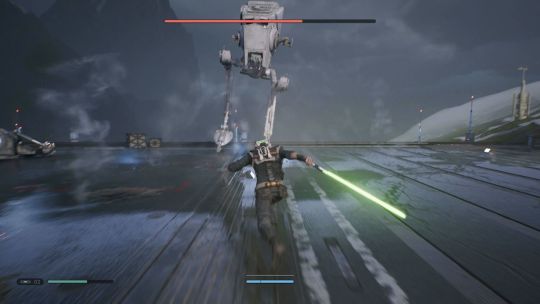
When it comes to the Empire, however, the variety is fantastic. Of course, the run-of-the-mill standard stormtroopers are here, but there are also variations like shock baton-wielding scout troopers, flame troopers, and the dangerous Purge troopers, essentially the special forces of the Inquisitors. The chatter between the troopers is great. Before they spot him, Cal can overhear them talking about their notorious accuracy, the planet’s hostile wildlife, or even mundane topics like food rations. Once Cal starts fighting them, they often taunt him, full of confidence in their abilities, but then they come to the realization that they are facing off against a Jedi. The confidence in their voices gradually turns to panicked fear as Cal slices through their numbers. By the time Cal gets to the last trooper standing, that trooper will regularly plead for his life or confess how scared he is. Every once in a while, the Empire will even throw AT-ST walkers at Cal, which are a fun enough challenge, though the strategy to defeat them becomes clear within a minute or two, and players are never forced to change up their tactics. I do love that after Cal destroys the walker, the trooper will crawl out of the wreckage and start shooting at him. Nice touch!
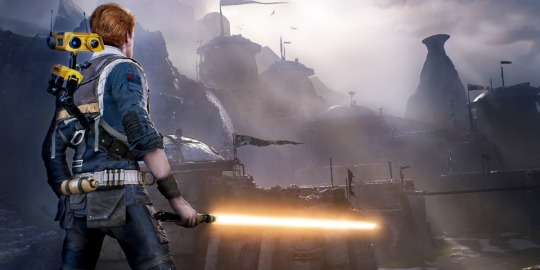
With all that said, the story is not perfect. In fact, once or twice it just feels dumb. For example, Cal goes on this grand mission seeking out an important leader in hiding, and when he finally encounters him, they exchange maybe one full sentence before the leader gifts Cal a rebreather so that he can swim underwater. You are telling me I conquered various obstacles and enemies, traversing across multiple planets all to get...a rebreather? This whole section could have been cut out and streamlined so that the storyline goes directly to the main setpiece of this planet I am talking about. Have one of Cal’s crewmates give him a rebreather and send him on his way instead. Regardless, at least the back and forth traversal gives players another chance to board the ship, ascend from the planet, and blast off into hyperspace. Seeing that never got old.
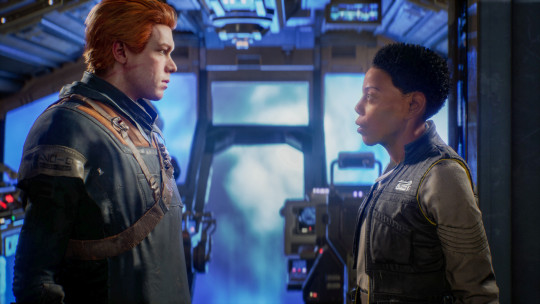
Respawn and its writers did a great job with these characters, including one of the Inquisitors (the other one is just kind of...meh). I enjoyed getting to know my crew, but I wish they had a little more to do in the game. In reality, they just stay on the ship 95 percent of the time while you are out running around on your mission (not that I entirely blame them...it is a cool ship). The conversations between these characters were usually good, but sometimes Cal would not mention huge, seemingly significant events or people he ran into to his crew! For a cinematic franchise like Star Wars, this game could have used a couple more cutscenes. The game often feeds the plot or a character’s mindset to players by making them idly stand near a crewmate and tapping R3 a handful of times to get them to cough up a couple of lines of dialogue.
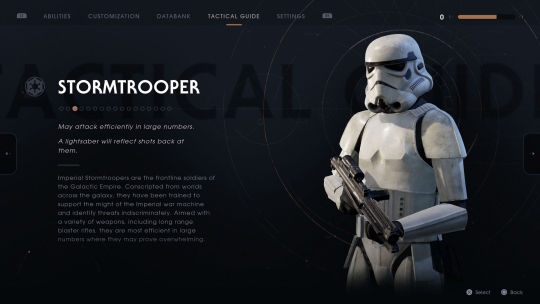
As is to be expected from a Star Wars product, the game’s music is terrific. Gordy Haab and Stephen Barton composed the score and recorded with the London Symphony Orchestra and the Bach Choir of London. Mongolian folk metal band The Hu also wrote and recorded a song that is featured during a couple of prominent portions of the game. The song lyrics were written in Mongolian and then translated into a fictional Star Wars alien language. The music compliments and elevates the game’s setpieces, with one standout part reminding me of Thor: Ragnarok. A couple of times, the game goes full John Williams to really make some moments hit home, and boy does it work! Hats off to Respawn for putting in this much effort in regards to the music for the game.
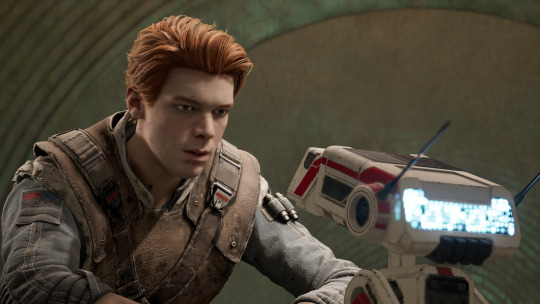
Getting into the gameplay, Fallen Order is an amalgamation of several other games. Dark Souls, Zelda, Uncharted, Metroid, Castlevania, Sekiro, heck even Sonic...they are all here in some form or fashion. Unfortunately for Fallen Order, it does not elevate the features it borrows from those games. The biggest reason? The bugs. Oh my goodness the bugs. How can a blockbuster release like this have so many bugs? Maybe it had something to do with EA or Disney wanting to push the final product out before the release of The Rise of Skywalker the next month, but the amount of bugs in this game are simply unacceptable. While none of them led to a complete game crash, I definitely caught myself grumbling, “I hate this game,” with my frustration levels constantly reaching the scorching temperature of Mustafarian lava, especially considering Fallen Order’s inexcusably long load times. Seriously, the load times after dying are so long that I had enough time to run to the bathroom, heat something up in the microwave, or make a cup of tea (to help relax me from this rage-inducing game) before the game finished loading. How can I lift off from a planet and travel through hyperspace faster than the game can respawn me after dying? It is not just dying, by the way. The game developers think they cleverly hid load times behind elevator rides, but that did not work either! At least throw in some elevator music or comm chatter if you are going to make me stand there for so long!
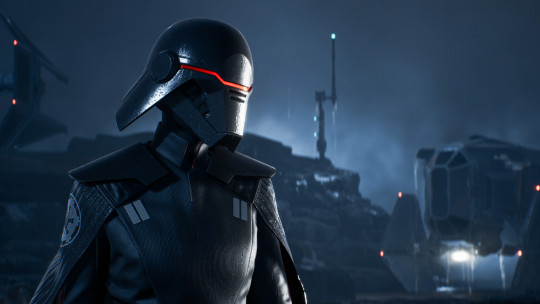
One time, I fell through the level to my death while walking on what was 100 percent solid ground. Speaking of solid ground, or should I say the lack thereof, enemies continued to fight me while clearly hovering in thin air when they should obviously be plummeting to their death. Woe is me if I tried to reach them, though, because my Jedi character must not have that ability, leading to, that is right, more death falls for me as the enemy looked on from his invisible sliver of ground above. If I was lucky enough to have an enemy remain in my relative vicinity and not stand off a ledge, that enemy had a chance of pinning and glitching Cal against a wall, leaving me trapped until I died from the beating. The enemy who kills Cal glows gold until players shave off a piece of that enemies health, which is great, but that means players cannot see that enemy flash red when he uses an unblockable attack. How could Respawn not notice this error when it is such an important component of the combat? For all the aggressive enemies with magical glitching powers, there were also those that would have a change of heart mid-combat and go pacifistic on me. I found this especially common in the later game and on one planet in particular with ranged enemies. They would fire at me, I would block their shot back at them and injure them, and then they would just stand there staring at me. It was really bizarre and made me uneasy turning my back on them to explore the area. I also experienced my health and Force bars completely disappearing from the screen. The first couple of times it happened, I thought it was intentional and meant that Cal could not die for that sequence of the game. Wrong! So much for thinking I was momentarily invincible with unlimited Force powers. This bug was especially crippling during big boss fights, as you can imagine. Respawn throws in some quick time events once in a while where players have to press the correct button in a very short amount of time. For the most part, I did not mind these, but one exception got my blood boiling. Cal is fighting a giant creature and ends up free falling. The game requires Cal to land in a very, very precise spot and pull of a quick time event. I cannot count the number of times I fell to my death during this part because of how finicky the game was being. Cal conveniently stumbles across every single icy or muddy slide in the galaxy during his travels, a way for the game developers to disguise a way to get players from point A to point B quickly, but these slides are also quite particular with when players jump and where they land. Another good portion of my deaths came from Cal not making a jump on one of these slides when he clearly had the distance or him seemingly landing and making the jump only for him to glitch and then fall backwards into a never-ending dark chasm. The game developers may have thought players would enjoy these slides, but I came to dread them.
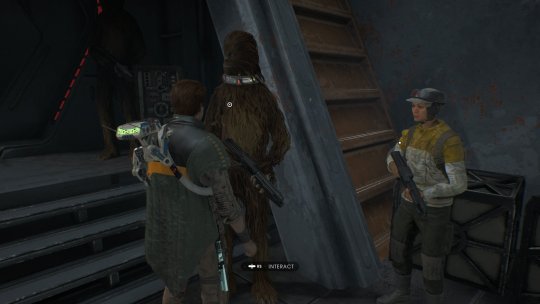
The worst game bugs by far, however, dealt with frame rates and level textures. Not contained to one section or even one planet, unfortunately, garbage frame rates wreak more havoc across the galaxy than the treacherous Empire. I am telling you the frame rate is absolutely abysmal in this game. I can forgive a drop in frame rate if it happens a couple of times, but it is like it is a built-in gameplay feature of Fallen Order. It was maddening! How can Respawn expect me to properly block or dodge if the game cannot even keep up with my movements or camera adjustments? Texture pop ins and clipping were also recurring issues. One time, I noticed a soldier’s helmet load in late. Another time, a Wookie’s fur took a while to fill up the character model. (By the way, the Wookies in this game look horrendous.) Sometimes, it would get so bad that the game would just pause completely so that it could load in the content of the area. I honestly thought the game had crashed and was about to reboot the console before everything stuttered back into place and Cal got moving again.
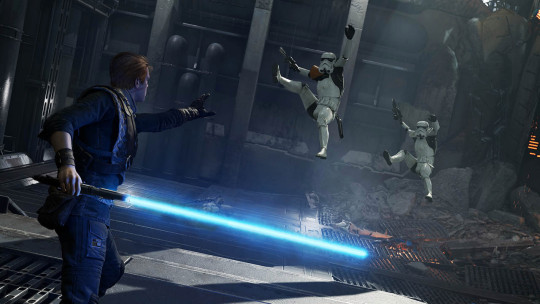
I have done a lot of ranting about the game’s flaws the last few paragraphs, so let me get back to some things I did like. The combat works well. I cannot begin to tell you how satisfying and occasionally outright hilarious it is to Force push a trooper off a ledge, especially when he is standing there trying to intimidate you. I had so much fun simply blocking stormtroopers’ laser bolts right back at them. Best of all, I started taking every opportunity I had to pull enemies toward me, especially ones perched up on higher vantage points, and stab them straight through with my lightsaber. The lightsaber boss fights were a highlight of the game. Players feel the weight of every strike and every struggle when the blades cross.
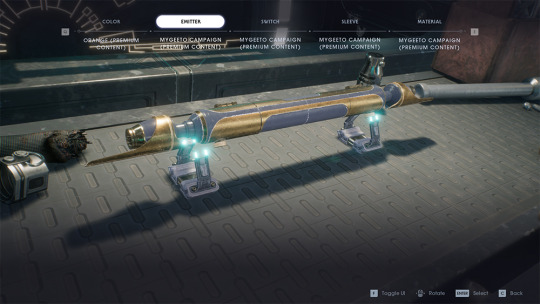
In addition to Cal’s lightsaber, he also has his Force powers at his disposal. He starts out with Force slow and gradually adds other abilities, such as push and pull, as the game progresses. Players may question how Cal, a Jedi, can struggle with a squadron of stormtroopers or the local wildlife, or they may ask why he does not start with all of his Force abilities, but it all makes sense when you consider that Cal has to rebuild his connection to the Force. He has not used it since he was a child, after all. It makes sense that this amateur padawan who did not complete his training runs into a tough time in combat. When Cal does unlock new Force abilities, the game cleverly flashes back to show Cal’s master teaching him that ability during his training before Order 66.
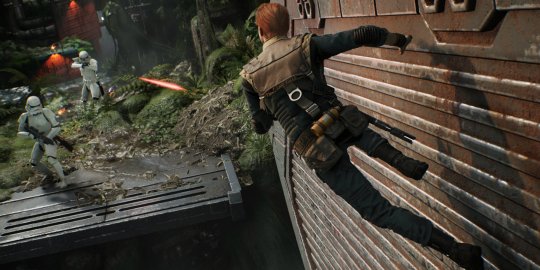
Players can further bolster their Force, survival, and lightsaber abilities through a skill tree. Skill points accumulated from defeating enemies grant players access to increased health, stronger stim potency, increased lightsaber damage, and mass push, to name a few skills. Even later on in the game when most of your Force abilities have been unlocked and Cal has found a couple of fun new gadgets, the game still feels balanced. Cal never feels overpowered like Starkiller in The Force Unleashed games. Even when they are maxed out, his Force push and pull do not appear to have much of an effect on bosses. At most, they will briefly stagger them, whereas when they do it to Cal, he will comically tumble over like Palpatine when Yoda Force pushed him across his desk in Revenge of the Sith.

I will argue that a couple of Force abilities become outdated later in the game. At one point, I forgot I even had Force slow because I had not used it in a while. I only remembered it while I was trying to solve a small puzzle to escape from an area and had exhausted all other options. Can you blame me for always wanting to Force push enemies off a cliff instead of slowing them down?
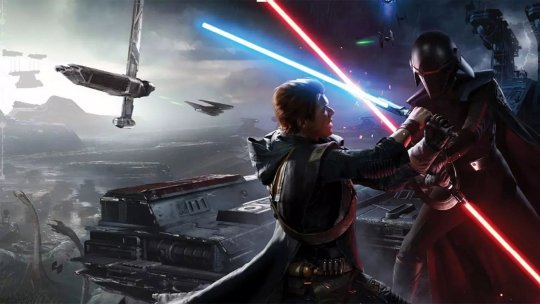
I appreciate that the game developers allow players to adjust the difficulty at any time. I started out at a higher difficulty and found myself dying before I even left the first world, Bracca. However, I persisted. That is, until I faced off against Oggdo Bogdo and his trash hitboxes. Players can stumble upon Oggdo Bogdo very early in the game. Oggdo Bogdo, a carnivorous amphibian creature, is a boss variation of the more common lookalikes of him. There is a similar optional alpha creature boss encounter on most planets Cal visits. No matter how hard I tried or how many different strategies I employed, Oggdo Bogdo proved to be too tough for me, and after waiting through countless death loads and having to run back over to Oggdo Bogdo’s location time and time again, I decided to lower the game’s difficulty, allowing me to finally slay this ugly creature.

Like Sekiro’s sculptor’s idols or the bonfires in Dark Souls, Fallen Order relies on meditation circles as its save points. Cal can rest to full health and restore his Force meter as well as restock health stims. Meditation circles also allow players to access the skill tree and spend skill points. These meditation circles implement a good risk versus reward system. If players choose to rest at a meditation circles, all of the enemies he or she has defeated since the last rest will respawn. I regularly found myself weighing the pros and cons of my situation, questioning if I should heal and get more stims or push on so that I did not put more enemies in my path.
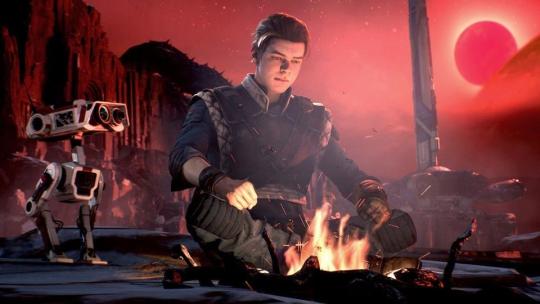
While I am on the subject of these meditation circle save points, I have to point out that Fallen Order does not have fast travel. Instead, it encourages players to backtrack and explore previously inaccessible areas that they can now open with their newly unlocked abilities. This was fine for a while, but I quickly grew tired of it when I noticed how much of the backtracking had me slowly climbing, traversing across narrow walkways that Cal has to carefully balance on, or shimmying over narrow cliff edges. This is padding by exploration. While the vine and rope swinging was fun, especially with Force pull, I stopped enjoying climbing up a conveniently placed arrangement of vines and the like by the halfway point of the game, if not earlier. I will admit that I believe Fallen Order contains just the right amount of playtime, but this stuff had it teetering on the too long side. This is compounded by one important world that players have to visit multiple times that feels too big. The developers’ creativity and excitement got a little out of hand here. Just pull up the map of that world to see how unwieldy it is. When I completed the story on a planet like this, I felt exhausted rather than triumphant. Why can’t I hail my crew to come pick me up in the ship where I am rather than having to run across the entire planet again to get back to the landing pad, fighting the same enemies I already cleared out a couple of hours ago? The game developers do provide a few shortcuts that players can open, but the amount of time they end up saving is negligible in some cases.
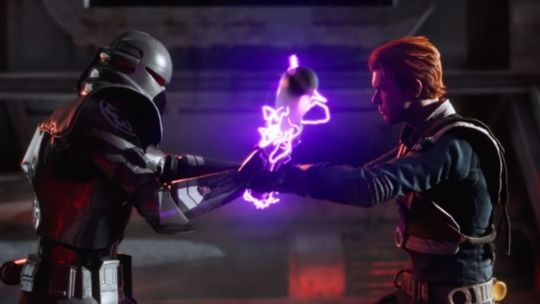
I was disappointed that there is no real endgame content. Sure, players can continue to explore or fight enemies for the heck of it, but the developers could have done so much more. After players unlock every ability in the skill tree, the skill points they collect after that become meaningless. I will confess that I chose to rush past enemies to get to my next destination rather than waste time or energy fighting them for the 50th time after I had filled out my skill tree. Why not unlock fast travel after players beat the story? How about adding in a fighting arena where players can test their maxed out skill set against waves of enemies? Heck, let the players unlock dark side Force abilites like Force lightning or Force choke after they complete the story so that whatever they do then is not canon. I would have continued to gather skill points for that!

Now I mentioned Cal’s droid companion BD-1 earlier, but BD-1 deserves a special shout-out. BD-1 is spunky and lovable. Not only does BD-1 shoot Cal stims to heal him, the droid also provides hints for puzzles, scans enemies to suggest tactics to take them down, plays recordings that push the story along, and helps Cal navigate the worlds by hacking locked doors or carrying him across zip lines. Additionally, BD-1 projects the holomap of each planet, which is vital to keeping track of where Cal is in relation to the ship or his destination. The holomap itself is decent. Color coding helps players see what is inaccessible and what is unlockable, but for the bigger worlds with multiple levels it can be quite a burden to scroll across. Not to knock BD-1, but I grew impatient waiting for the droid’s animation that it goes through every single time Cal finds a hidden chest. Cal opens up the chest, BD-1 jumps in and rumbles around, and then jumps back out with whatever was inside it, all while Cal repeats the same lines of dialogue, like “Woah, buddy!” or “Careful now.” or “What did you find in there?” There are 107 chests in the game. Let that sink in.
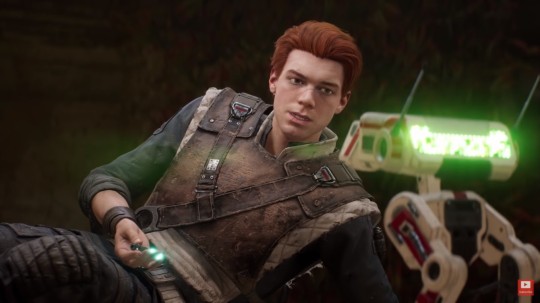
These chests are one of the rewards for exploration. They contain items that players can use to customize Cal, his lightsaber, BD-1, or the ship. While this is motivation enough at the beginning of the game, this customization serves no purpose beyond cosmetics. It comes down to which poncho or paint job players find more aesthetically pleasing. I love that the game developers let players change lightsaber colors, but I wish these different ponchos and lightsaber parts had some sort of effect on the gameplay, such as restoring more of Cal’s Force meter or refilling a small amount of health after defeating an enemy.
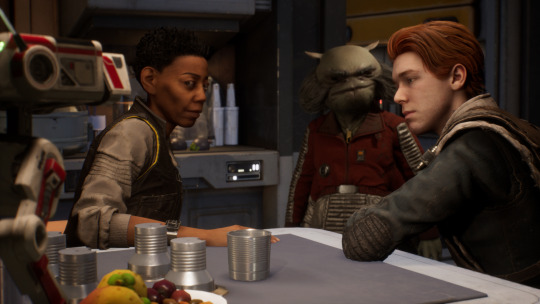
Force echoes serve as another reward for exploring. Cal uncovers lore from past events by reaching out through these Force echoes. They rounded out the worlds nicely and added to the feeling that they were lived in, real places in the galaxy. The final element of exploration is BD-1′s scans. While you are running around, BD-1 will occasionally crawl down off Cal’s back and scramble over to something the droid wants to scan. These unlock data entries on the planet, its flora and fauna, the Empire, or other characters. This is all fine and dandy, but the level of exploration the game developers expect players to do with all of the backtracking involved needs to reward me with more than just basic lore, especially when some of the entries feel like the writers did not even try when they wrote them. Is an entry on a storage crate telling me that the Empire stored materials in it really worth stopping to scan? I think not. Instead, the game developers could have really motivated me to explore more by throwing in a few interesting side quests or fun Easter eggs. Maybe players could stumble upon active Imperial transmissions and overhear characters like Tarkin or Thrawn. Maybe players could find an abandoned Imperial camp and watch Imperial or Rebel propaganda over a holofeed that was left on. They could have even hidden a squadron of battle droids that were forgotten from the Clone Wars. So many possibilities!

Jedi: Fallen Order is far from a perfect game and has so much unrealized potential, but I would not trade away my time with it. For every flaw, I can point to a positive, and vice versa. At the end of the day, I got to be a Jedi, and that is good enough for me.
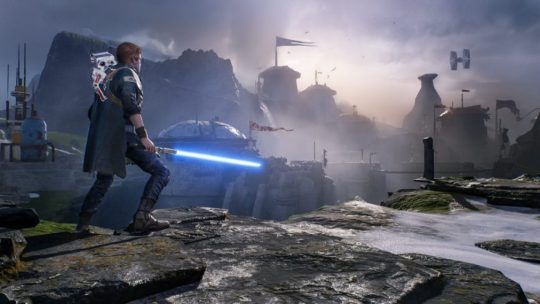
6 notes
·
View notes
Text
Movie Mania: Top 10 of 2019
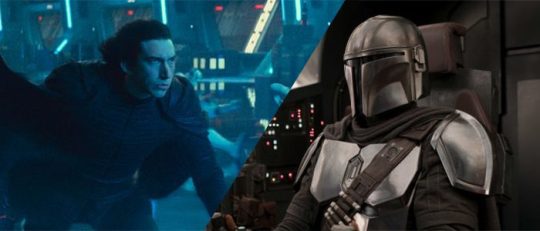
Another year of movies, another year a Star Wars film sadly did not make the cut for my list. With 2019′s The Rise of Skywalker, it is absolutely clear that the folks at Disney/Lucasfilm had no roadmap for this sequel trilogy whatsoever, which is an utter shame given their abundance of resources and proven ability to produce quality content as seen with the success of The Mandalorian.
In a rare occurrence, I saw most of the films nominated in the major categories for the Academy Awards. In fact, the Academy nominated seven out of my top 10 films for at least one award. I would say that 2019 was a markedly stronger year for film than 2018, so I have allowed myself a couple of extra honorable mention slots. One quick housekeeping note before I unveil my 2019 list: I’m retroactively moving Game Night and A Quiet Place ahead of Bohemian Rhapsody and Green Book on my 2018 list. Now it is time to jump into my favorite films of 2019. (No spoilers!)
Honorable Mention: Joker

Nominated for a whopping 11 Oscars (equaling The Lord of the Rings: The Return of the King [which swept all 11], The Godfather [Parts 1 and 2], West Side Story, and Saving Private Ryan, among others), Joker should get an award for most divisive film of the year. Directed by Todd Phillips (yes, the same guy who directed The Hangover), Joker is a psychological thriller staring Joaquin Phoenix that provides a possible origin story for Batman’s arch-nemesis. Before becoming the Joker, Phoenix’s character, Arthur Fleck, dreams of becoming a famous stand-up comedian. His gradual descent into insanity, nihilism, and violence mirrors the chaotic anarchy slowly consuming the decaying Gotham City as its citizens revolt against the wealthy and better-off.
Despite the concerns surrounding Joker that it would inspire real-world violence, the film has grossed over one billion dollars, making it the first R-rated film to do so. Phoenix disappears into his role, and Icelandic composer Hildur Guðnadóttir’s haunting score brilliantly conveys the inner pain and turmoil in Arthur’s mind as well as the dying light of Gotham. (Guðnadóttir made history as the first solo woman to win a Golden Globe for best original film score.) In an interview with Forbes, Guðnadóttir explained the concept of her turbulent score. “In the beginning, it’s almost just like a solo cello, but in reality, there’s a whole symphony orchestra behind the cello. It’s almost like this hidden force that he doesn’t know about and as he starts to kind of discover what he’s gone through and what’s actually happened to him, the forces become louder and more aggressive. The orchestra takes over and almost eats the cello alive.”
Although Joker is a powerful film and and makes strong statements about mental illness and poverty, its gruesome, unhinged violence can be hard to handle. Everything is shown in graphic, bloody detail, making the thought of a repeat viewing undesirable. I also could have done without a couple of choices that were made involving the Waynes, especially one scene that we have seen over and over again.
Honorable Mention: Ford v Ferrari
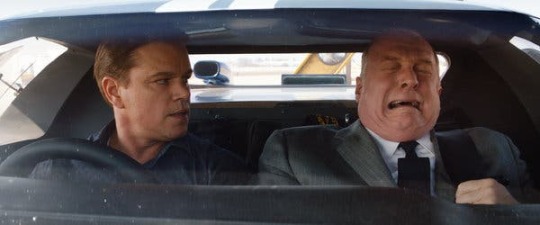
As someone who really does not care all that much about cars and their inner workings, this film did the one thing it needed to do for me: It made me come out exclaiming, “Yeah, cars!”
In all seriousness, James Mangold’s sharp direction smartly focuses not on the sport of racing but rather on its big personalities. Those personalities gripped me so much that I immediately started researching their lives after the film ended. The plot follows Carroll Shelby and Ken Miles as they are dispatched by Henry Ford II to dethrone the dominant Ferrari racing team with an American-made car. Along the way, they have to deal with mechanical setbacks and corporate interference to achieve their goal.
This film’s cast is outstanding. Matt Damon and Christian Bale’s deep but sometimes heated friendship as Shelby and Miles is the heart of the film. Tracy Letts as Ford II and Josh Lucas as Leo Beebe, senior executive vice president of Ford, give off the perfect amount of corporate stench to make them unlikable but not unbelievable. 14-year-old Noah Jupe comes off his great performance in 2018′s A Quiet Place to deliver another stellar outing here as Miles’ young son. However, Jon Bernthal felt a bit underused as Lee Iacocca, vice president of Ford, and Cautriona Balfe’s role as Mollie Miles, Ken’s wife, though well-acted, felt like it could have been removed entirely without much consequence to the film overall.
With a moving score and great cinematography, Ford v Ferrari unexpectedly tugged at my heartstrings, and the infectious passion Shelby, Miles, and these other characters have for cars managed to rub off on me, which might be the ultimate testimonial for this film.
Honorable Mention: 1917

1917 has been hyped as “that World War I movie with one continuous take,” but it is so much more than that. World War I was a stark clash between 20th-century technology and 19th-centry tactics. With soldiers largely trapped in trench warfare, conflicts commonly turned into battles of attrition. That does not exactly translate into exciting cinema, which explains why there are so many more films about World War II. Karl Vick acknowledges this in Time magazine, writing, “motion pictures do require a certain amount of motion, and the major accomplishment of 1917...may be that its makers figured out what the generals could not: a way to advance” (Karl Vick. Time. "Escaping the Trench". January 20, 2020. Page 38-41.)
What more can one say about Roger Deakins at this point? What he and director Sam Mendes created with the cinematography of this film is nothing short of fantastic. With its cinematic achievement of what is made to look like one continuous shot, 1917 presents most of its actors with only a small amount of screen time to make an impact, and they are more than up to the challenge. Mark Strong, Andrew Scott, Benedict Cumberbatch, Colin Firth, Richard Madden, and others all leave a lasting impression with their extremely short encounters with the film’s main characters, Lance Corporal Blake (Dean-Charles Chapman [Tommen!]) and Lance Corporal Schofield (George MacKay). Mendes places the bulk of the weight of the film on Chapman and MacKay’s shoulders, and they luckily carry it with natural ease. Working together with the one continuous take style, Thomas Newman’s riveting score keeps viewers on the edge of their seat and makes them feel like they are part of this life-or-death mission with the lance corporals.
If I had to list a couple of flaws with the film, I would say that one of the characters feels like he has untouchable plot armor. It almost seems like Mendes and company hope that the awe-inspiring cinematography will make viewers forgiving or even ignorant of the amount of times this character should be fatally shot or even injured, but I understand that some artistic license is necessary to convey the story they want to tell. The nature of the cinematography employed here also makes it difficult to get a grasp on distances and positioning because the shot is never really allowed to zoom out or give an aerial view since it is fixed on the lance corporals.
Unfortunately, I experienced this breathtaking film with one of my worst theater audiences of 2019. Much of the film was drowned out by the ladies sitting next to me who felt the need to constantly narrate everything that was happening on screen. “He’s going down into the trenches.” “Look! He’s jumping into the water.” Etc., etc. This is not your living room, people! If people want to talk over a film like this and provide running commentary and narration, they should wait for its home release. Your fellow audience members are not blind, and we would greatly appreciate it if you remained quiet.
#10: Spider-Man: Far From Home
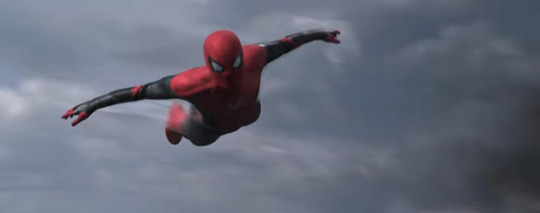
After Avengers: Endgame released earlier in the year, the spotlight promptly shifted to Jon Watts’ Spider-Man: Far From Home, and he did a tremendous job with this film. Serving as both the epilogue to Endgame and the sequel to Spider-Man: Homecoming, Far From Home effectively closes out phase three and sets the stage for the next era of the Marvel Cinematic Universe. Far From Home is the first Spider-Man film to pass the billion-dollar mark, and it is not hard to see how it managed to pull that off. The returning cast led by Tom Holland as Peter Parker/ Spider-Man retains its great chemistry, and Jake Gyllenhaal is the perfect choice to play Quentin Beck/ Mysterio, complete with a great theme from returning composer Michael Giacchino. Fans of Spider-Man have been waiting forever to see this character on the big screen, and I am happy to report the film does him justice. Watts especially knocks his character out of the park with a certain sequence about halfway through the film that I was beyond thrilled to see.
The film is set immediately after the events of Endgame and finds Peter and his high school class taking an international field trip to Europe. The writers do an amazing job explaining the ramifications of Endgame, and the way they weave plot details and character motivations together all the way back from phase one of the MCU is mind-blowing. Watts realizes that there needs to be some levity after Endgame, so this film is full of laugh-out-loud humor and charmingly awkward teen road-trip set-pieces. Oh, and did I mention it has one of the best mid-credits scenes in the entire MCU that dramatically alters the characters’ futures going forward?
#9: Toy Story 4

I have a deep personal connection to the Toy Story franchise. I grew up watching Toy Story and Toy Story 2 on repeat, and Toy Story 3 came out during my senior year of high school. Those who have seen that film know why it especially resonated with me at that age. In my opinion, Toy Story 3 ended the trilogy perfectly; there was no way another film could top its emotional ending. When I heard that Pixar was coming out with Toy Story 4, I was not going to pass up another opportunity to hang out with Woody, Buzz, and the gang, of course, (neither was anyone else, seeing as this is the highest grossing film of the franchise) but I set my expectations to a low, manageable level.
Although I was disappointed that Buzz and the rest of Andy’s old toys were not as heavily involved in the plot and did not have all that much time to interact with Woody, I was impressed overall with the new characters and was happy to see Bo Peep return. In this film, Bo breaks through her porcelain design and exhibits a character with total agency over her choices. Everything about her redesign and the way she carries herself is awesome. Keanu Reeves’ Canadian daredevil Duke Caboom steals every scene he is in, and Christina Hendricks’ Gabby Gabby gave me terrifying flashbacks to Talky Tina from the “Living Doll” episode of The Twilight Zone.
As audiences have come to expect from Pixar, the film delivers stunning animation and a signature big emotional gut punch, which it earns it by building up genuinely heartwarming moments throughout its run time that address themes such as the difficulty of change, the beauty of imperfection, the mystery of creation and the meaning of life, and the importance of serving others. As Matt Zoller Seitz writes for RogerEbert.com, “This franchise has demonstrated an impressive ability to beat the odds and reinvent itself, over a span of time long enough for two generations to grow up in. It's a toy store of ideas, with new wonders in every aisle.”
#8: Doctor Sleep

Writer-director Mike Flanagan took on the unenviable task of pleasing two different parties when Warner Bros. hired him in January 2018: fans of Stanley Kubrick’s The Shining from 1980 and Stephen King and fans of his books The Shining and Doctor Sleep. Somehow, he managed to pull it off.
After visiting the Timberline Lodge in Oregon, the location used in Kubrick’s film for the exterior of the Overlook Hotel, this past summer, I decided it was finally time to watch The Shining. I can attest it is just as much a masterpiece as many people say it is. My favorite part: it is a horror movie that does not rely on jump scares. When I heard the Flanagan wanted to chop away at the horror genre’s reliance on jump scares, I was even more excited to see Doctor Sleep. Flanagan said, “When we were developing the project and when we were talking about the metered expectations audiences have about, in particular, jump scares and startles and the pacing of those, which we’re utterly uninterested in this film, I would say, ‘What’s your favorite jump scare in The Shining?’ There isn’t one. The same is true here. We used a lot of the lessons that Kubrick taught us about how to do a psychological thriller, a supernatural thriller, in a way that is more about suffocating atmosphere and tension than it ever is about the kind of traditional scares as we understand them today.”
It is well known that King really disliked Kubrick’s adaptation of his book. He disliked it so much, in fact, that he wrote and executive-produced a new version with the 1997 television miniseries. In his approach to Doctor Sleep, Flanagan first read King’s book, which was published in 2013, and then consulted closely with the author to reconcile the differences between the book and film version of The Shining. After reading Flanagan’s script, King felt like his least favorite parts of Kubrik’s film had been “redeemed.”
Set several decades after The Shining, Doctor Sleep reunites audiences with Danny Torrance, played by everyone’s favorite Jedi, Ewan McGregor. Danny continues to struggle with the childhood trauma he endured at the Overlook Hotel during the events of The Shining, turning to alcohol to numb the pain and his psychic abilities. Meanwhile, the True Knot, a cult of psychic vampires led by Rose the Hat (Rebecca Ferguson), is on the hunt for children with psychic abilities like Danny’s, and they are hot on the trail of young Abra Stone, played by Kyliegh Curran in her feature film debut.
With the benefit of having just seen The Shining a couple of months before this film, I was able to appreciate Flanagan’s careful attention to detail. He is clearly a fan of both King and Kubrick, but he does not let his admiration for them impede his own creative vision. He expertly balances original content with just the right amount of fan service and callbacks to The Shining. Even without jump scares, the film has plenty of horrifying moments, especially one involving young actor Jacob Tremblay that echoed in my mind long after the film had ended. Ewan McGregor is fabulous, as always, convincingly portraying Dan’s fight with his inner demons, and Rebecca Ferguson looks like she is having a devilishly good time as Rose the Hat. Above all, I was surprised to learn that this was Kyliegh Curran’s film debut. She is so comfortable on camera and has painted a bright future for herself out of the darkness of this film.
Doctor Sleep gave me all sorts of chills down my spine, induced by the eerie atmosphere of certain scenes as well as extremely well-timed tie-ins to its predecessor, that left me hungry for even more Stephen King stories.
#7: Once Upon a Time in Hollywood
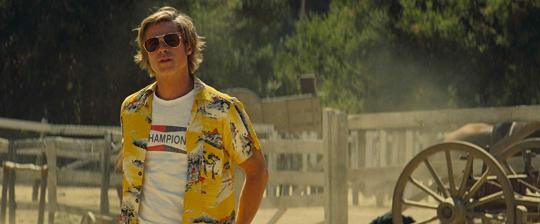
Set in 1969 Los Angeles, Quentin Tarantino’s ninth film stays true to its name and delivers an alternate version of events that unfolded in Hollywood that year. In addition to Sharon Tate, Roman Polanski, and the Manson Family, the film tells the story of fictional characters Rick Dalton and Cliff Booth. Dalton is a veteran Hollywood actor most famous for starring in a Western television series called Bounty Law who believes he is approaching the end of his career. Booth, a war veteran with a shady past, is Dalton’s best friend and longtime stunt double. Together, they attempt to navigate the final stretch of Hollywood’s Golden Age.
Leonardo DiCaprio and Brad Pitt work incredibly well together as Dalton and Booth, respectively, with neither star trying to outshine the other. Margot Robbie, on the other hand, does not get a lot of material to work with as Tate. (Do not tell Tarantino that.) Conversely, Julia Butters blew me away as Trudi Fraser, Dalton’s eight-year-old co-star in the pilot of a new American Western series. She more than holds her own acting side by side with DiCaprio.
Although the film moves at a slow pace, leaving me to wonder at times where this story was even going or if I was just watching a day in the life, Tarantino’s usual engaging, snappy dialogue entertains even when there is no real action happening on screen. With this being Tarantino, audiences have to accept his signature peculiarities, like close-up shots of feet, to be treated to another perfectly crafted soundtrack, complete with classic rock and roll, old-time DJ chatter, and period-accurate radio commercials. In the end, the slow pacing of Tarantino’s script actually helps enhance the heart-stopping standoff at the halfway point and the absurd payoff at the end. Clearly, this film is Tarantino’s passion project. In fact, he said it is “probably my most personal. I think of it like my memory piece... This is me. This is the year that formed me. I was six years old then. This is my world. And this is my love letter to L.A.” No wonder he publicly referred to it as Magnum Opus while he was writing it.
#6: El Camino: A Breaking Bad Movie

Written and directed by the creator himself, Vince Gilligan, El Camino serves as the epilogue to Breaking Bad, giving fans closure on certain questions and characters. Many favorites from the series return in some form or fashion (shout-out to Jesse Plemons for absolutely crushing his role here), but the focus always remains on Jesse Pinkman. Whereas Breaking Bad was Walter White’s story, El Camino puts Jesse center stage, and Aaron Paul gives one of the best performances of his career, fully tapping into his character’s desperate, damaged psyche.
Breaking Bad and Better Call Saul are two of my favorite television shows, and I think Gilligan is one of the best show runners in the business. He manages to incorporate the tone and atmosphere from the world of those two shows into this film seamlessly, and he rewards longtime fans with a nice amount of Easter eggs. Cinematographer Marshall Adams deserves so much praise for the jaw-dropping shots that grace the screen, especially the ones that show off the New Mexico landscape. He has an astonishing ability to make every frame look like a detailed painting. Editor Skip Macdonald should also be recognized for his work, particularly for the way his editing of Jesse searching for something in an apartment reinforces Gilligan’s non-linear revelatory style of storytelling.
El Camino does not waste any time with exposition, so someone who has not seen Breaking Bad cannot jump right into this film and understand what is going on. Then again, what rock have you been hiding under if you have not seen Breaking Bad at this point? What are you waiting for? Let this be your motivation to finally watch it, and then once you have made it through the series and El Camino, keep the good times rolling and watch Better Call Saul, which is just as good, if not maybe even a little better than, Breaking Bad.
#5: Jojo Rabbit
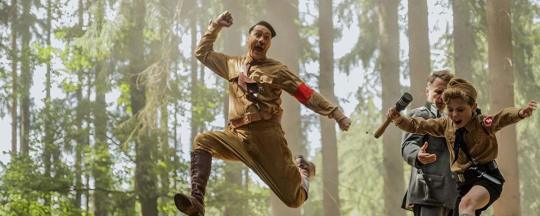
Only the whimsical genius of Taika Waititi could have concocted this irreverent, dark satire set against the backdrop of World War II Nazi Germany. Based on Christine Leunens’ book Caging Skies, Jojo Rabbit stars Roman Griffin Davis as the titular Johannes “Jojo” Betzler, a jingoistic 10-year-old German boy enrolled in the Hitler Youth. Jojo lives with his mother, Rosie, played by Scarlett Johansson. As far as Jojo knows, his father is fighting on the Italian Front, so he often turns to his imaginary friend, a wacky version of Adolf Hitler (Waititi), for advice and support as Germany becomes more desperate as the war starts to reach its conclusion.
Jojo Rabbit’s black comedy places viewers in plenty of predicaments in which they want to laugh, are not sure its entirely appropriate, but still end up doing so anyway. The film balances this out by keeping a good amount of heartrendingly emotional and genuinely sweet moments tucked up its sleeve. Waititi and Romanian cinematographer Mihai Mălaimare, Jr.’s visual storytelling is on a whole different level, carefully using ordinary imagery as subconscious foreshadowing, leading to one of the biggest breath-stealing shocks of the entire year that stopped my heart and rocked me to my core. Michael Giacchino seems to have been criminally overlooked by the Academy for his simultaneously jaunty and intimate score that adds yet another impressive layer to the film’s wide range of emotional beats. Living in a world fueled by hate, Davis, Johansson, and Thomasin McKenzie’s characters show how compassion and the willingness to try to come to a common understanding can change, and in some cases save, lives.
#4: Marriage Story

Writer-director Noah Baumbach paints what may be the most brutally honest picture of divorce I have ever seen on screen in Marriage Story. Before Marriage Story, I had never seen one of Baumbach’s films, but I get the sense from this film that he takes a very grounded approach to storytelling.
Marriage Story stars Adam Driver and Scarlet Johansson as Charlie and Nicole Barber. Charlie is an acclaimed theater director, and Nicole is his muse. Despite her acting skills, Charlie always receives all the praise, leaving Nicole to congratulate him from the back seat and contemplate what kind of professional movie and television acting career she possibly gave up to be with him. She also misses living in Los Angeles and being close to her family. At the center of this tenuous relationship is the couple’s young son, Henry. As things go from bad to worse in their relationship, Charlie and Nicole start down the path to divorce, initially wanting to approach everything amicably without involving lawyers, but quickly walking back on that as they begin to doubt each other’s motives and end goals, especially in regards to Henry.
Driver and Johansson both put on a masterclass of acting here, but I would have to give Driver my nod in choosing the stronger performance of the two. He is a tour de force in this film, unyielding to the unflinching camera. Alan Alda and Laura Dern keep pace with Driver and Johannson beat for beat as Bert Spitz and Nora Fanshaw, Charlie and Nicole’s lawyers. Baumbach smartly chooses not to wallow in the melodrama of the messy divorce, showing that small, flickering sparks of love still exist between Charlie and Nicole, maybe not enough to reignite the flame that brought them together in the first place, but enough to convince you that they still have a hope for some kind of happiness.
#3: Knives Out
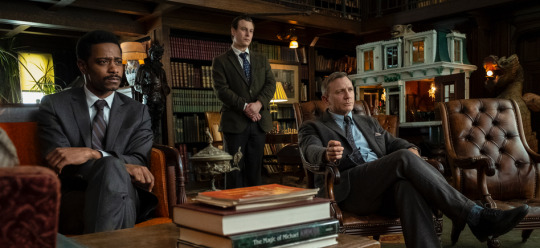
After the Internet firestorm that was Star Wars: The Last Jedi, Rian Johnson did the best thing he could have possibly done—he went far, far away from any established franchises, rounded up an all-star ensemble cast, and wrote and directed his own original murder mystery film. Through some ingenious plotting, Johnson revitalizes the entire genre and turns the classic whodunit on its head, all the while delivering some timely social commentary. Complete with Daniel Craig delivering a monologue about donut holes in a southern gentleman accent, Knives Out is an absolute delight.
The events of the film center around the Thrombey family, with the main mystery beginning after patriarch and rich crime writer Harlan Thrombey (Christopher Plummer) is found dead in an apparent suicide the morning after his big 85th birthday party with his family at his mansion. An anonymous source informs private detective Benoit Blanc (Craig) of Harlan’s death and hires him to investigate.
A huge fan of classical mystery thrillers and comedies, Johnson’s love of the genre is tangible, but he never allows the narrative to become overly meta, referential, or even reverential, for that matter. I have already mentioned Craig and how much fun he looks like he is having in his role as Blanc, but Ana de Armas breaks out as Marta Cabrera, Harlan’s caretaker, and is the heart of the film. The rest of this high caliber ensemble cast has its moments, and I only felt like a couple of the characters were completely disposable, such as Jaeden Martell’s Jacob Thrombey, for example.
Johnson keeps his audience on its toes for the entire film. Just when the solution seems obvious, he throws another twist at them to throw them off the scent. It is a true shame that Knives Out received only one nomination from the Academy, but Johnson more than deserves that nomination for best original screenplay.
#2: Avengers: Endgame

It has all led up to this, the culmination of phases one through three of the Marvel Cinematic Universe. Admittedly, I was not the biggest fan of Avengers: Infinity War; I did not care for its overall slow pacing. Avengers: Endgame, however, is everything I wanted in this grand finale of the Infinity Saga. Whereas Infinity War felt overcrowded, Endgame brings it all back home to the original Avengers team for the majority of its surprisingly swift 182-minute run time, allowing them to essentially take a victory lap before the next phase of this cinematic universe begins. In the interest of not giving anything away, I will keep this brief, and trust me when I say that I could go on and on talking about how much I enjoyed this film. I will just end by saying that directors Anthony and Joe Russo and producer Kevin Feige certainly reward the dedication of fans who have watched all 21 films leading up to Endgame, and Robert Downey, Jr. submits one of his best performances as Tony Stark/Iron Man. #ILoveYou3000
#1: Parasite
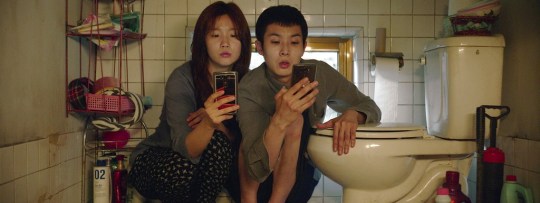
Far and away my favorite film of 2019 was Bong Joon-ho’s Parasite, a South Korean dark comedy home-invasion thriller about a poor family plotting to improve their circumstances by tricking an extremely wealthy family into hiring them by posing as unrelated, highly skilled individuals.
I came into this film ignorant of its premise, and I was completely floored. This is Bong Joon-ho in total control of his craft. Parasite has a mesmeric rhythm to it that is aesthetically energized, allowing the film’s strikingly bold tonal shifts to work so well. Every act increases the ever-present nail-biting suspense, supplemented by cinematic moments of pure genius like the nearly five-minute long montage towards the end of the first hour. Every single member of the cast knocks it out of the park, and there is enough social commentary to fuel college essays for years. The twists zig when you think they are going to zag; it is a truly wild ride. To put it quite simply, Parasite is a masterpiece.
The following are a list of films I saw from 2019, in no particular order:
· Glass
· How to Train Your Dragon: The Hidden World
· Captain Marvel
· Shazam!
· Avengers: Endgame
· Aladdin
· Booksmart
· Rocketman
· X-Men: Dark Phoenix
· Men in Black: International
· Toy Story 4
· Spider-Man: Far From Home
· Once Upon a Time in Hollywood
· Joker
· Parasite
· Jojo Rabbit
· The Lighthouse
· Doctor Sleep
· Ford v Ferrari
· Frozen II
· Knives Out
· Star Wars: The Rise of Skywalker
· 1917
· The Two Popes
· The Irishman
· Marriage Story
· El Camino
· Uncut Gems
· One Piece: Stampede
I somehow completely forgot I saw The Peanut Butter Falcon and absolutely adored it; I definitely recommend checking out this feel-good film.
My 2018 film list: https://kcaruth.tumblr.com/post/182182411291/movie-mania-top-10-of-2018
My 2017 film list: https://kcaruth.tumblr.com/post/171040800751/movie-mania-top-15-of-2017
My 2016 film list: https://kcaruth.tumblr.com/post/156340406236/movie-mania-top-15-of-2016
0 notes
Text
My First Time Playing Dungeons & Dragons

First published in 1974, Dungeons & Dragons has experienced a resurgence in popular culture as of late. From Stranger Things to Stephen Colbert’s references to the game to podcasts galore, many people have at least heard of D&D now and have some basic familiarity with the concept of it.
I had never played Dungeons & Dragons and had no intention of trying it anytime soon...that is, until a friend introduced me to Critical Role. Critical Role is a web series in which a bunch of nerdy professional voice actors come together to play Dungeons & Dragons with Matthew Mercer as the dungeon master. Available on Twitch, YouTube, and as a podcast, Critical Role is currently deep into its second campaign. I decided to tune in to the podcast one day in 2019 when I was on a long drive out of town and began listening to the beginning of this second campaign. With most episodes lasting at least three hours, I figured it would help pass the time and make the drive fly by more than cycling through radio stations ever could. Although it took me a little while to get hooked and I certainly was confused at some parts early on, I can now say I am head over heels in love with Critical Role. Thanks to the superb work of the voice actors and the immersive storytelling of Mercer, I am completely invested in the players’ characters. I am only 10 episodes into the second campaign at the time I am writing this blog post, and I cannot wait to see where the story takes our group of adventurers from here.
With Critical Role having piqued my interest in Dungeons & Dragons, I started keeping an eye open for opportunities to try playing myself. I did a bit of research and checked a handful of local comic book and game shops to see if they had any opportunities available. While some of them did have Dungeons & Dragons events, they did not sound like they were easy for a beginner to join, and a couple of them included a cost to play. I was looking for something where I, as a brand new player, would not feel left out or left behind and buried underneath all of the complexities that come with role-playing games. I needed an environment where I would not feel like I was bringing the game to a screeching halt as I tried to get the hang of things. Additionally, I did not want to financially commit by paying an entry fee and going down the rabbit hole of purchasing dice, the official player’s handbook, miniatures, etc. before I felt like this was a hobby I could truly enjoy.
After a few weeks of searching, I saw a Facebook event post come across my newsfeed promoting the start of a brand new Dungeons & Dragons campaign. The description said the campaign was open to veterans and beginners alike, and best of all, it was completely free. Don’t have any dice or miniatures? Not sure how to go about creating a character? No problem! I paid a visit to the store the week before the game night to chat with one of the owners and confirm that this would be a good first foray into Dungeons & Dragons for me. He was very welcoming and assured me that new players like me were exactly the people they had in mind when designing this campaign. I was sold and told him that I would be there.
I only had a couple of drawbacks going into this. First, the store is located approximately 30 minutes away from me, so I have to fight rush hour traffic to get there in time for the 6:00 pm start. Second, considering the session lasts three hours, that does not really give me any time to stop for dinner beforehand, and by 9:00 it is too late for anything hearty. I may start packing an extra sandwich with my lunch to eat on the road on the way over there if I continue going, but I certainly wish that the store was closer.
When I arrived at the store for the beginning of the campaign, the dungeon master introduced himself and explained the concept of this campaign. Essentially, our characters are in a hamlet searching for jobs and quests. There is a job board with different missions available, and together we decide which one to take. He explained that this format would make it easy for new players to join the game, allow players more flexibility by giving them the opportunity to switch to a completely different character the next week if they so choose, and the story would not get thrown off if the players from one week missed a couple of sessions. We gathered around the table, and he expressed his surprise that so many people had shown up to play. All together, there were 10 of us. With me being one of the three brand new players to the game at the table, he asked me to sit next to him so that he could advise me and walk me through things. He let me borrow his dice and a miniature, and he let me choose my character from a pack that he had created. I selected a half-elf rogue equipped with a rapier, a light crossbow, and a dagger. Once everyone was set, the campaign began.
The dungeon master presented us with three different jobs and asked us to vote as a group on which one to take. The first one involved monsters causing trouble near the port and interfering with trade. The second one was a plea for help from farmers whose cattle had started mysteriously disappearing, leaving behind trails of blood. The third one came from a landowner who was worried about bandits encroaching on his land. Our group opted to pursue the second job.
To make a three-hour story short, we discovered that undead skeletons had been taking and killing the cattle, so we engaged them in combat. We successfully defeated the horde of skeletons, and that is where the game ended for the night.
While I did enjoy my first experience playing Dungeons & Dragons overall, it was not as great as I had hoped it would be. Perhaps my expectations were too high, but we hardly dived into the role-playing aspect of the game, which was the main draw for me. Not a single person ever used or even mentioned his or her character’s name! I did try to interact with the other characters a couple of times to drive the other players into a role-playing mindset, but it did not really lead to anything. At the heart of it, I believe that 10 players is way too many people for Dungeons & Dragons; I think the ideal number is four to six. (For reference, the recurring cast of Critical Role’s second campaign from what I have listened to so far is six to seven players.) The fight with the skeletons was especially unbearable, with almost 10 minutes passing each time before it was my turn to do something again. While most of the other players were easy to play with, a couple of players had obviously played before and brought their higher level characters into this new campaign. That was completely fine with me, but one of them constantly kept referring to his Dungeons & Dragons smartphone app to try to correct the dungeon master or point out certain intricacies or bonuses his character had, completely interrupting the flow of the game.
With all of that being said, I really appreciated this dungeon master’s willingness to take new players under his wing, and I am especially grateful to this particular store for providing this chance to try out Dungeons & Dragons. They clearly enjoy the game and want to share their love for it by making it accessible to more people, no strings attached. I am glad I stepped out of my comfort zone to meet up with these total strangers and try out a new experience. If you have ever had even an inkling of curiosity about Dungeons & Dragons, I highly encourage you to seek out a place or group where you can try playing it. At the very least, give Critical Role a listen and see where things go from there.
3 notes
·
View notes
Text
For Glory and Valhalla
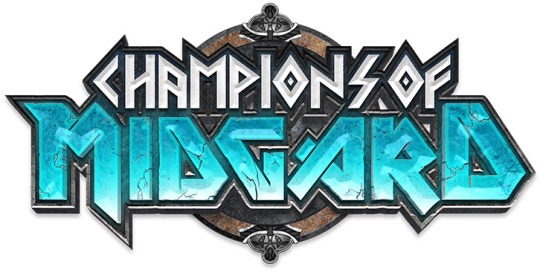
The Viking-themed Champions of Midgard fuses worker-placement and dice-driven combat to create an exciting adventure full of mythical battles, resource gathering, prophecies, and seafaring quests.
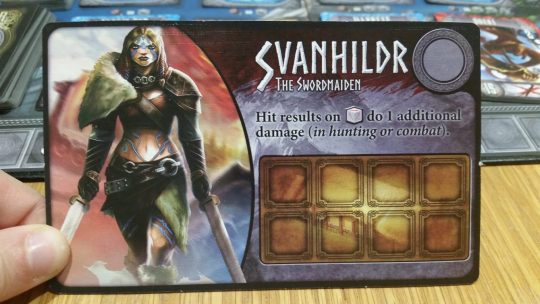
Since the death of the old jarl, the prosperous port of Midgard has fallen into chaos. Trolls and draugr terrorize the villagers, and horrible monsters threaten travelers and merchants arriving by sea. In its time of desperation, Midgard seeks a new champion to defend and protect it from these seemingly insurmountable threats. If this champion gains enough glory in battle, the people of Midgard might deem their champion worthy of the title of jarl.
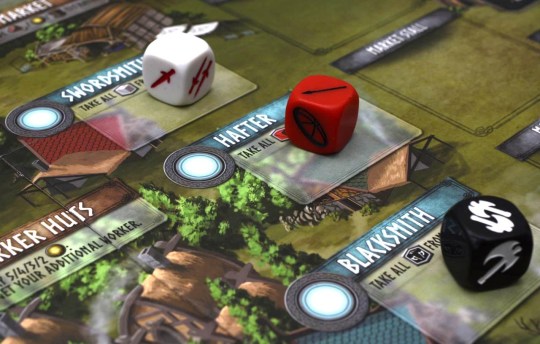
Players start with three meeple workers each (or four if it is a two-player game) controlled by their viking with his or her own special ability and take turns placing them at various locations on the board. The smokehouse offers valuable meat to feed hungry warriors. The hafter, swordsmith, and blacksmith allow players to recruit mighty warriors. The merchant ship brings in a haul of goods. The market acts as a marketplace, naturally, just as the hunting grounds are a good source of collecting extra meat. The jarl’s longhouse provides the only way the first player changes in the game. The stave church contains favors that players can collect that may come in handy in battle. The runesmith creates runes that translate into special single-use abilities. The sage’s house lets players get a glimpse of the future by looking at one of the face-down journey cards standing between them and the monsters out at sea and also supplies them with destiny cards, which contribute to endgame scoring. The worker huts house one extra worker that each player can claim during the game. At the port, players can utilize the small or large public longship, or they can visit the shipwright to build their own private longship.
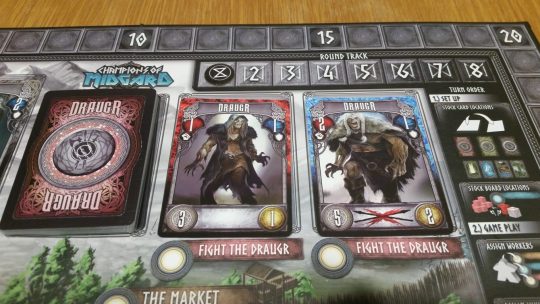
While all of these different locations provide great benefits, the real focus of the players should be on the attacking troll. If this threat is left unchecked for the round, the troll goes on a rampage and wreaks havoc on Midgard. Understandably, the villagers resent their heroic champions for not dealing with the threat and assign blame to them, negatively impacting their glory. If a player does defeat the troll, he or she can remove a blame token if he or she has one and assign blame to any other player.
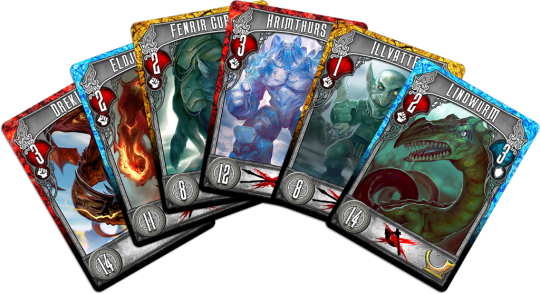
In addition to trolls, players can also choose to fight draugr and the monsters overseas. The draugr lurk close to home, so no additional resources beyond the warriors fighting them are needed. The overseas monsters, however, present a tougher challenge. First, players must have a longship to travel out to sea on, whether they are borrowing one from the public or they own a private one. Second, they must ensure they have enough food to keep their warriors fed for the long journey. Third, they must be prepared to face whatever their perilous sea journey throws at them. This could range from storms and whirlpools to the fearsome kraken that must be defeated before moving forward, or everything could turn out fine with calm, quiet seas. Finally, there is the matter of facing the monster they set out to slay in the first place. At this point, players might find their ranks severely depleted from the treacherous sea journey, but their remaining warriors must summon their courage and be prepared to accept death as they stare down the fearsome monster. Although there are a lot more risks in choosing to travel out to sea to fight these monsters, they offer the most glory out of any of the foes on the board, so they are certainly worth the inherent danger.
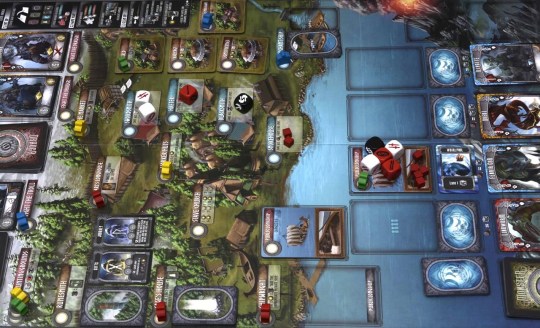
With all of these battles, one might be wondering how the combat works. Dice represent the warriors in the game, which are divided into three different categories. Swordsmen are the white dice, spearmen are the red dice, and axemen are the black dice. Die faces have the aforementioned weapon, two of that weapon (meaning double damage), a shield that defends against an enemy’s attack, or a blank (which translates to a missed attack). Axemen are the most powerful offensive force, but their downside is they have no defense. Spearmen are a good balance of offense and defense. Swordsmen are usually the most readily available to recruit, but they are also the weakest offensively. As an added challenge, some monsters prohibit certain types of warriors. For example, if a monster restricts spearmen, the attacking player can only use swordsmen or axemen to fight that monster. Players can control eight warriors at a time, but they tend to drop like flies in combat.
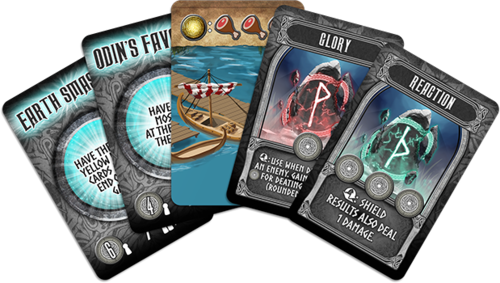
The game lasts eight rounds, and the player with the most glory wins. Bonus glory points are awarded at the end of the game. If a player has satisfied the condition on a destiny card, he or she scores glory. By defeating sets of enemies (one of each color), players score extra glory. Because runes are symbols of power, used or unused runes collected by a player provide glory. As a status symbol, a private longship brings a player who owns one glory. Unspent favors give glory, and coins remaining at the end of the game earn glory. Glory is lost, however, by any blame a player has.
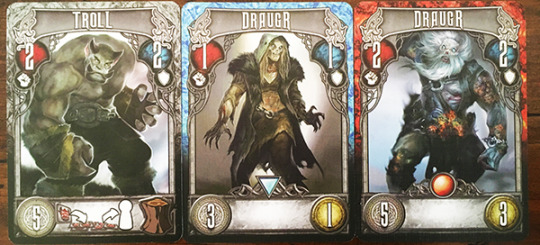
Champions of Midgard is a fun game that nails the viking theme. The components look good for the most part, but I did find my board damaged when I first opened it. I have contacted the publisher to see if I can get a replacement copy. While I would not recommend this game to gateway players, those with more experience in the worker-placement genre should enjoy coming up with new strategies to claim the most glory.
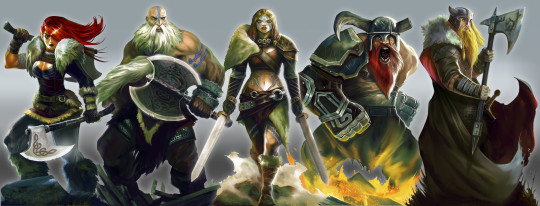
0 notes
Text
To Catch a Killer

The year is 1888. In the midst of the construction of the London Metropolitan Police’s headquarters near Whitehall (later known as Scotland Yard), the gruesome remains of a body are found. This can only be the work of the evasive killer, Jack the Ripper. Investigators must hunt down this evil killer and end this game of cat-and-mouse before he slips out of their grasp once again.
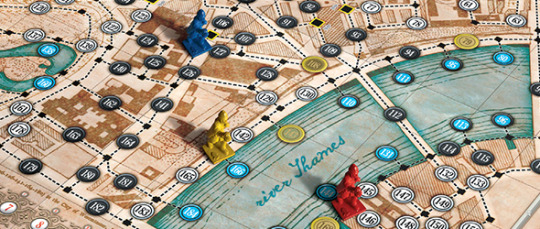
Playable by two to four players, Whitehall Mystery is a hidden movement game that allows players to step into the shoes of Jack the Ripper or the investigators trying to catch him, journalist Jasper T.C. Waring and his loyal dog Smoker, surgeon Thomas Bond, and Sergeant Arthur Ferris.
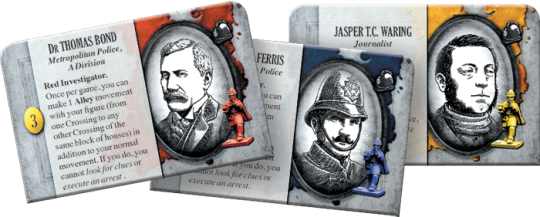
Played over four rounds filled with close calls and narrow escapes, the investigators must use their wits to track down the infamous Jack the Ripper as he sneaks around depositing the limbs of his unfortunate victims. Before the game starts, the person playing as Jack the Ripper secretly chooses four locations on the map where he will deposit the body parts of his murder victims. The first location is revealed as Jack’s starting point, and then the game is afoot as the investigators work together to stop Jack before he gets to his other three secret locations. Each round takes place over a series of turns, with Jack first making a move followed by the investigators trying to catch up to him. The round ends when Jack has either made 15 moves or has reached one of his secret locations that he marked down at the beginning of the game. During the investigators’ turn, they first choose whether or not to move and then have the option to search for clues or make an arrest. The game ends when Jack has reached his fourth and final secret location, when the investigators successfully arrest Jack, or if Jack fails to reach one of his secret locations after 15 moves.
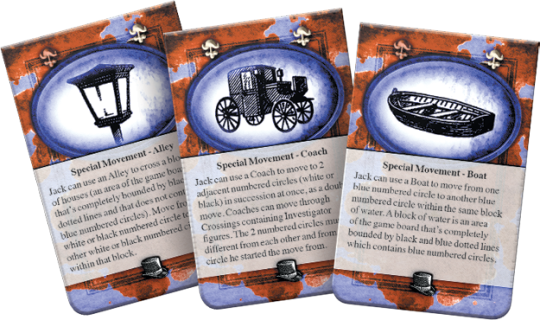
All players have access to special abilities. When Jack feels like the investigators are closing in on him, he can throw them off his scent by escaping in a boat, a coach, or an alleyway. Jack can use each of these three special movements two times throughout the game. The investigators, meanwhile, each have their own special ability as explained on their tile that they can use once during the game. These special abilities can mean the difference between capture and evasion. Of course, players can choose to disregard these special abilities and movements to increase the difficulty level of the game.
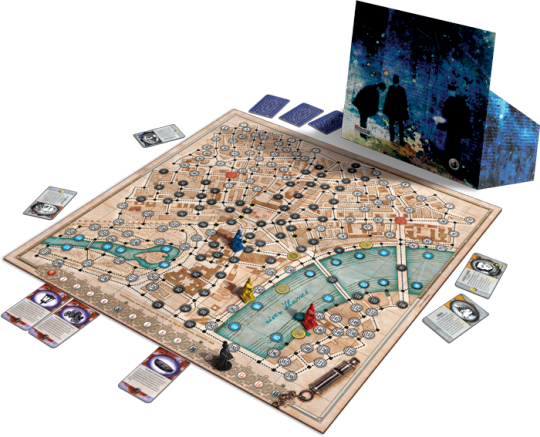
When the investigators choose to search for clues, one by one they call out numbered circles connected to the crossroad they are stationed at in any order they wish. If they call out a location that Jack is on or has passed through that round, Jack places a yellow clue token on that location and the investigation ends . (Notice Jack does not lose if the investigators search for clues on a location that he is currently on; that only happens if they make an arrest on that location.) If none of the locations the investigators called out have been visited by Jack, the investigation ends and the next turn begins. If the investigators are feeling confident in their powers of deduction, they can call for an arrest on their turn instead of searching for more clues. When they do this, they can only call out one numbered circle connected to them. If Jack is currently on that location, the game ends with the investigators taking him in and locking him behind bars.
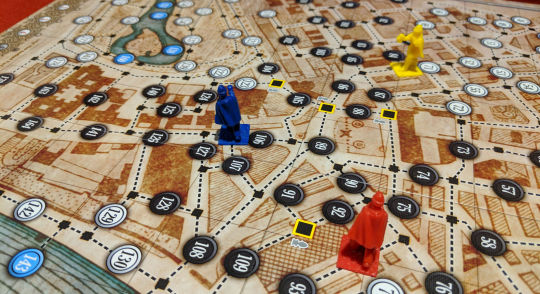
Jack, meanwhile, spends his turns each round quietly moving around the map as he makes his way to his next secret location. Once he arrives at one of his secret locations, he gives the investigators one last chance to arrest him on their turn before he reveals the location. From there, the investigators try to close in on him before he escapes to his next secret location.
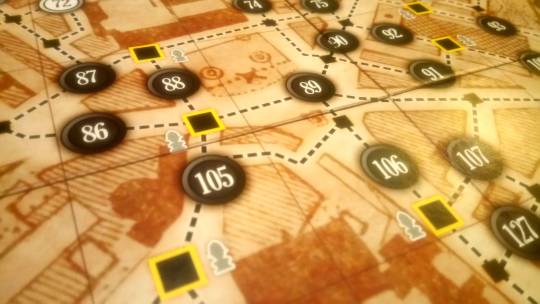
Whitehall Mystery really shines as the game goes into its later rounds. The tension gradually builds as the investigators get closer and closer to trapping Jack. While it is fun searching for clues and trying to arrest Jack cooperatively as the investigators, the person playing Jack gets to have the real fun. However, this comes at the cost of some extreme nerve-wracking stress. Seriously, it is not uncommon for the person playing as Jack to find his or her heart racing and palms sweating in the later stages of the game.
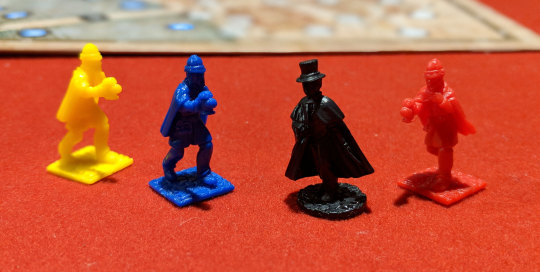
I really appreciate the level of care and thought that went into the design of this game. Everything fits neatly into the box, so cleanup is not a hassle at all. The figures are modeled as the searching investigators and the nefarious Jack the Ripper rather than nondescript meeples. I applaud the designers of this game for giving Jack his own mini map, something that more hidden movement games should really include. Thanks to the mini map, the other players cannot watch the hidden movers eyes to get clues based on where he or she is looking on the main map. The theme also really comes through, regardless of whether you are playing as an investigator or as Jack. The game creates a real sense of urgency to stop or commit the next murder in the tight corridors of London.
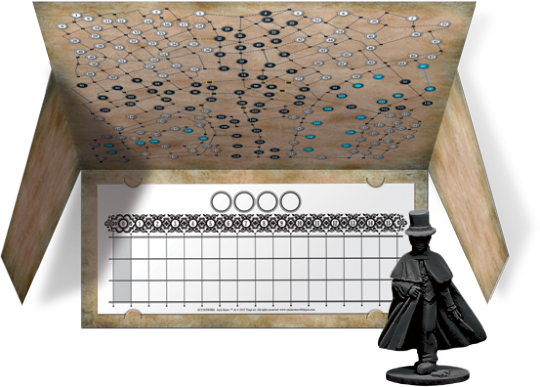
Having played as one of the investigators and as Jack, I can confidently say that this game is a good time from either side, but it really is a blast to play as Jack. If you are looking for a fun gateway into the hidden movement genre, I believe there is no better choice than Whitehall Mystery. It takes the mechanics of more popular hidden movement games like Fury of Dracula or Letters from Whitechapel (which Whitehall Mystery branches off of as a standalone game), eliminates the parts that make them overly complicated, and condenses them into a much more realistically manageable playtime.
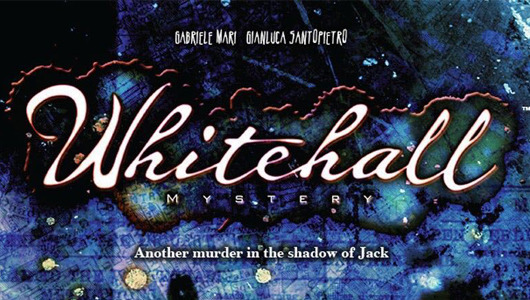
0 notes
Text
Worker Placement Meets Dungeons and Dragons
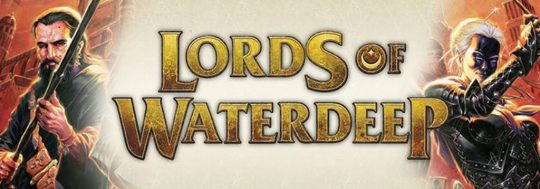
The perennially popular OG fantasy role-playing game Dungeons & Dragons is known for its wildly imaginative storytelling possibilities and insanely long campaigns. (We’re talking over 35 years in some cases!) Lords of Waterdeep boils down all of the role-playing elements of D&D and converts it into an accessible worker-placement board game that lasts between an hour to two hours max.
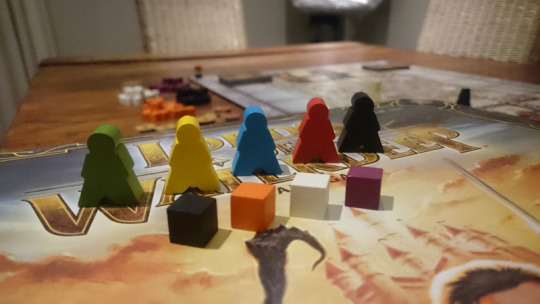
Designed by Peter Lee and Rodney Thompson and published in 2012 by Wizards of the Coast (the same company that publishes D&D), Lords of Waterdeep is set in the City of Splendors, Waterdeep, a fictional city in the Forgotten Realms D&D campaign. The game describes Waterdeep as “a den of political intrigue and shady back-alley dealings.” Players control powerful lords trying to spread their influence across the city to gain control of its operations by working behind the scenes through their agents and adventurers.
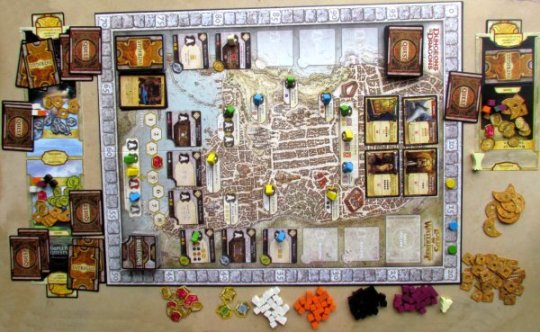
Playable by two to five players, the game lasts eight rounds, and the player with the most victory points at the end of those eight rounds wins the game. At the beginning of the game, each player chooses his or her lord’s faction (Knights of the Shield, City Guard, Silverstars, Harpers, and Red Sashes—all fancy names that really just come down to players picking the color that suits their mood that day to differentiate their meeples on the board) and is randomly dealt a lord whom he or she keeps secret until the end of the game because each lord has a different bonus. Using their agents (workers), players can recruit more agents to work on their behalf, go on quests to earn different rewards, collect money, discover intrigue cards, or purchase buildings that open up new actions.
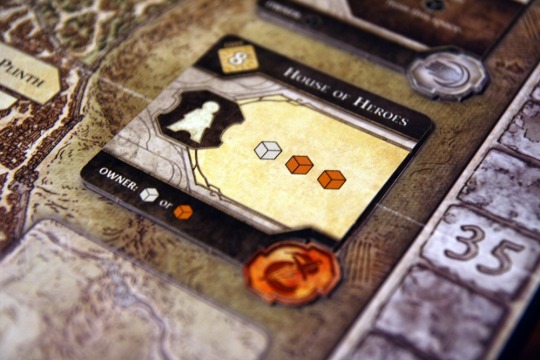
Quests are the meat and potatoes of this game. Every quest is classified under a certain category (Warfare, Skullduggery, Arcana, Piety, and Commerce) that favors different types of adventurers (fighters, rogues, mages, and clerics); that is to say, quests require players to have a certain amount of workers of the type designated on the quest card (plus the specified amount of currency for some quests) to be able to complete it and reap the rewards. Some quests are also labeled as plot quests, which grant additional bonuses that remain in effect from the time a player completes that quest to the end of the game.
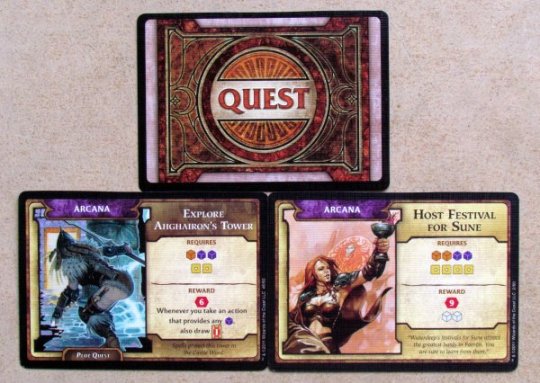
While there is no direct player combat or battles in Lords of Waterdeep, the game does offer a few different ways to interfere with an opponent’s plans. The spaces on the board can become incredibly claustrophobic because only one player can occupy a space at a time. If a player recognizes that an opponent desperately needs a certain type of adventurer to complete a quest, that player can choose to occupy the space where those adventurers are recruited to block that opponent from getting them that round. Players can also choose to collect intrigue cards. These intrigue cards can yield additional resources, allow players to steal resources from other players, or best of all (or worst, depending on if a player is on the receiving end of them) reveal mandatory quests that can be assigned to other players that must be completed before other quests are undertaken, sapping them of resources they were saving for other goals and halting their momentum. Finally, players can purchase buildings to create additional spaces to place their agents on the board. This is especially vital once players gain access to their additional agent at a certain point in the game. These buildings offer new ways to collect adventurers or resources. It is in the best interest of players to own as many buildings as they can because when opponents use their buildings, they earn a reward, which forces opponents to weigh the pros and cons of gaining much-needed resources while aiding the owner of the building.
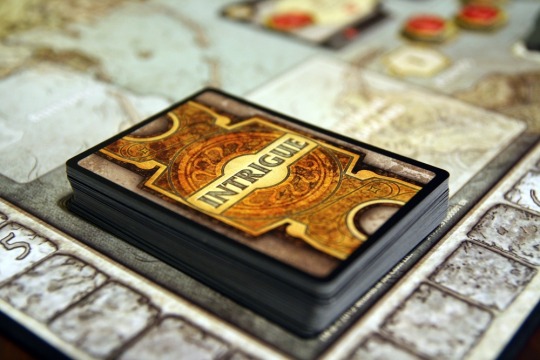
Lords of Waterdeep has quality components that fit neatly into the box. Speaking of the box, however, it has a somewhat weird design. Its design does not allow it to fully close. The publisher intentionally did this for some kind of artistic effect, but it does not seem practical. The artwork on the box cover could also scare away prospective players from this game, unfortunately. Made in the vein of D&D, the game certainly has a fantasy-adventure theme there if players are really looking for it in flavor text, but it does not necessarily drive the game and can be ignored if players prefer. The cover art, on the other hand, screams fantasy-adventure with knights, lords, and mages gearing up for epic quests, which might not appeal to people who are not big fans of the fantasy genre.
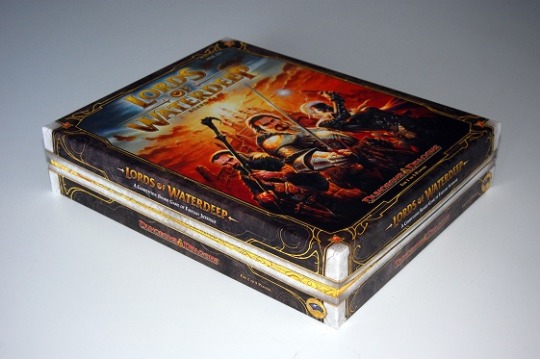
The designers could have done more with the factions. Instead of just being a way to differentiate each player, the factions could have their own special abilities. Perhaps, for example, each of the factions would be the only ones who could have access to purchasing one of the buildings, or one of the factions could use a certain building that they do not own without letting the owner collect the reward for them using the building.
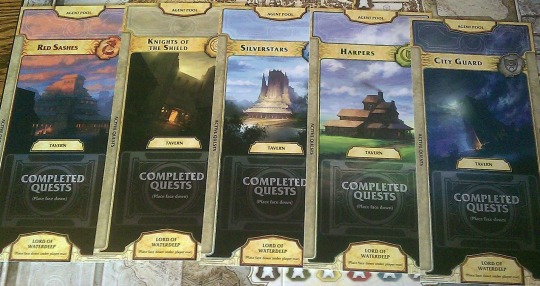
Lords of Waterdeep offers an easy introduction to worker-placement board games. Every action that a player takes results in some kind of reward, so there is a nice sense of instant positive reinforcement. Although it is definitely inspired by D&D, players do not need to know anything about it to be able to enjoy Lords of Waterdeep.

0 notes
Text
Surviving the Oregon Trail

If you are like me, one of the best rewards you could get in early elementary school was when the teacher gave you time to play the classic 1985 The Oregon Trail video game on the classroom computer. Everyone would crowd around the computer and watch to see who could make it closest to Williamette Valley before dying of dysentery. If luck was on your side and you somehow managed to make it, everyone regarded you as a hero the rest of the day and would look to you for advice the next time the teacher fired up the game.
Just like its digital predecessor, The Oregon Trail: Journey to Williamette Valley is uncompromisingly brutal, and a little bit of good luck can go a long way. The year is 1848, and players must guide their family from Independence, Missouri to Williamette Valley, gaining as much money as possible along the way to be able to start off on the right foot after arriving in the West.
The route to Williamette Valley is revealed by the tiles that players place on the board. These tiles can contain rivers that may have to be crossed, winter weather that is extremely dangerous to traverse through without the proper gear, forts and towns that shelter players from calamities and serve as a marketplace, and hunting grounds that can be used to replenish scarce food supplies.
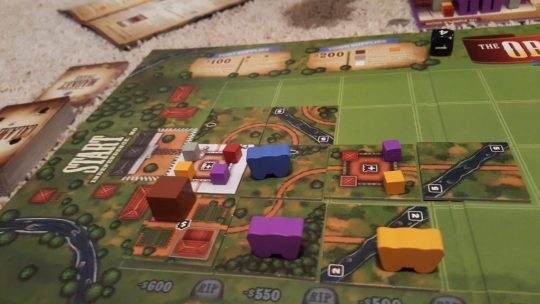
The name of the game here is resource management. Should a player purchase a shotgun to pair with his or her pistol to have a better chance of taking down bigger game, thus yielding more meat for the trail to stave off starvation, or should he or she use that wagon storage space for some winter clothing instead in case the weather unexpectedly changes? This sounds cold blooded, but players may also have to weigh the pros and cons of keeping a family member alive. Sure, there are the funeral expenses, but one less person in the wagon means more room for supplies, or maybe even a hitchhiker who would pay a pretty penny for passage to Williamette Valley.
Players must wrestle over whether it is better for them to race to Williamette Valley at full speed to be the first one there or ease up on those oxen and take time to build up their wealth. The game ends when a wagon reaches Williamette Valley or the last tile is placed on the board. The player with the most money, not necessarily the first one to reach Williamette Valley, wins the game.
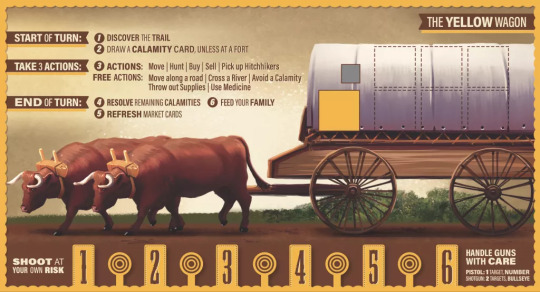
Journey to Williamette Valley is full of twists and a little more bad luck than good. While players can do their absolute best to plan ahead and prepare for the worst, a calamity like a broken wagon wheel, a deadly snakebite, or some sort of disease is bound to do in even the most resourceful players. At the same time, however, players may come across some coffee that grants them an extra action or other such beneficial items.
Hunting is done by guessing on a scale of 1-6 what an animal is. Threes and fours show up more frequently but are worth very little meat, while the low end and high end animals yield a bigger reward. With the standard issue pistol, players must correctly guess the exact number to earn the meat, but the shotgun allows more room for error and can claim meat by correctly guessing between two numbers. For example, if the shotgun is used to guess a five or six and the animal ends up being a six, the player claims that meat.
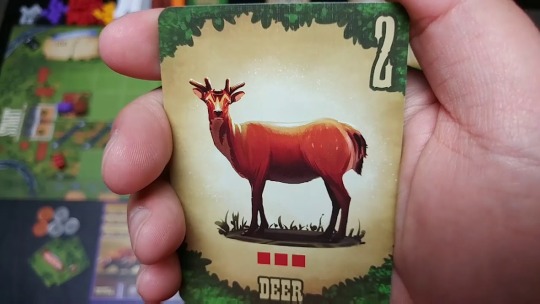
Journey to Williamette Valley is a really fun take on the classic video game. Playable by two to four players, it is pretty straightforward and easy to understand a few turns into a first playthrough. The components are all good quality and seem to hold up well. Plus, the game has a high replayability factor because the trail to Williamette Valley will never be the same. So, do you think your family has what it takes to survive the Oregon Trail and start a new life out West?
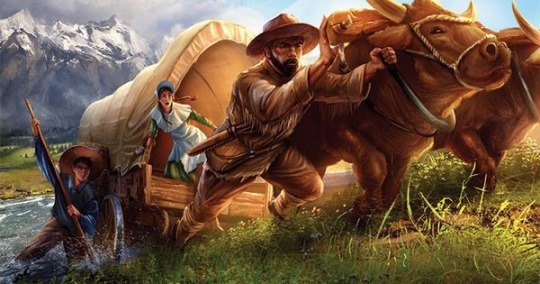
0 notes
Text
Movie Mania: Top 10 of 2018
This one was difficult. Those who have followed this blog for a while will know that for the past two years I have done a top 15 list of favorite films. That is largely because 2016 and 2017 cranked out so many great films, and I could not restrict myself to 10. However, 2018 turned out to be a rather lackluster year for film, in my opinion. Sure, there were some high points, but overall it was disappointing. It was actually easy to stick to a list of 10 this time, and those 10 films are all deserving of praise. I just wish they had some tougher competition to go up against. I digress, though. I now give you my spoiler-free list of favorite films of 2018.
Honorable Mention: Bumblebee
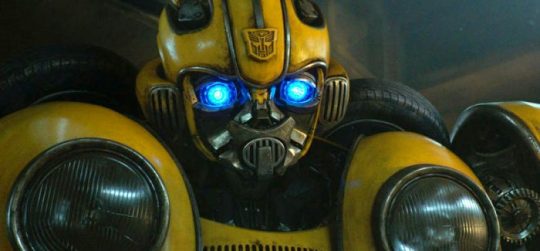
A collaboration between Travis Knight, the director of Kubo and the Two Strings, and Hailee Steinfeld? Count me in!
I stopped following the Transformers franchise after 2011′s Transformers: Dark of the Moon. One can only endure so many mind-numbing Michael Bay explosions before all of his or her brain cells die out. Here is a fun exercise that one of my college professors taught me; try it next time a Michael Bay Transformers movie comes on. Every time there is a cut, tap a pen or pencil or clap your hands. Frankly, it is quite overwhelming and hard to keep up with, and it is difficult not to notice every single unnecessary, jarring cut after becoming conscious of them through this exercise.
Contrast that with 2018′s Bumblebee. At Knight’s direction, the film forgoes most of those flashy explosions in favor of a more intimate approach to actual character development. Knight wisely chooses to keep the audience grounded and focused on the human characters, namely Steinfeld’s Charlie Watson, a teenage girl who is still struggling to come to terms with the death of her father while harboring resentment of her mother for remarrying. As far as the robots go, while the other Transformers movies went overboard with filling the screen with as many Decepticons and Autobots as they could, Knight really only has the titular Bumblebee and a couple of Decepticons hunting him down, ensuring that the action scenes and the film itself do not feel too bloated. Bumblebee is the course correction that this franchise so desperately needed.
#10: Eighth Grade

I was cringing throughout the run time of Eighth Grade, but somehow that is a compliment to this film. Uncompromising in its excruciating honesty, Eighth Grade hits the bullseye when it targets the audience’s empathy for an anxious 13-year-old during her last week of eighth grade named Kayla Day, played by Elsie Fisher. As his debut feature film, writer-director Bo Burnham has stated that he drew inspiration from his own struggles with social anxiety, so the script feels genuine and absent of any Hollywood edits. While Kayla is certainly the main focus of the film, Burnham provides a surprisingly touching character arc for her single father, Mark, played by Josh Hamilton. Mark desperately attempts to connect with his teenage daughter, but it seems like all she cares about having a connection with is her phone and social media. With themes of mental health, heavy use of social media, and sexuality, Burnham delivers one of the most uncomfortable scenes I have ever sat through in a movie theater, which is most likely exactly how he intended it to feel.
I cannot help but compare Eighth Grade to 2016′s Edge of Seventeen, another coming-of-age comedy-drama about a teenage girl by a debut director. If I was given the choice between the two films, I would pick Edge of Seventeen, which I believe is much more re-watchable, garnering that intended empathetic response from the audience with half the cringe. Both are brilliant, but those who have not seen Edge of Seventeen should do themselves a favor and give it a watch.
#9: Won’t You Be My Neighbor?
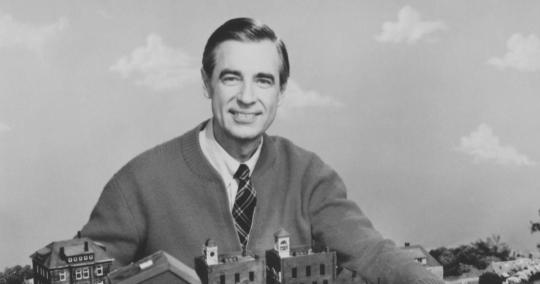
With so much hate and negativity in the world today, Morgan Neville’s documentary about Fred Rogers is a shining beacon of hope that restores one’s faith in humanity. Using archival footage as well as interviews with those closest to Rogers, Neville paints an intimate portrait of the man who welcomed audiences into his neighborhood through his pioneering television program. Without deifying Rogers, Neville shows how this American treasure dedicated every fiber of his being to teaching children how to be upstanding human beings who care deeply for one another, despite our differences. This documentary proves that Rogers’ lessons were not just for children, though. In fact, Won’t You Be My Neighbor? often feels like a one-on-one session with Rogers, encouraging audience members that they are all capable of good through simple acts of kindness.
#8: The Ballad of Buster Scruggs
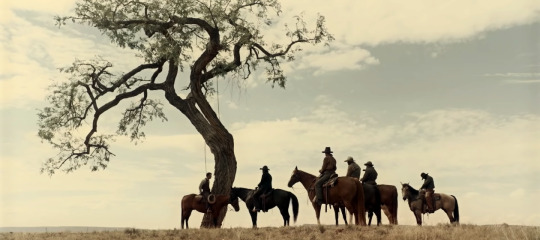
Unfortunately, this American western is sure to fly under most people’s radar because it was a Netflix release that I do not recall having much fanfare and advertising. Written and directed by Joel and Ethan Coen, this film is an anthology of six different vignettes set in the American West. Sporting a stellar cast with the likes of Liam Neeson, Tim Blake Nelson, James Franco, Zoe Kazan, Brendan Gleeson, and more, The Ballad of Buster Scruggs flexes the Coen’s signature style of dark drama and black humor while impressively tackling all of the sub-genres within the greater Western genre.
Each of the vignettes are tied together by death in some form or fashion. While my ranking of them changes from day to day, my favorite and least favorite remain consistent. It is virtually impossible to not fall in love with the first vignette, “The Ballad of Buster Scruggs,” which is about a cheerful outlaw known just as widely for his singing as his gunslinging. The final vignette featuring a handful of characters cramped together on a stagecoach ride called “The Mortal Remains,” on the other hand, feels somewhat out of place and ends the film with a bit of a dud. Along the way between these two vignettes, however, viewers encounter enchanting tales of a bank robber, an impresario and his artist, a prospector, and a wagon train on the Oregon Trail.
As the Coen’s first film to be shot digitally, The Ballad of Buster Scruggs boasts some impressive cinematography, especially when it comes to wide sweeping shots, like any decent Western should. It also features a wonderfully delightful score that I desperately hope gets an Oscar nod. Not a week has gone by since I have watched this film where I do not find myself humming one of the songs or music from it. The acting throughout the different vignettes of the film is topnotch, and the actors look like they are having a blast in their roles.The Ballad of Buster Scruggs is a fun time that leaves viewers longing for more time in the American West. For those who cannot find the time to sit down for the whole film, I must urge them to at least watch the first vignette about Buster Scruggs, which is worth the price of admission on its own.
#7: Isle of Dogs
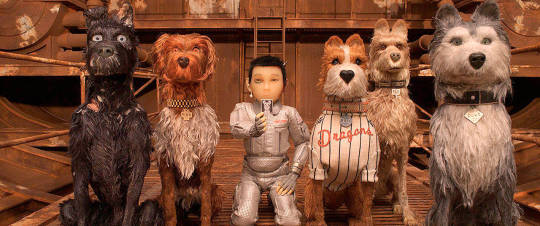
Set in a dystopian Japan, Wes Anderson’s stop-motion animated Isle of Dogs tells the story of a boy searching for his dog on Trash Island after an outbreak of canine flu. Voiced by an all-star cast including Bryan Cranston, Jeff Goldblum, Scarlett Johansson, and Bill Murray, Isle of Dogs is an epic adventure with its fair share of plot twists along the way. Alexandre Desplat provides a brilliant score for the film that matches Anderson’s comedic quirkiness and thematic choices. I would not consider myself a fan of Anderson’s distinct film style, but I do consider myself a huge fan of dogs and enjoyed Isle of Dogs. (Get the title of the film? Pronounce it out loud quickly. I Love Dogs.)
#6: Game Night
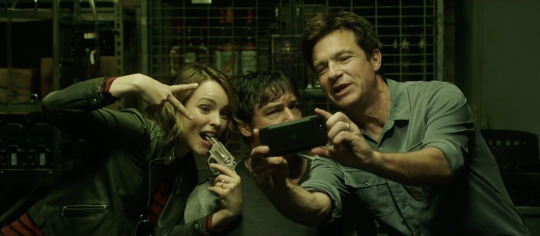
Game Night made me laugh out loud like I have not done in a long time at the movie theater. Starring Jason Bateman and Rachel McAdams, the film follows the hilariously ridiculous premise of a group of friends whose game night gets wrapped up in a criminal escapade. In addition to Bateman and McAdams’ great, fun chemistry as the husband and wife duo of Max and Annie Davis, Jesse Plemons’ portrayal of Gary Kingsbury, Max and Annie’s weird neighbor, delivers some moments of pure laughter. For a film that is high on laughs, Game Night manages to string the audience along with its surprisingly competent mystery, complete with reveals and twists that both shock and amuse viewers. Be sure to stick around for the credits and post-credits.
#5: A Quiet Place
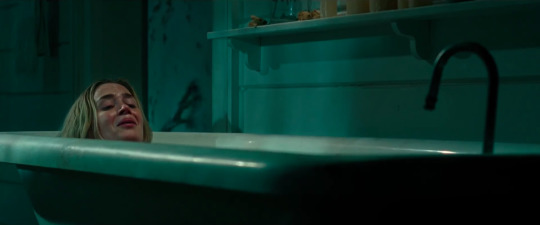
Anyone who knows me knows that I am a big baby when it comes to horror movies. I absolutely loathe jump scares and will watch horror movies through my fingers if I am forced to watch one. However, I had heard so much positive buzz about John Krasinski’s A Quiet Place that I could not allow myself to make this list without seeing it first, and boy am I glad I summoned the courage to see it. A Quiet Place is a masterclass in tension, tone, pacing, sound design, and character development.
The plot centers around the Abbott family in a post-apocalyptic world inhabited by blind monsters that attack any source of sound with their heightened sense of hearing. Nothing is known about the origins of these monsters, only that they have wiped out most human and animal life on Earth. In this hopeless world, Lee and Evelyn Abbott struggle to fill their children with hope for the future.
The performances in A Quiet Place are some of the best of the year. The actors have an added degree of difficulty of having very minimal to no dialogue during the entire film, so their facial expressions and body language have to do most of the talking. One of the more impressive feats of A Quiet Place is the characters communicate in American Sign Language, and the actors actually learned ASL for the film. Millicent Simmonds, who plays Regan Abbott, is deaf and knows ASL, so she was able to help her co-stars with ASL, make corrections, and suggest improvements.
Krasinski has said that A Quiet Place is all about parenthood. Along with this theme, the film contains many Christian images and themes that are fascinating to pick apart and ponder. With so much depth, A Quiet Place delivers an original story that grips audiences. Although I did not see it in theaters, I am sure that people could hear a pen drop in their viewings.
#4: Bohemian Rhapsody
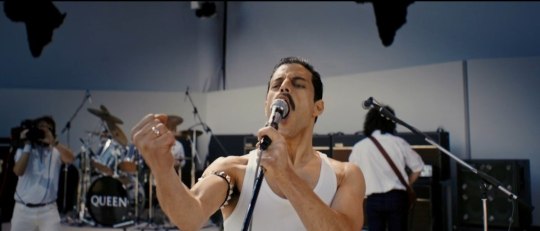
For all of its inaccuracies, creative liberties, and unevenness, Bohemian Rhapsody took the world by storm as the highest grossing music biopic and reinvigorated a love of Queen and its leading man, Freddie Mercury. Rami Malek runs away with the film as he disappears into his role as Mercury, so much so that audience members might have to pinch themselves to remember that they are not watching the real Freddie Mercury. Seriously, Malek has to be a surefire Oscar contender for this performance. Not only does he masterfully recreate Mercury’s mannerisms and moves onstage, he also channels his pain and feelings of isolation to bring audiences a fully realized depiction of the superstar. The supporting cast is good too, although Malek’s stellar performance does overshadow them, through no fault of their own.
For its finale, Bohemian Rhapsody gifts audiences with one of the most moving, memorable set pieces in all of film for 2018, the 1985 Live Aid concert. In a word, it is epic. Bohemian Rhapsody teaches lessons of acceptance, love, individuality, and the power of music and leaves viewers wishing they could have had a few more years with the amazing Freddie Mercury. This is one of those instances where the majority of critics should be ignored. Even if viewers are new to Queen, they should not miss this film.
#3: Green Book
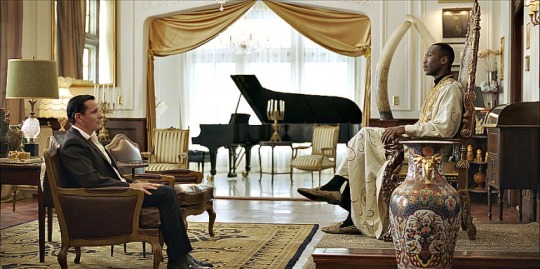
Bolstered by fantastic performances by Viggo Mortensen and Mahershala Ali, Peter Farrelly’s Green Book takes a relatively unknown true story about a concert tour to the Deep South in the 1960s with African-American pianist Dr. Don Shirley (Ali) and his driver/bodyguard, Italian-American Tony Vallelonga (Mortensen), and tackles its subject matter without being too heavy-handed and maintaining respect for its characters. The script treats Vallelonga and Shirley as real human beings. Contrary to most film tropes, neither completely changes his character after a single event or incident. Instead, that change occurs slowly over the course of their road trip. Both men learn from one another, despite their disparate backgrounds. Mortensen and Ali are both worthy of Oscar nominations, though I think I would give the edge to Mortensen.
For a film about racism, identity, and the dangerous Jim Crow South, Green Book remains accessible to all audiences. It is full of heart and is brimming with that feel-good aura. As Mick LaSalle wrote in The San Francisco Chronicle, Green Book is “so big in its spirit, that the movie acquires a glow. It achieves that glow slowly, but by the middle and certainly by the end, it's there, the sense of something magical happening, on screen and within the audience.”
#2: Annihilation
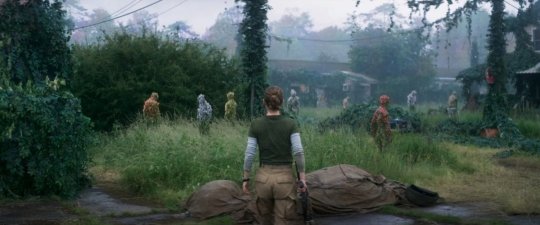
I have not stopped thinking about Alex Garland’s Annihilation since it came out way back in February. Garland, the director of one of my favorite films released in 2015 Ex Machina, puts together an impressive cast starring Natalie Portman, Jennifer Jason Leigh, Gina Rodriguez, Tessa Thompson, Tuva Novotny, and Oscar Isaac to deliver a truly intoxicating film that leaves audiences deep in thought well after the credits roll. Based on Jeff VanderMeer’s novel of the same name, Annihilation follows a group of scientists who enter a mysterious quarantined area known as the Shimmer. Inside the Shimmer, flora and fauna undergo uncontrollable mutations. The scientists explore the Shimmer in an attempt to learn its secrets and discover what happened to the military team that was sent in before them.
The atmospheric, bone-chilling score sticks in viewers’ memories and adds to the intense tone of the film. Speaking of tone, Annihilation might bring audiences to the verge of suffocation because of how breathtaking it is. It has possibly the scariest, most dreadful scene of any film from this decade that comes from the stuff of nightmares and leaves audiences haunted. For all of its terrifying elements, however, this sci-fi film also showcases some downright gorgeous scenes that let the imagination run wild. Unlike many sci-fi films these days, Annihilation is not afraid to slow down and let scenes marinate in viewers’ minds. With so many avenues to explore as far as themes go, from ethics to grief to depression to humanity’s propensity for its own self-destruction, Annihilation is a film that should be talked about for a long time to come.
#1: Spider-Man: Into the Spider-Verse
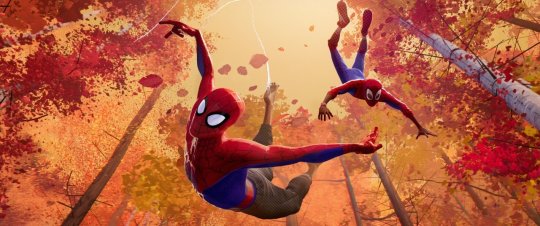
This was the easiest decision on my whole list. No other film came close to the number one spot after I saw Spider-Man: Into the Spider-Verse. I remember seeing trailers for this film throughout 2018, but I did not have high expectations for it and almost blew it off. After all, with all of the Spider-Man films we have had in recent years, how could this one stand out apart from its animation?
The hype is real. Spider-Man is one of the most well-rounded films of 2018. It expertly balances its genuinely funny comedic moments with its emotionally moving dramatic ones. It takes risks that pay off with its bold storytelling, which is full of charm and satisfying superhero action. There is obvious care and attention to detail poured into every frame of this film, a work of art that is a love letter to superhero comic books. The creators of the film wanted it to feel like "you walked inside a comic book," and they hit it out of the park. The computer-generated animation works in concert with line drawings, paintings, dots, and various comic book art styles to make the film look like it was created by hand. It even has word boxes and bubbles that somehow are not too obstructive or distracting. As Todd Howard, the director and executive producer at Bethesda Game Studios, is famous for saying, “all of this just works.”
For such a large ensemble of characters voiced by ingenious choices like Mahershala Ali, Hailee Steinfeld, and Nicolas Cage, Spider-Man gives each of them equal footing while keeping the spotlight squarely on Miles Morales (Shameik Moore), the new Spider-Man. Lily Tomlin voices what may be my favorite version of Aunt May, and many other Spider-Man staple characters make great appearances.
The soundtrack is catchy and fits the bill for what a kid Miles’ age would listen to. There are tons of Easter eggs for hardcore Spider-Man fans to uncover, and there are pop culture winks and nods that most people familiar with the Spider-Man franchise will understand and enjoy. Of course, the late, great Stan Lee has a touching cameo, one of his best yet.
Every part of this stand-alone story feels fresh, and the characters have so much depth to them. It is hard to come up with an original concept that reinvents the superhero genre, but Spider-Man has done just that and more. This revolutionary, culturally important film was a joy to watch, and it may go down as the best Spider-Man film yet. Certainly, it has to be a serious contender for the best film of 2018.
The following are a list of all of the films I saw from 2018, in no particular order:
· Green Book
· The Ballad of Buster Scruggs
· Pope Francis: A Man of His Word
· My Hero Academia: Two Heroes
· Black Panther
· Annihilation
· Game Night
· Ready Player One
· Isle of Dogs
· A Quiet Place
· Avengers: infinity War
· Deadpool 2
· Solo: A Star Wars Story
· Incredibles 2
· Ant-Man and the Wasp
· BlacKkKlansman
· Bad Times at the El Royale
· Mowgli: Legend of the Jungle
· First Man
· Ralph Breaks the Internet
· Spider-Man: Into the Spider-Verse
· Aquaman
· Bumblebee
· Bohemian Rhapsody
· Bird Box
· Won’t You Be My Neighbor?
· Eighth Grade
My 2017 film list: http://kcaruth.tumblr.com/post/171040800751/movie-mania-top-15-of-2017
My 2016 film list: http://kcaruth.tumblr.com/post/156340406236/movie-mania-top-15-of-2016
0 notes
Text
Euphoria: Build a Better Dystopia

Before there was Scythe (currently ranked number seven overall on boardgamegeek.com), Stonemaier Games had Euphoria: Build a Better Dystopia. Having played both titles, I can honestly say that I enjoyed Euphoria a lot more. I am a sucker for futuristic dystopian themes, so this game immediately grabbed my attention. However, a game needs to have more than nice artwork and a cool theme to be good. Euphoria delivers on its promise of fun after opening the box with its great mechanics, game design, and multiple paths to victory that had me wanting to come back for more.
The following is a summary of the game that outlines its theme:
You find yourself in a dystopian cityscape with a few workers at your disposal to make your mark on the world. Like most people in dystopian fiction, your workers are oblivious to their situation. This world is all they've ever known, and you may use them at your whim.
The world as we know it has ended, and in its place the city of Euphoria has risen. Believing that a new world order is needed to prevent another apocalypse, the Euphorian elite erect high walls around their golden city and promote intellectual equality above all else. Gone are personal freedoms; gone is knowledge of the past. All that matters is the future.
The Euphorians aren’t alone. Outside the city are those who experienced the apocalypse firsthand—they have the memories and scars to prove it. These Wastelanders have cobbled together a society of historians and farmers among the forgotten scrap yards of the past.
There is more to the world than the surface of the earth. Deep underground lies the hidden city of Subterra, occupied by miners, mechanics, and revolutionaries. By keeping their workers in the dark, they’ve patched together a network of pipes and sewers, of steam and gears, of hidden passages and secret stairways.
(For some reason, the summary leaves out the fourth society, known as the Icarites. The Icarites remain separate from the city of Euphoria by sticking to the skies in their Zeppelin airships.)
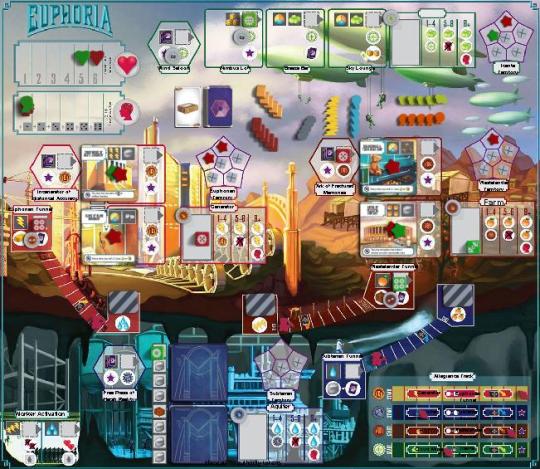
The first time I sat down to play this game, I was overwhelmed, to say the least. This board, though appealing with its artwork and coloring, has a lot going on. It was not until about halfway through gameplay that a light suddenly clicked on in my head and I realized all of the different options I could pursue to achieve victory. It is definitely not a gateway game that new players can jump into right away. It will take some time for players to wrap their heads around, especially those who are newcomers to Euro-style games, but it is certainly worth the learning curve that new players will need to undergo.
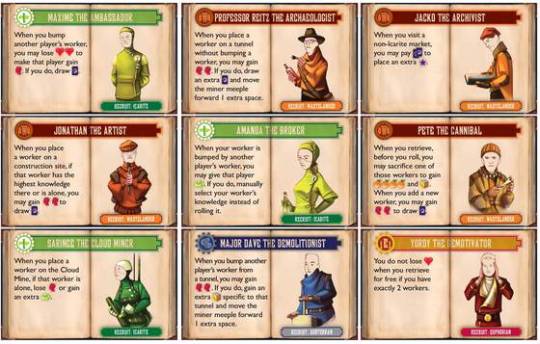
At its core, Euphoria is a worker-placement game. One of the features that makes it stand out from other worker-placement games is the dice act as the players’ workers. The number on each die symbolizes the worker’s knowledge. If the collective knowledge of a player’s workers becomes too high, the workers might realize they are living in a dystopia and desert the player. Ultimately, this game is a race, so players want lots of workers to bring them closer to establishing their authority over the city of Euphoria. Is the increased amount of workers at a player’s disposal worth the risk of allowing them to share their knowledge and potentially come to the conclusion that they are just worthless pawns, though? Each player also has two recruits with their own special ability; one of the recruits is active from the beginning of the game, but the other recruit refuses to join the cause until the player reaches specific milestones. The first player to earn ten authority points wins the game.
The mechanics of Euphoria encourage interaction between players. Even when it is not their turn, players need to keep a close eye on what actions others are taking. While placing a worker somewhere may seem solitary and inconsequential at the time, a simple action like that can lead to the construction of a market in one of the societies. These markets can greatly impact the game. If one player constructs a market alone, all other players suffer the penalties specified by that market for not helping with its construction. These penalties range in severity, with the worst that I have experienced restricting my access to the Icarite society, thereby cutting me off from the Icarite resource of bliss.
I will not go any deeper into the specifics of the gameplay, just because there is so much to unpack and explain. However, I want to highlight one mechanic that I thought was brilliant and had not seen in other worker-placement games. In other worker-placement games, if one player places a worker on a location, that location is usually unavailable to other players until that player moves his or her worker away from that spot. Euphoria allows other players to bump workers to gain access to a location if it is full. This is great because locations are never cut off, but the choice to bump involves some decision making because it can immediately benefit the player whose worker is being bumped by giving he or she a free turn with that worker, although this can harm that player as well if the knowledge of that player’s workers is on the higher end, increasing that player’s risk of losing a worker.
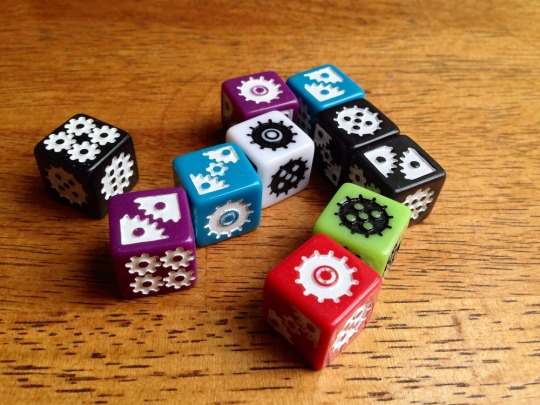
The materials of the game are high quality. Starting with the board, it is not flimsy at all, and it tells players everything they need to know, effectively eliminating the need to look through the rulebook for guidance for more experienced players. The dice are completely different colors, avoiding the perplexing decision a few games make by having the dice be different shades of the same color. The cards hold up well and do not bend easily, and the market tiles are made out of strong cardboard. The meeples, resource, progress, and commodity tokens are all made out of wood.
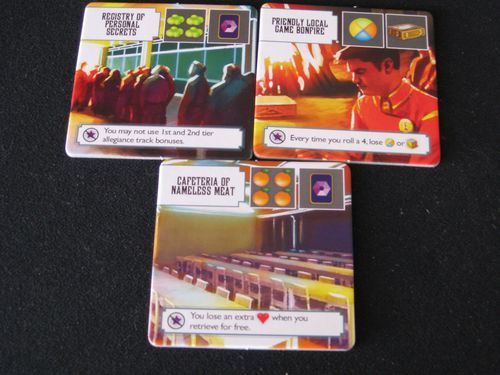
My favorite part of Euphoria is its dark, tongue-in-cheek humor, most clearly seen on the market tiles. With names like the Arena of Peaceful Conflict, the Courthouse of Hasty Judgment, and the Incinerator of Historical Accuracy, how can you not chuckle when a market tile is flipped and revealed? It just fits in with the dystopian theme so well!
Euphoria is playable by up to six people. I have only played a two-player game so far, but the game still performs well. While I noticed that certain aspects of the game almost went untouched with only two people like the tunnels players can dig between the societies, I did not feel like it was making the game fall apart or break. The box says the game can be completed in about one hour, which one would probably not think possible after seeing the board and all of the game materials for the first time. Euphoria was definitely a nice surprise. It offers so many different strategic options, and I look forward to playing it again with more people.
0 notes
Text
Movie Mania: Top 15 of 2017
With the Academy Awards less than a month away, I finally tracked down all of the films from 2017 I wanted to see before making my best of list. In addition to the usual superhero fare, 2017 served up some stellar sci-fi adventures, bold politically-driven narratives, and touching family dramas.
Unlike last year, my tastes appear to differ quite a bit from the Academy’s favorite films of the year. In fact, none of my top five films of the year are a best picture nominee! Compare that to last year when three out of my top five were best picture nominees. (Speaking of last year, I am retroactively moving Hell or High Water into the top three; sorry, Hacksaw Ridge.) Now, without further ado, I give you my favorite films of 2017, sans spoilers.
Honorable Mentions
Get Out
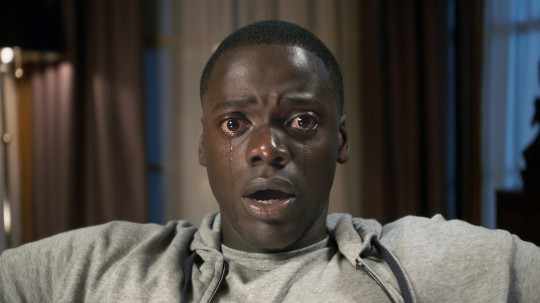
Perhaps the biggest surprise of the year, Get Out comes from the mind of Jordan Peele of Key & Peele fame. In his solo directorial debut, Peele delivers a fresh screenplay that weaves together the comedy and horror genres for a dark, satirical take on racism in America in a way that no film has ever done before.
Get Out follows Chris, a black photographer played by Daniel Kaluuya, who is up for best actor for this performance. Chris’ white girlfriend, Rose (Allison Williams), convinces him to take a weekend trip to her parents’ secluded estate out in the countryside. Rose has not told her parents that she is dating a black man, but she assures Chris that he has nothing to worry about. “My dad would have voted for Obama a third time if he could have. Like, the love is so real. I'm only telling you that because he is definitely going to want to talk to you about that, and it will definitely f***ing suck. But that's because he's a lame dad more than anything else. They are not racist. I would have told you,” Rose promises Chris. Once they arrive at Rose’s parents’ estate, Chris immediately picks up on some unusual behavior and cannot feel at ease as the true horror of this place is steadily revealed.
Despite being released back in February of 2017, this film is still being talked about, and for good reason. Much has already been said about its incisive social critiques, ranging from the hypocrisy of white liberals to the different forms racism can take, particularly the one that grows out of a peculiar jealousy of the physical genetics of black people.
Everyone involved in the film decisively sets the tone of the film from the very beginning. Peele directs Kaluuya in a way that makes the audience question if something strange is actually going on or if Chris is simply overreacting to everyday racial tensions. For his part, Michael Abels uses a blend of Swahili chanting and solemn blues as the meat of his score to create an impending sense of dread. When the film needs to relieve its audience of this growing dread, Peele taps into his comedy roots and brings in Lil Rel Howery’s Rod Williams, a TSA agent and Chris’ best friend. Rod, an apparent expert on classic horror movie tropes, steals every scene he is in, imploring Chris to recognize all of the red flags around him.
Peele does a masterful job ramping up an unsettling sense of danger throughout the film until the audience almost feels suffocated by it at the climax. However, the film leaves something to be desired following the direction it goes after reaching this climax. For all its careful cultivation of its terror-filled atmosphere, the film unfortunately devolves into a Tarantino-esque bloodbath, dampening the impact of the film’s themes as they are replaced in the audience’s minds with these insanely gruesome images of violence.
Get Out succeeds overall because, just like any good horror film, it amplifies fears that are already built into the human psyche. It then takes things to another level by sprinkling in comedy at just the right moments, while still maintaining that serious horror vibe. Even people who do not enjoy the horror genre should summon some inner courage and give Get Out a watch, if for nothing else other than to stay up to date with Internet culture and understand the Get Out challenge (because apparently everything can be a challenge on the Internet nowadays).
Hostiles
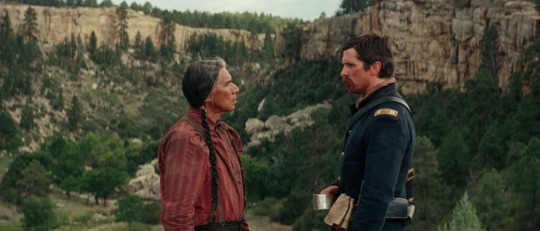
Scott Cooper’s Hostiles stars Christian Bale, Rosamund Pike, and Wes Studi and tells the story of United States Calvary Captain Joseph Blocker (Bale) as he is ordered to escort dying Cheyenne war chief Yellow Hawk (Studi) and his family back to their land in Montana from New Mexico. Cooper does not waste any time thrusting the audience into his film, opening with a bleak scene of terrible despair and loss. Cooper carries these emotions into the rest of his film, evoking the bitter hatred that existed between Native Americans and the soldiers and settlers who invaded their land. Despite this violent divisiveness, Cooper does inject sparks of redemptive hope into the narrative that begin to transform some of the characters.
Masanobu Takayanagi’s cinematography beautifully conveys the expansiveness of the journey from New Mexico to Montana through sweeping landscape shots. Hostiles’ real strength, however, lies upon the amazing acting performances of Bale and Pike. Bale’s Captain Blocker carries a storied past of war and violence that sapped him of some of his humanity and weighs him down. Without even speaking a word, Bale shows how this past has affected Captain Blocker with a stare that is both haunting and haunted. Pike’s Rosalie Quaid undergoes a deep transformation from a traumatized widow who has nothing left to live for to a strong-willed member of the mission. At the beginning of the film, Pike delivers a scary, yet sad, scene that is very reminiscent of the splicer mother from the BioShock video game. She also has another scene when she encounters Native Americans for the first time since an incident that changed her life that is just devastating to watch.
About midway through the film, Hostiles begins to lose steam as Cooper introduces another element to Captain Blocker’s mission. This new addendum to his mission makes the narrative lose its focus for a while and tacks on a plot line that feels superfluous in the end. While Cooper succeeds with his character arcs for Captain Blocker and Rosalie, he sadly fails to make the Native Americans they are escorting anything other than flat, one-dimensional characters. They do not get much screen time of their own, which could have been remedied if that digressive plot element was removed. Overall, however, Bale and Pike’s captivating performances help elevate Hostiles over its uneven narrative. It is a shame that neither one received an Oscar nomination.
#15: Wonder Woman
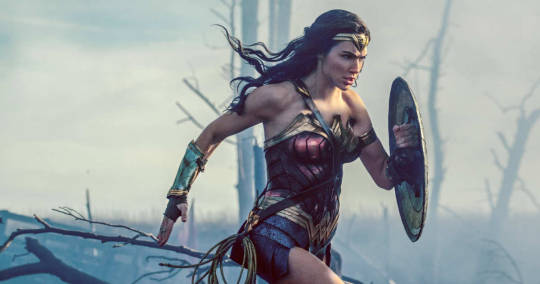
Isn’t it refreshing to finally see a quality film come out of DC? Gal Gadot’s Wonder Woman returns for her first standalone entry set during World War I. Director Patty Jenkins brings forth an earnestness to the character. Even though she is an Amazonian warrior goddess, Jenkins makes sure that Wonder Woman still feels like a normal woman at heart. She can be sensitive and comforting, she can be confused and lose her confidence, and she can be independent and strong. It is really special to see a superhero who does not feel like she is always above everyone else.
In addition to Gadot, Chris Pine joins the cast as Steve Trevor, an American pilot. Pine’s chemistry with Gadot is outstanding, and he, like everyone else in the film, looks like he is having a great time and enjoying every second he is on set. Jenkins detours from the usual drab look of the DC film universe and offers up a vibrant color palette that evokes a feeling of triumphant hope rather than brooding grimness. She deftly handles Wonder Woman’s origin story by starting out on the Amazonian island of Themyscira and not rushing to get off the island. The audience gets a real sense of the culture and bond of the Amazonian women and what is important to them. Once the film does transition off the island, Gadot does an excellent job portraying Wonder Woman’s boundless curiosity as she settles into World War I era Europe. When Wonder Woman steps foot onto the battlefield, Jenkins provides one of the most empowering moments in film history, sure to induce plenty of goosebumps. Throughout the film, Jenkins sprinkles humor in at just the right moments, and the jokes almost always hit.
If not for the third act of this film, Wonder Woman may have ended up higher on this list. It feels like studio executives stepped in and told Jenkins that there was not enough bombastic action, so the final battle turns into a dull, CGI-heavy slugfest. It does not help that the villains in the movie carry on the trend of recent comic book movies by being pretty forgettable. In the end, though, Wonder Woman prevails because it gives audiences a relatable superhero who actually cares enough to be a real hero and protect civilians in danger, even if it stops her from reaching her goal sooner.
#14: Darkest Hour

In what is almost a surefire win for best actor, Gary Oldman transforms into Winston Churchill early in his career as British Prime Minister. Director Joe Wright makes the film feel alive and constantly moving forward as he transports audiences back to the beginning of World War II, even though he takes some historical liberties as he develops Churchill. The supporting cast is solid too, with Ben Mendelsohn as King George VI, Stephen Dillane as Lord Halifax, and Ronald Pickup as Neville Chamberlain. Lily James especially stands out as Elizabeth Layton, Churchill’s secretary, and she shares one of the best scenes of the entire film with Oldman.
Christopher Nolan’s Dunkirk and Wright’s Darkest Hour are both companion stories about survival in the face of mounting evil. While Dunkirk fights against this evil with military measures, Darkest Hour is all about the power of words and the rallying hope they can provide. Darkest Hour paints a portrait of leadership that feels very timely for today’s audiences, anchored by Oldman’s phenomenal performance and elevated by what will surely be the winner for best makeup and hairstyling by Kazuhiro Tsuji, David Malinowski, and Lucy Sibbick.
#13: Split
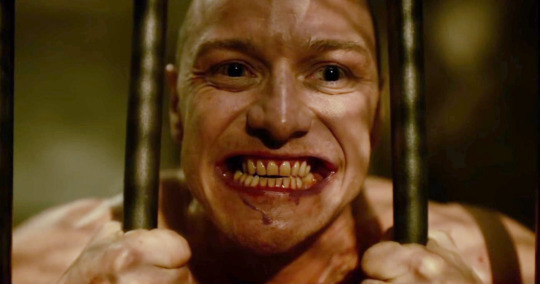
After a few of his more recent ventures, most notably the abysmal The Last Airbender, audience members would be forgiven if they chose to skip M. Night Shyamalan’s latest offering, Split, but they would be doing themselves an incredible disservice. Split represents a return to form for Shyamalan. It also gifts audience with a tour de force in acting from lead James McAvoy. McAvoy plays Kevin Wendell Crumb, a man who suffers from dissociative identity disorder and has 23 distinct personalities, with a 24th close to emerging. The film begins with Kevin’s kidnapping of three teenage girls, played by Anya Taylor-Joy, Hayley Lu Richardson, and Jessica Sula, who spend the rest of the film trying to devise a way to escape from Kevin’s clutches.
Shyamalan does a great job crafting a film that carries a disturbing tone throughout its entire run time. The real reason to watch this film, however, is McAvoy. The actor seamlessly transitions between Kevin’s different personalities while managing to fully realize each one. From the historian Orwell to the nine-year-old Hedwig, McAvoy nails it. It really is a sight to behold. Make sure to stick around for the end of the film when Shyamalan throws in a surprise twist.
#12: Thor: Ragnarok
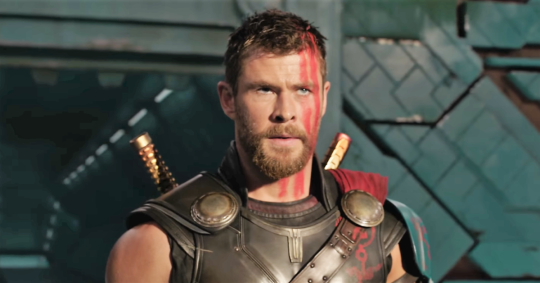
Thor: The Dark World was a low point in the Marvel cinematic universe. Chris Hemsworth has always been great as the titular character, but the standalone films have left something to be desired. Enter Thor: Ragnarok. This third installment in the Thor franchise blows the other two out of the water. Director Taika Waititi takes audiences on a colorful, lively cosmic adventure that is thrilling, funny, and just plain fun. Thor continues to grow as a character, which is remarkable considering how long audiences have known him.Tom Hiddleston returns to play the ever mischievous Loki, Cate Blanchett takes a go as Odin’s villainous firstborn child, Hela, and Tessa Thompson holds her own as Valkyrie. Waititi wisely incorporates the “Planet Hulk” storyline and brings in Mark Ruffalo’s Bruce Banner/ Hulk for a hilarious team up with Thor. Last, but not least, Jeff Goldblum essentially plays himself as the Grandmaster, and it is absolutely fantastic. He steals every scene he is in and delivers all of his lines in such a uniquely comedic fashion.
Surprisingly, the film hits on political themes of colonialism and immigration (Led Zeppelin’s “Immigrant Song” syncs up with one of the big set pieces, just in case you missed that theme), but they never impose on the fun, overall lighthearted tone. Both of the post-credit scenes are terrific, and audiences will leave the film with newfound excitement for the God of Thunder and his fellow big green Avenger.
#11: Coco
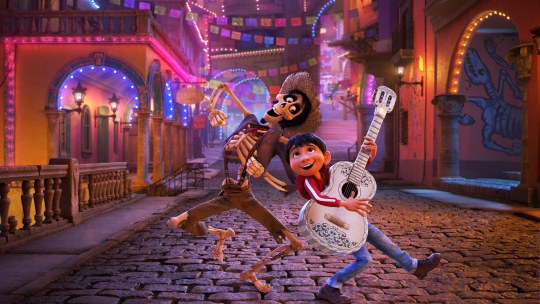
Unlike 2016, which gave audiences hits like Moana, Kubo and the Two Strings, and Zootopia, Coco stands as 2017′s only memorable, emotionally rewarding animated film. It should not have a hard time at all topping competitors like Ferdinand and Boss Baby in its Oscar category. Pixar once again hits a home run on all fronts with this film. The plot follows a 12-year-old Mexican boy named Miguel Rivera who loves music. The only problem is that any form of music is forbidden in his family. Miguel is accidentally transported to the land of the dead on Día de Muertos, so he must rely on his deceased family members, specifically his great-great-grandfather, a famous deceased musician, to return to the living.
Coco packs in several surprising mysteries and plot twists, which all turn out to have satisfying conclusions. Coco also boasts a spectacular score from the great Michael Giacchino and some spirited songs like “Remember Me,” an Oscar nominee for best original song, “Un Poco Loco,” and “Everyone Knows Juanita.” Visually stunning, the animators of Coco make the land of the dead feel just as alive, if not more so, as the land of the living. The film respectfully approaches questions of family, life, death, and culture in a way that simultaneously entertains and educates audiences on the real life customs of Mexicans and their holiday of Día de Muertos.
#10: Phantom Thread
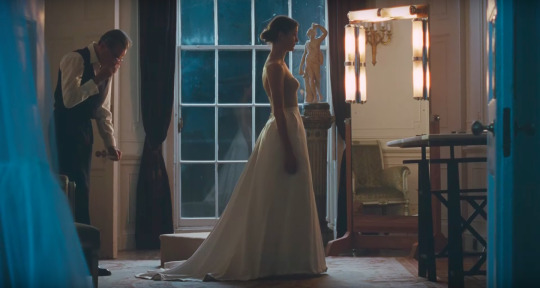
If this truly is Daniel Day-Lewis’ final film before going into retirement, he is going out on a high note. Though it does not quite match his performance in Lincoln, Phantom Thread is a disciplined masterclass in acting. Just like the dresses in the film, Paul Thomas Anderson crafts a finely woven narrative with a remarkable attention to detail. For a film that really only has three characters, it still manages to have a grandness to it. In addition to Day-Lewis as Reynolds Woodcock, the film stars Lesley Manville as his sister, Cyril, and Luxembourgian actress Vicky Krieps as Alma, a waitress who becomes Reynolds’ muse. Phantom Thread is very much a slow burn, but in a good way. Complimented by Jonny Greenwood’s great score, Anderson’s visuals and aesthetics help audiences soak in the intricacies of the world of Alma and Reynolds as they dive deeper into their unconventional, twisted relationship.
#9: The Post
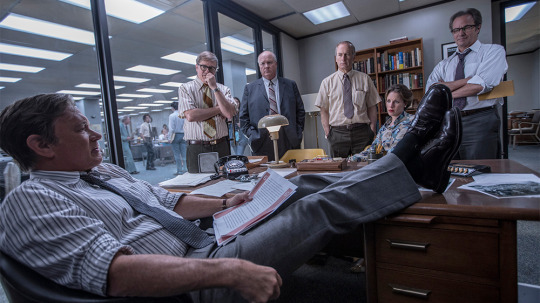
Steven Spielberg, Tom Hanks, Meryl Streep, Bob Odenkirk...what more could you ask for? With Spielberg at the helm, The Post depicts the story of Katharine Graham (Streep), the publisher of The Washington Post, and Ben Bradlee (Hanks), the newspaper’s editor-in-chief, and his team of reporters as they tackle journalistic and legal obstacles on the way to publishing the Pentagon Papers detailing the United States’ true military and political involvement in Vietnam. Hanks and Streep are excellent as always, and Odenkirk has a standout supporting performance as Ben Bagdikian.
John Williams teams up with Spielberg once again, and his score is outstanding. With so much dialogue and exposition, newspaper movies present a tough challenge to composers, but Williams makes it sound easy. Unlike many of Williams’ film scores which overflow with themes and leitmotifs, this is a score mostly about rhythm and movement. In certain scenes, it even mimics the physical mechanics of the presses. Williams is content to let his score play as subtle background dressing throughout much of the film, but every once in a while he lets it soar front and center to really punctuate what is happening on screen. Looking at just one piece, in “The Presses Roll,” Williams builds a base of lively string ostinatos overlaid with constantly moving instrumental textures and staccato brass highlights, all topped off by more meandering strings. “The Presses Roll” has tones of hope and optimism but also hints at danger, indicating to the audience the seriousness of the triumphant decision for The Washington Post to publish the Pentagon Papers.
For a large film that was put together in a very short time frame (Principal photography began on May 30, 2017, and Spielberg finished the final cut on November 6, 2017.), everything feels very polished. In an interview Spielberg said, "When I read the first draft of the script, this wasn't something that could wait three years or two years — this was a story I felt we needed to tell today." Indeed, at a time in our country when the authenticity of the news is always being questioned as reporters work to hold government officials accountable, The Post serves as a commentary of journalism in the current political climate just as much as it does of the one that existed during the Nixon years. It also does a wonderful job tackling sexism in the workplace, particularly in the newspaper business, showing, not necessarily telling, how Graham has to prove herself as the one in charge of The Washington Post.
#8: The Big Sick

Based on the real life relationship of lead Kumail Nanjiani and Emily V. Gordon (Zoe Kazan), The Big Sick shows audiences the start of the pair’s budding romance and, as the title suggests, how their relationship is tested when Emily becomes seriously ill. Written by Gordon and Nanjiani themselves, The Big Sick feels like a vulnerable autobiography that the husband and wife have shared with the whole world. Playing Gordon’s parents are Holly Hunter and Ray Romano. Both are great in their role, and the entire cast has terrific chemistry. Nanjiani does a great job illustrating the inner conflict many Americans probably feel everyday. He does not want to disown his Pakistani heritage and disappoint his family, but at the same time he wants to embrace American life. He also struggles to determine what he really believes, which may turn out to be completely different from the religious tradition his parents raised him under. The Big Sick slows down in some parts and goes on a bit too long, but as critic Moira MacDonald wrote, “...the movie works for the reason that all the best rom-coms do: you fall in love, a little bit, with Kumail and Emily, and want them to stay together.”
#7: Blade Runner 2049

Denis Villeneuve continues his hot streak as one of the most exciting directors working today with Blade Runner 2049. This sequel takes place three decades after 1982′s original Blade Runner and is told from the perspective of K, a blade runner (an agent who hunts down rogue replicants [androids] and kills them) who uncovers a secret that has the potential to start a war between humans and replicants. Villeneuve’s love for the property brightly shines through, and he does not mince any words when he talks about his passion for the film. "Honestly, I knew that no matter what, the studio would make the movie [and] I’m seriously, profoundly, in love with the first movie; it is a link with the birth of my love for cinema. So I said to myself, ‘They will do the movie anyway and I don’t want somebody to f*ck it up,’ and I decided, I’ll give my best and for better or worse, I’ll do it."
Atmosphere and ambiance are important staples of the Blade Runner universe, and Villeneuve masterfully contributes his own interpretation of the universe’s immersive film noir vibe, while staying true to elements of the original. Where perpetual rain played a major role in the original Blade Runner, Villeneuve uses the never-ending winter snow as its own story element in the 2017 version. He also showcases how far technology has advanced in the thirty years since the original, with the constant advertising in Los Angeles now employing lifelike holograms to push products. Speaking of holograms, one of the most fun scenes in the film involves an Elvis hologram, and the timing with it is perfect. When it comes to what he felt he needed to remain most faithful to, Villeneuve cites the original’s sound design and soundtrack, rooted in its synthesizer palette.
To help him put his brilliant ideas on screen, Villeneuve has the help of the genius cinematographer Roger Deakins. Deakins’ cinematography paints jaw-dropping portraits of the ravaged landscape of Las Vegas and the overpopulated Los Angeles. His shots are truly something to behold.
The whole cast is great, from the returning Harrison Ford to the sinister Jared Leto, but Ryan Gosling’s captivating performance as K stands out among the rest. Gosling plays K with unquestionable strength layered with longing, uncertainty, and vulnerability. K makes viewers question what it means to truly be human as he searches for the truth of his own existence.
Hollywood should take notes on Blade Runner 2049. Villeneuve and team have produced a sequel that avoids reboot territory and expands the narrative set up in the original film with a deep, fulfilling story that is uniquely its own and visuals that push the cinematographic boundaries while paying homage to its predecessor. It is a shame that general audiences did not come out to support this cinematic treasure for the box office.
#6: Star Wars: The Last Jedi

Talk about a divisive, mixed bag. Rian Johnson’s Star Wars: The Last Jedi has a lot going for it, but it does not always hit all the marks. Starting off immediately after the events of The Force Awakens, this eighth episode in the saga continues the journeys of the new cast under the tutelage of the Skywalker siblings, Luke (Mark Hamill) and Leia (the late Carrie Fisher). Finn (John Boyega), Rey (Daisy Ridley), and Kylo Ren (Adam Driver) all introduced themselves in The Force Awakens wearing masks; The Last Jedi takes away those masks and forces them to embrace their identities and the paths they have chosen.
Even more so than any of the previous films, The Last Jedi incorporates a lot of humor. Some of the jokes land, but a lot of them are quite frankly unnecessary and, in the worst cases, completely ruin the tone of the scene. Johnson comes across as so hard-pressed to throw in the occasional Guardians of the Galaxy-type humor that he even significantly alters characters. General Hux (Domhnall Gleeson) is a prime example, as Johnson reduces him to the comedic relief role in almost every scene he is in.
Johnson adds a few new characters to the ensemble cast with Resistance mechanic Rose Tico (Kelly Marie Tran), Resistance Vice Admiral Holdo (Laura Dern), and hacker DJ (Benicio del Torro). Rose is a great character on her own, but the relationship she develops with another character feels really forced and inauthentic. Readers of Claudia Gray’s novel Leia, Princess of Alderaan might be disappointed that Holdo does not have too much depth to her character, but at least she is a part of one of the best scenes in the entire film. For some reason, del Torro gives DJ a weird speech impediment that in no way adds to his character, but he is only in the film for a relatively short period of time. Johnson also creates some new aliens for the film, specifically the porgs and the caretakers on Luke’s island planet. The porgs are, of course, adorable, and Johnson wisely does not overuse them. The caretakers act as nuns and have a couple of humorous scenes with Rey.
As far as the returning members of the cast go, Ridley and Driver both continue to excel in their roles. Boyega does the best he can with Johnson’s script, which disappointingly puts Finn through the same motions as The Force Awakens. Captain Phasma (Gwendoline Christie) returns for some reason; fans of Deliilah S. Dawson’s Mad Max meets Star Wars novel Phasma should drop their expectations for the character in the film exponentially because she certainly does not live up to the fully realized character from the novel. Andy Serkis is menacing as the serviceable villain Snoke. Johnson shoehorns Lupita Nyong'o’s Maz Kanata into the film with a short scene that contains some of the worst CGI in the entire production; honestly, her whole part could have been cut and it would not have affected anything. Oscar Isaac’s reckless Poe Dameron might be the only one in the entire film who has a complete character arc, and he manages to maintain his character’s blend of playful joker and ace pilot. C-3PO (Anthony Daniels) and his droid buddies R2-D2 and BB-8 are back, but R2 continues to feel underused. In her last role before her untimely passing, Fisher brings a whole new dynamic to Leia. Although she may not be a Jedi like her brother, Leia also assumes the role of mentor as she leads by example to show the Resistance how a true leader behaves. She is bittersweet to watch, but it is terrific that she got so much screen time. Above all, though, Hamill delivers the performance of a lifetime. While Johnson’s decisions for the character of Luke are questionable, Hamill fully commits to it and does his part to convince audiences that this is the logical progression for Luke. Now if they could only bring back Billy Dee Williams as Lando...
Johnson packs in several jaw-dropping moments. Many of them are thanks to the stunning visuals, in which he uses colors in a way never before seen in any other Star Wars film and his clear homages to Japanese anime. With one scene in particular, Johnson creates one of the best moments in sci-fi, if not cinema, history with the way he combines striking visual effects and sound design. Other jaw-dropping moments in the film derive from completely unexpected, shocking plot twists. Because there are a good amount of these, viewers should really try to see The Last Jedi at least twice because the film is even better the second time around when viewers can actually process what is happening on the screen.
In terms of the story, Kathleen Kennedy, president of Lucasfilm, appears to have granted Johnson a long leash because he takes many creative liberties with his script. This is good and bad. As a standalone film, many, though not all, of Johnson’s decisions pay off. His continued development of the mythology of the Force and its potential power is appreciated. Even more so than Rogue One, The Last Jedi feels like a war film for much of its run time. Canto Bight, unfortunately, is a bust and almost feels like it came from a different film with its animal rights message. In terms of the current trilogy, Johnson often comes across as wiping the slate clean when it comes to answering plot threads that were clearly set up in The Force Awakens. It is now quite clear that Lucasfilm did not plan out this new trilogy from the beginning and is taking it one film at a time. A lot of times, it almost feels like Johnson is giving hardcore Star Wars fans a slap in the face. After all those months of speculation about the backstories of certain characters, Johnson practically shuts it all down. He even does away with several Star Wars standards. No one speaks the famous “I have a bad feeling about this” line (If BB-8 does indeed have that line, does that really count?), and there is no lightsaber duel that is traditionally found in all of the episodic films. Sometimes, audiences can discern what Johnson’s intentions were, but other times it just feels like he is bucking tradition because he can. May the Force be with J.J. Abrams for Episode IX. Johnson virtually undid everything he set up in The Force Awakens, and he ended The Last Jedi with no clear-cut direction forward. Maybe Abrams will pull out the big guns with the Knights of Ren. One can only hope.
As always, the legendary John Williams works his magic with the score. Nominated for an Academy Award (marking Williams’ 51st nomination, the most of any living person), Williams’ score reprises themes from The Force Awakens as well as the original trilogy. He also adds some new pieces like the theme for Canto Bight, which sounds like something one would hear on a Caribbean cruise ship. Simultaneously nostalgic and new, this score succeeds on every level.
The Last Jedi is uneven in parts, but its big moments far outweigh the times when it falls short. It lends itself to repeat viewings, and, at the very least, has certainly set Star Wars in a brand new direction. Oh, and for those wondering:
1. The Empire Strikes Back
2. A New Hope
3. The Force Awakens
4. Return of the Jedi
5. The Last Jedi
6. Revenge of the Sith
7. Rogue One
8. The Phantom Menace
9. Attack of the Clones
#5: Guardians of the Galaxy Vol. 2
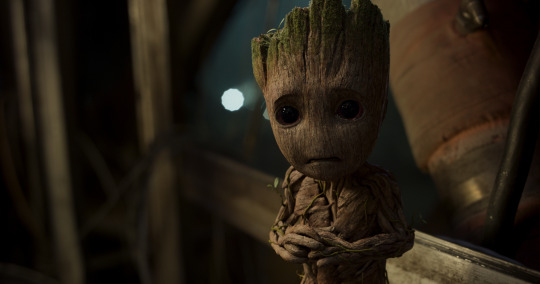
James Gunn’s Guardians of the Galaxy Vol. 2 rounds out this string of sci-fi films. Vol. 2 is a film that is full of heart and takes everything that proved to be successful in the first Guardians and makes it even better. Kurt Russell joins the cast as Ego and turns out to be one of the more memorable villains from the Marvel cinematic universe. Groot (Vin Diesel) is just as entertaining as a little baby as he was as a full grown tree. Drax (Dave Bautista) provides constant comic relief with his lack of a social filter, but he also displays a new level of heartbreaking innocence. Gamora (Zoe Saldana) acts like the most practical of the Guardians, and her relationship with her sister, Nebula (Karen Gillan), is well developed. Rocket (Bradley Cooper) ignites the plot of the film and is forced to come to terms with his own insecurities. Chris Pratt demonstrates that he has a solid hold on the character of Peter Quill/ Star-Lord. Michael Rooker stands out for making every scene he is in count as he takes the supporting character of Yondu and gives him tremendous depth.
It would not be Guardians without an Awesome Mix, and Vol. 2 might just be better than the first one. “The Chain” by Fleetwood Mac and “Brandy (You’re a Fine Girl)” by Looking Glass are deeply embedded into the fibers of the film. Electric Light Orchestra’s “Mr. Blue Sky” kicks the film off on an upbeat, joyful note. Paired with an incredible sequence involving Yondu, Rocket, and Groot, “Come a Little Bit Closer” by Jay & The Americans fits perfectly.
Vol. 2 plays up its signature Guardians brand of humor, but it is not afraid to tap into its sentimental side too as it examines themes of fatherhood and family in very touching ways. The film definitely falls into the category of successful sequels in which audiences get to see the characters they know and love continue to develop with meaningful arcs that leave them excited for what the future has in store for this motley crew.
#4: Wonder
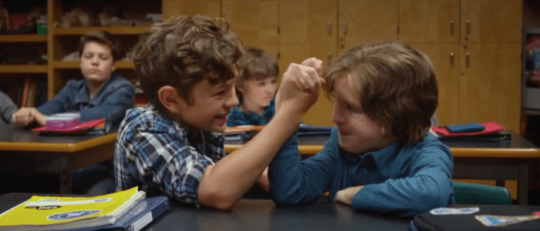
Wonder is wonderful. Based on R.J. Palacio’s 2012 book with the same namesake, the film follows August “Augie” Pullman, a boy in fifth grade living with Treacher Collins syndrome, during a full school year. Thus far, Augie has been homeschooled, but his parents have decided to enroll him in a preparatory school to help him develop social skills and be more comfortable around people. Director Stephen Chbosky wisely establishes Augie as a normal boy early on, despite his physical conditions (kudos to the makeup department, by the way). Bursting with an active imagination, Augie loves Star Wars and Minecraft, is fascinated by science, and even has a witty sense of humor. Chboksy uses Augie’s imagination to tap into magical realism at parts of the film, but it plays right into the scenes and is never jarring.
Jacob Tremblay, a big Star Wars fan himself, stars as Augie and does an astounding job making audiences connect to his character, even when his head is covered by an astronaut helmet that Augie uses to hide his facial deformities. After following Augie for a while, Chbosky and his team of writers brilliantly take the film to a whole new level and shift perspectives, letting audiences see life from the point of view of those closest to Augie. Though not given too much to do, Owen Wilson makes the most of his screen time as Augie’s dad, Nate Pullman, who uses humor to try to relieve any tension and make the best of a situation. Julia Roberts plays Augie’s loving and supportive mom, Isabel Pullman. Jack Will, played by Noah Jupe, becomes Augie’s best friend and connects with him as an outsider since he is dependent on a scholarship to attend school; Noah’s friendship with Augie ends up being the catalyst for a heavy portion of the most legitimate drama in the film. Olivia “Via” Pullman (Izabela Vidovic), Augie’s older sister, claims the best perspective that Chbosky and team treat the audience to. Via loves her brother so much that she has sacrificed her own emotional needs from her family to let Augie be the center of attention even as she wades through high school trying to find her place now that her best friend, Miranda (Danielle Rose Russell), has started ignoring her.
Although the film’s ending could have been trimmed down, Wonder is an emotional story that illustrates the importance of acceptance and of dedicated family and friends. The film should be commended for how it handles bullies. It gets to one of the roots of the problem and reveals the common connection between bullies and their entitled parents. Wonder avoids the pitfall of many school dramas of reveling in the downfall of these bullies. As Joshua Rothkopf puts it, “Bullies and frenemies don't get served so much as given quiet moments to confront their own mistakes.” Wonder is a film that teachers should show to kids in schools throughout the country because it teaches viewers that it is always best to “choose kind.” The world today could certainly learn a lot from that message.
#3: Logan Lucky

Director Steven Soderbergh comes out of retirement to bring audiences one of the funniest, yet most heartfelt films of the year, Logan Lucky. Essentially the poor man’s Ocean’s Eleven, Logan Lucky follows the Logan family as they attempt to rob the Charlotte Motor Speedway during a NASCAR race. Leading the effort is Jimmy Logan, played by Channing Tatum in what may be his best role yet. Jimmy used to be a star football player before being sidelined by a serious injury. He now tries to make ends meet as a blue-collar worker while making time for his daughter, Sadie (Farrah Mackenzie), and her beauty pageants. Clyde Logan (Adam Driver) is Jimmy’s brother who lost an arm after serving two tours in Iraq. The brothers decide they need some help to pull off this massive heist, so they recruit Daniel Craig’s Joe Bang (Yes, that really is his name.), an inmate who specializes in safe-cracking and explosions, and his two dimwitted brothers, Fish (Jack Quaid) and Sam (Brian Gleeson). Craig seems to relish every moment of his performance as Joe Bang, and it is great seeing him really sink into the character and have an absolute blast doing it. The rest of the ensemble cast includes big names like Sebastian Stan, Hillary Swank, Seth MacFarlane, and Katie Holmes as well as a few real life NASCAR notables, but the film clearly belongs to Craig, Driver, and Tatum.
The film delivers gut-busting comedy on every level, from physical mannerisms and body language to playful sarcasm and jokes that hit every single time. There is an absolutely hilarious scene with Joe Bang and gummy bears that throws the audience for a comedic loop. When asked if they know anything about hacking, one of Joe’s brothers proclaims, “I know everything there is to know about computers...all the Twitters; I know ‘em.” There is even a minute and a half long Game of Thrones joke that takes a jab at author George R.R. Martin’s seemingly nonexistent publishing deadlines for the remaining books in the series.
Logan Lucky does not forget to touch the heart even with how much it tickles the funny bone. For all the films that used it in 2017, Logan Lucky does the best job incorporating John Denver’s “Take Me Home, Country Roads.” It pops up a couple of times throughout the film, but it has the biggest emotional impact near the end, when it will most likely leave many audience members tearing up. Logan Lucky packs a whole lot of fun into its two hour run time, and part of that is due to the cast looking like they are enjoying themselves just as much as viewers will enjoy the film.
#2: The Florida Project

The Florida Project goes down as perhaps the most criminally underseen film of the year. However, it is hard to blame audiences because it is difficult to recall any trailers or promotional marketing material for this film. It is almost as if it came and went without most people even noticing, and that is a darn shame because The Florida Project is one of the most powerful, moving films released in recent years.
Set during summer vacation in the shadows of Walt Disney World in Florida, director Sean Baker’s The Florida Project is about the über-charismatic six-year-old troublemaker Moonee (Brooklynn Prince) and her ragtag group of friends as well as Moonee’s struggling mother, Halley (Bria Vinaite). Moonee and Halley live in the Magic Castle. No, it is not Cinderella’s Castle in Magic Kingdom; rather, Magic Castle is a motel occupied by poor, low-income families on the economic margin of being homeless who have basically made it their home, the kind of motel that people pay little to no attention to as they speed past it and other cheap motels and tourist traps on this strip of road. In that sense, the people living there are just like the motel; people look away or try to completely ignore Halley and Moonee when they venture out of the motel. In fact, the only people who do not live at the motel that might visit it are the meals on wheels charity groups and Disney World tourists who mistakenly book there instead of a resort in the park.
Baker purposefully introduces audiences to Moonee and her friends first at the very beginning of the film because he wants to focus on the scrappy optimism of these children, despite their parents’ rough economic situation. If Baker had gone the other direction and put Halley front and center, her struggle with poverty might have overwhelmed audiences and made it hard to sympathize with her. The wide-eyed and imaginative Moonee, on the other hand, is a normal six-year-old girl who audiences can easily connect to. She makes each day its own adventure, whether she is putting a dead fish in the motel pool in an attempt to revive it or cutting off the motel’s power just to see what might happen. She also gets a kick out of the little things like brushing her doll’s hair in the bathtub and making funny noises into an oscillating fan.
Cinematographer Alexis Zabe helps Baker keep the film centered on the perspective of Moonee and her friends by using low camera angles. While the children are almost always fully in the frame of the shot, adults are often cut off so that they are just a torso and a pair of legs; conversely, there are a few shots that make the adults look they are towering over everything else. Everything appears so much bigger from this low camera angle, helping viewers see this world through the eyes of the children. Baker and Zabe also use colors to contribute to the whimsical nature of the film, adding yet another visual reminder that the events in the lives of the characters are happening near the happiest place on Earth.
Not to be lost amidst the breakout performances of Prince and Vinaite, Willem Dafoe turns in one of the absolute best performances of his career as Bobby, the motel manager. Although his appearances in the film are episodic, Dafoe makes the supporting character of Bobby into a fully realized, impactful three-dimensional character. Bobby acts strict on the outside, but he obviously cares deeply for each of the occupants of his motel and wants the best for them, even if it means going out of his way to help them out. He especially watches out for Moonee and her friends, often assuming the role of the protective father figure they have never had.
By taking audiences through the repetition of everyday life for these characters, Baker makes their poverty even more real. Through this repetition, he also builds the contrast between Moonee’s enchanted dream world and Halley’s harsh reality until they come crashing together in the ending of the film. Because the audience has accompanied Moonee on her fun, joyful escapades throughout the film, Baker’s ending is extremely heartbreaking. In fact, The Florida Project might just have the best, most brilliant ending of any film from 2017. Without spoiling anything, Baker certainly leaves room for plenty of different emotional reactions and interpretations, and that is part of the beauty of it. The Florida Project is one of those rare works of cinema that has a deeply transformative effect upon audiences, making them evaluate the way they look at the world and the people living in it. Do not miss this one.
#1: Logan
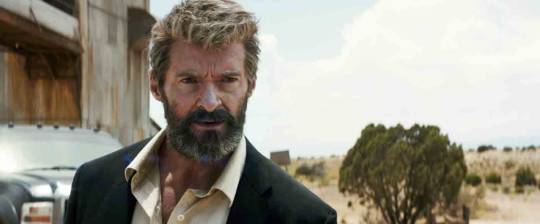
Not since Christopher Nolan’s The Dark Knight has there been a comic book movie that transcends the genre like Logan does. In Logan, director James Mangold studies the distinctions between heroes and legends. The titular Logan, played by Hugh Jackman in what is supposedly the actor’s last go at the role, embodies the Western archetype of the old, retired gunslinger who decides to put away his revolver, or in Logan’s case his Adamantium claws, to live out the rest of his life in relative peace. Inspired by “Old Man Logan” by Mark Millar and Steve McNiven, the film follows the weary Logan and the extremely ill Charles Xavier (Patrick Stewart) as they try to help a mysterious girl named Laura (Dafne Keen) find a refuge called Eden.
The beauty of the film comes from Mangold’s decision to focus on Logan and his humanity, not Wolverine and his superpowers. Jackman takes it a step further with his portrayal of the character. This version of Logan is a man who is struggling to find a purpose in life and sees little to no point in fighting anymore. Likewise, Stewart delivers a heartbreaking performance of the unstable Charles Xavier. Gone are his days as Professor X, the leader and founder of the X-Men. Rather than facing off against his rival Magneto, Charles now fights against Father Time and its effects on his body and mind. Newcomer Keen is so good in her role as Laura that she almost steals the film from Jackman.
Mangold and his cinematographer John Mathieson handle the action scenes in this R-rated film masterfully. Every attack has a brutal impact because Mangold and Mathieson rely more on fight choreography rather than rapid fire editing common for big superhero action scenes. These fight scenes are character-driven rather than pure spectacle and always feel organic to the plot.
By deconstructing the superhero myth, Logan illustrates how deep the genre can reach. Viscerally exciting, Logan is not just a great superhero film, but a great film period.
All of the films I saw from 2017:
· Split
· Get Out
· Logan
· Beauty and the Beast
· Guardians of the Galaxy Vol. 2
· Pirates of the Caribbean: Dead Men Tell No Tales
· Wonder Woman
· Spider-Man: Homecoming
· Dunkirk
· Wind River
· Logan Lucky
· Kingsman: The Golden Circle
· Battle of the Sexes
· Blade Runner 2049
· The Florida Project
· Thor: Ragnarok
· Lady Bird
· Murder on the Orient Express
· Three Billboards Outside Ebbing, Missouri
· Justice League
· Wonder
· Coco
· Darkest Hour
· Star Wars: The Last Jedi
· Hostiles
· The Post
· Phantom Thread
· The Big Sick
· I Don’t Feel at Home in This World Anymore
0 notes
Text
Board Game Bonanza
It is that time of year again where I awaken this blog from its extended hibernation, and this time I am coming at you with a little something different, something brand new that’s never been featured on this blog before.
About midway through 2017 I really got into board games. Not your typical Monopoly or Sorry, mind you, but real tabletop games. I wish I would have been exposed to these types of games much earlier, but I am so thankful for all of the fun I have had since I have started playing them. These games can really suck you in and make you oblivious to how much time has passed. One day, for example, my friend and I played board games for six or seven hours straight.
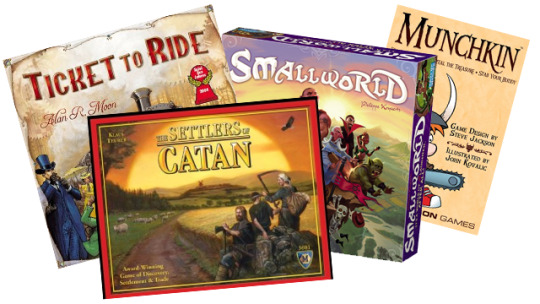
For this post I am going to cover the board games I played in 2017 and give a short review of each one. I would consider almost all of the games I am going to talk about here gateway games, meaning it does not take too much time or effort to understand and enjoy them, so do yourself a favor, grab some friends, and see what you have been missing in the world of tabletop games.
#20: BioShock Infinite: The Siege of Columbia
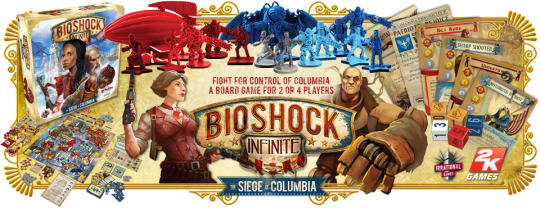
As a big fan of Ken Levine’s BioShock video games, I had to try out the board game inspired by BioShock Infinite. In BioShock Infinite, the player controls Booker DeWitt as he is sent to the city in the clouds, Columbia, where he rescues a young woman named Elizabeth from captivity. Though Columbia appears to be a floating utopia at first glance, further exploration by the player reveals its dark reality. Two factions are at war over control of Columbia. The elite Founders rule through a policy of nativism to ensure that White Americans keep their privileged place in the hierarchy of the society. Meanwhile, the Vox Populi seek to overthrow the Founders in a bloody rebellion for the sake of Columbia’s underclass. The board game lets players take control of either faction as they fight to win control of the different districts of Columbia. Because there are only two factions, the game can be played by two players in a head-to-head format, or by four players paired off in two teams. In my opinion, the game plays best with two players. The first faction to 10 victory points wins.
Each turn of the game is divided into three phases. During the World Event Phase, players cast votes on an effect that may or may not come into play depending on the outcome of the vote. The Player Turns Phase comes next. This phase has four steps. In the first step, the player produces cards in his or her hand to collect currency. With the following step, the player recruits new units, builds new structures, or purchases upgrades. After this step, the player is able to move any four units he or she controls to another location. The player can choose to slowly traverse Columbia by traveling to locations that are adjacent to each other, or the player can take the riskier but faster mode of transportation called the Sky-Line. When using the Sky-Line, the player must roll the three Sky-Line dice to see if his or her unit makes it through the Sky-Line safely. As long as the player rolls one thumbs up die, his or her unit survives. If a thumbs up is not rolled, the player must discard losses cards or units. For the final step of the Player Turns Phase, the player resolves combat. Combat can take place with Booker, an opponent, or an undiscovered territory. Each undiscovered location has a random token on it. When a player tries to claim an undiscovered location, that token is flipped over, and the player must exceed the number listed on the token to claim the location. The final phase of the round is known as the Refresh Phase. At this time, the players replenish the cards in their hands and draw a victory point card. Victory points are earned by controlling all of the locations in a territory or by fulfilling the criteria set forth by a victory point card and claiming it. The game ends with the first player to collect ten victory points. The game can also end if there are no more world event cards to draw. If this occurs, Booker and Elizabeth have escaped from Columbia, and the player with the most victory points wins.
BioShock Infinite: The Siege of Columbia assumes that players are fans of the source material. Players who have not heard of the video game may not understand the theme and may assume it is some sort of odd sci-fi Americana mashup. However, players who are familiar with BioShock Infinite will appreciate the detail that went into the artwork and models and will feel a great sense of immersion into the world of Columbia.
The game employs a great mechanic that aids the underdog throughout the course of the game. During the World Event Phase, Booker will vote on the side of the player with the fewest victory points. This helps to balance the game and keep things competitive. Speaking of Booker, he and Elizabeth can really wreak havoc on the game, easily causing the momentum to shift from one player to another. Because of this, players’ strategies can change instantly.
While the game certainly earns points for capturing the expansive feel of the world of Columbia, its expansiveness can also be a detriment. Players can spend a lot of time cross-referencing their player card, the board, and the rules. It can also be a little intimidating to keep track of so many units, upgrades, and cards. With so many pieces, organization can come at the expense of time. New players might feel overwhelmed with all of the phases and steps involved in their turn, so it definitely helps to have an experienced player for a first-time playthrough. The game time can also be a turn off with the shortest game players can finish probably going just above the hour mark.
Fans who love the BioShock franchise and board games will be pleased with BioShock Infinite: The Siege of Columbia. If someone is new to tabletop gaming, they should stay away from this board game and seek a more traditional gateway game that is far less complex in nature.
#19: Betrayal at House on the Hill
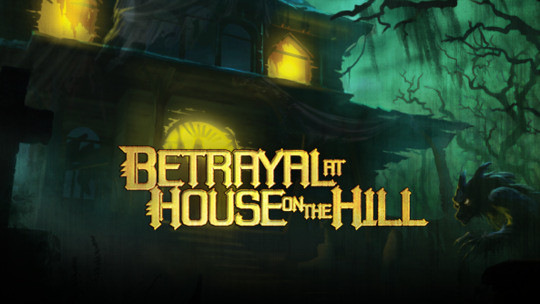
Have you ever wanted to craft your own haunted house adventure? Betrayal at House on the Hill lets you do just that! Tile by tile, players expand the size of the house by discovering new rooms, each with its own spooky omen or frightening spirit.
Designed for three to six players, Betrayal at House on the Hill essentially has two main parts to it. The game starts off as a cooperative exploration as the players work together to uncover the secrets of the haunted house. At a certain point in the game, one of the players is forced by a mechanic of the game known as the Haunt to betray the rest of his or her party, and the other players must continue to work together to take down this traitor and escape the house.
Players can choose between six different characters, each with different starting levels of attributes. Players manage their character’s attributes throughout the game. Might and speed encompass their character’s physical attributes, and sanity and knowledge make up their character’s mental attributes. Players use their respective character plate cards to track these attributes. The meter for each attribute does not follow a sequential order. For example, a character’s might meter may read 6, 5, 5, 4, 4, 3, 2, 1. If one of character’s attributes ever reaches the skull on that attribute’s meter, the character dies and that player is out of the game. Because the attribute meters are not in a strict sequential order, the actual value of that attribute may not change, but the player is one level closer to losing.
During a player’s turn, he or she can move through a number of rooms according to their current level of speed. In the course of the player’s exploration, he or she will probably have to draw an event, item, or omen card. Event cards usually make the player roll based on one of his or her attributes to avoid damage or gain a benefit. Item cards, of course, give the player some form of equipment that can be used or traded with other players. The most dreaded of the three card types, omen cards dictate something to the player and then forces that player to roll six dice. If the player’s roll totals less than the number of omen cards that have already been drawn, the Haunt phase starts and the dynamics of the game change. If, on the other hand, the player’s roll is greater than or equal to the number of omen cards that have been drawn, the game continues as normal without going into the Haunt phase.
When the Haunt phase is triggered by an omen roll, players use the game’s rulebook to determine which Haunt they are going to play based on which room and omen started the Haunt. Once the Haunt is revealed, the traitor player goes to another room with the traitor book and the other players remain and go over their own rulebook. Haunt scenarios vary from zombies, werewolves, cannibals, vampires, and pretty much every horror monster in between. The game ends when the traitor or the players have met the goal the game has set forth for them.
The designers did an excellent job with the theme of Betrayal at House on the Hill. It successfully gives off a suspenseful atmosphere, and each turn feels like it has weight to it. The setup of the game allows for randomization of the layout of the house each time the game is played, and with fifty haunt scenarios in total, the story will likely be different too.
While I like how the different attribute levels of the characters affects gameplay, I do not like that if a character reaches the lowest level on the attribute meter, that player is out of the game. Since the playtime for this game exceeds the hour mark in most cases, that could mean a lot of boring waiting around and watching other people have fun. The losing player could remedy this by jumping in and advising the remaining players on what they should do, but this could easily result in a tabletop quarterback, which nobody likes in a cooperative game.
While the attribute meters on the character plate cards are easy to follow, they are not easy to mark thanks to the plastic tab that the game uses. In my experience, this tab can easily slide and lose its spot on the meter from an accidental bump or the slightest shaking of the table.
I also had my issues with the Haunt phase of the game. When I played Betrayal at House on the Hill for the first time, I ended up being the traitor, and I had no idea what to do. Sure, the game provides the traitor with his or her own rulebook to follow, but a lot of these haunt scenarios have multiple layers to them and lots of stipulations that are easily overwhelming. While I think the two separate rulebooks for the Haunt phase are a great idea, the game devolves into a chore of constantly checking back to the rulebook to make sure everything is being done correctly. Quite frankly, I did not enjoy that the game practically halted for a reading session to understand the new rules that were coming into play with the Haunt.
Betrayal at House on the Hill excels with its horror theme, and players really do feel like a part of this story they are uncovering. However, the game changes with the Haunt phase, and some people may not like that. Again, I recommend that first time players for this game bring along someone with a fair amount of experience; perhaps that person may be able to streamline the Haunt phase and cut down on the reading time required to understand how the Haunt works.
#18: Boss Monster: The Dungeon Building Card Game
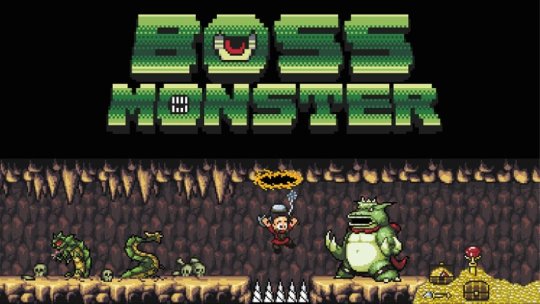
Boss Monster pits two to four players against one another to see who can build the best side-scrolling dungeon that no hero will be able to make it out of alive. A player wins by being the first to collect the souls of ten defeated heroes, or, conversely, a player can lose by being the first to take five wounds from heroes who make it through his or her dungeon alive.
Boss Monster challenges players to balance two competing goals. Players need to lure heroes to their dungeon at a faster rate than their opponents, but they also need to make sure their dungeon is strong enough to defeat those heroes. As a catch, dungeon rooms with a higher treasure value that are more likely to attract heroes usually deal less damage, so dungeon management is key to success. Each turn players can build one room for their dungeon, or they can upgrade one of the active rooms in their dungeon. Players may also be able to use a spell during their turn to gain an advantage or affect an opponent.
Styled after early 16-bit video game designs, the artwork of Boss Monster looks like something straight out of a Nintendo sidescroller. Even the box looks like a video game cartridge! The symbols on the cards are pretty self-explanatory, so players won’t have to constantly refer back to the rulebook, thankfully. Play moves at a steady pace, and games seem to last between twenty to thirty minutes.
I really like how the game forces players to tackle two competing priorities. The first time I played the game, I was so concerned about protecting myself from collecting wounds from heroes that survived my dungeon that I lost sight of the fact that you need dungeon rooms high in treasure value to attract heroes to your dungeon in the first place.
In the few times that I have played Boss Monster, I do not recall seeing many of the same cards, so that tells me that the deck is a good size. Several expansions are available to keep the replayability factor high. Boss Monster won’t be the entrée of your game night, but it can certainly be a solid appetizer course.
#17: Spy Alley

Spy Alley is a two to six player game in which each player assumes the identity of a secret agent working for the spy agency of one of six countries — France, Italy, Germany, Great Britain, the United States of America, or Russia. Player nationalities are shuffled and distributed randomly at the beginning of the game; players do not reveal their nationality to each other. Players take turns moving around the board as they work towards their goal of reaching their country’s embassy after collecting the password, disguise, key, and code book for their country. In the meantime, other players will be trying to guess everyone’s identity. When a player’s identity is exposed, that player is out of the game and must forfeit any money he or she has collected as well as his or her identity, which the player who guessed correctly may assume. If a player guesses an identity incorrectly, that player is out and must forfeit everything. Spy Alley uses deception as a key element, so players bluff each other by buying items of nationalities that they do not need to win to keep others off their scent.
Surprisingly, there is a good deal of strategy involved in Spy Alley. Do you try to collect all of the items for your country in a speedy manner, or do you distribute items across nationalities to deceive other players? Similar to when someone tries to solve the murder in the classic board game Clue, players’ heart rates will increase a bit thanks to the intensity of the decision to guess a spy’s nationality. Players really do have to go all in when they make a guess. Perhaps my favorite thing about Spy Alley is the ability to change identities and throw everyone off. Did you change to the new identity of a player that just lost, or did you keep your same identity? Hopefully for you, they will never know before it is too late!
Spy Alley has a lot going for it for such a simple game. After quickly glancing through the rulebook once, players will probably never have to pick it up again. Games last no longer than forty-five minutes and can be super short if one player is really lucky with their guesses. With a deduction game like this, it is best to play with as many players as possible. If you enjoy games like Clue and are a fan of the spy theme, you are going to have a good time with this game.
#16: Once Upon a Time: The Storytelling Card Game
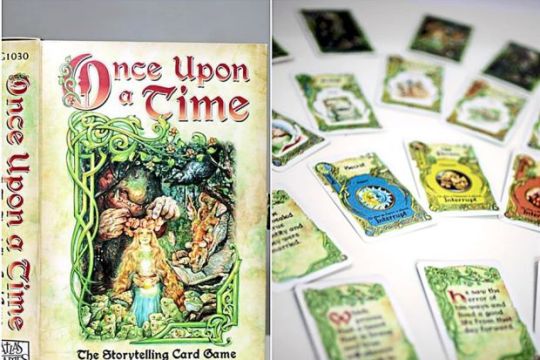
Once upon a time there was a game, and in this game players used the cards they were dealt to create memorable stories of kings and queens, giants and trolls, dragons and fairies, witches and wizards, goblins and unicorns, and everything imaginable in the realm. The possibilities are quite endless!
Playable by up to six people, Once Upon a Time balances the cooperative with the competitive. Each player starts with a certain amount of story cards in his or her hand and one Happy Ever After card. The story cards are divided into five different categories to help players along with their stories: character, event, aspect, thing, and place. There are also interrupt cards that allow players to assume the role of the active storyteller. A player wins when he or she has played all of his or her cards, including the Happy Ever After card to end the story. However, winning is only half the fun in this game, and this is where the cooperative aspect kicks in. While winning may be the end goal, the main point of the game is to craft an entertaining story with your fellow players. You can follow conventional fairy tale storylines, or you can concoct something that is completely out there, as long as your cards are the driving force of your story.
The artwork for Once Upon a Time is a feast for the eyes. Hearkening back to classic fairy tale illustrations, the artwork on the cards makes you feel like you are laying out your own illustrated storybook. The box also catches the eye, and I like that it has a flap that opens up to reveal what the game looks like and how it is played. That sort of visual really helps someone who is browsing in a game store get a taste of the product. At the very least, they are able to examine the theme and see if it is their cup of tea.
Once Upon a Time is not for everyone. People who are very competitive are not fun to play with in this game. In my experience, they are looking to empty their hand and play their Happy Ever After card as soon as they can to win, even if it comes at the expense of the quality of the story. You can also encounter players who are not very creative or do not want to put that much effort into coming up with or adding to the story. I can see this game being an excellent tool to use with kids to teach them writing skills. It also makes for a fun exercise in a creative writing class. The playtime all depends upon the length of the story the players are creating, which is a nice feature. If players want to add an additional challenge to this game, one idea might be to add a time limit. Once Upon a Time is fun to replay, and you will probably find yourself wanting to create a brand new world full of brand new characters as soon as you finish your first playthrough. There are quite a few expansions out there if you ever find yourself wanting to add in new story elements to mix things up. You can also easily create your own storytelling cards to make the game uniquely your own.
Your enjoyment of Once Upon a Time is completely dependent upon the people you play with, so grab a group of enthusiastic and imaginative friends and get to work on creating the next classic fairy tale of our time.
#15: Gloom
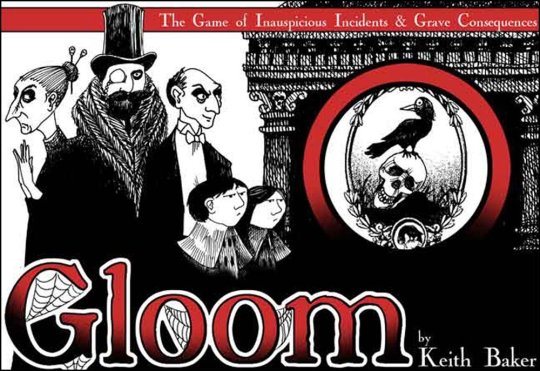
Do things in Once Upon a Time end a bit too, well, happily ever after for your liking? If that is the case, Gloom has got you covered. While continuing along with the same fairy tale theme, Gloom has pretty much the exact opposite goal of Once Upon a Time. In Gloom, each player controls a family of classic fairy tale characters like Pinocchio or the Stepmother, and the player who made their family members the most miserable before killing them wins. That is right; there is no happily ever after in Gloom.
Like Once Upon a Time, Gloom only consists of cards. Gloom’s cards stand out from the rest of the pack though because they are transparent plastic. This feature allows multiple cards to be played on top of one another. Players alter a family member’s disposition by placing modifier cards on top of that character’s card. Players want to pile on all the tragedies in the world upon their family members, but they might also want to sabotage their opponents by cheering up their family members with several happy occasions. For example, one player might make one of their family members miserable by having them “disgraced at a dance” and then have them “put into prison” before topping it off by having that character suffer an untimely death after being “burnt by a mob.” That player could also cheer up an opponent’s family member by letting him or her enjoy “a picnic in a park” and then have that character be “married magnificently.” Since the cards are transparent, values from previous modifier cards continue to show through or are covered when another modifier card is placed on top of a character. This makes it very easy to see the worth of each family member at all times.
Gloom is full of charming dark humor, and the flavor text on the cards always earns some nice chuckles. The text on the aforementioned “was burnt by a mob” untimely death card, for example, says, “Fifty people with torches and pitchforks can’t be wrong.” Isn’t that just lovely?
While it is indeed simple to keep track of your family’s worth, some modifier cards come with an effect explained near the bottom of the card. These effects kick in at different times; some of them are immediate, while others are continuous until another card is placed on top of it. I found it a bit hard at times to keep up with all of the different effects on each of my family members, and I know for a fact I forgot to use some of the beneficial effects to my advantage on a few of my turns. Similar to Once Upon a Time, the people you play Gloom with will determine how much fun you have. Gloom does not require players to tell a story, but the game turns out to be a lot more fun when players can weave a full narrative into their family’s misery. As far as the replay value is concerned, I am not sure players will be chomping at the bit to play another round of Gloom in the same session. In my experience, it is a game you enjoy once that night and then you have had your fill and are ready to move on to the next game. Keep in mind there are expansions to Gloom out there that add new cards and rules to change things up in the base game.
Able to last a solid forty-five minutes to an hour if played correctly, everyone will be happy to see Gloom at your next game night as they bring doom and gloom to the characters in their family!
#14: Lost Cities
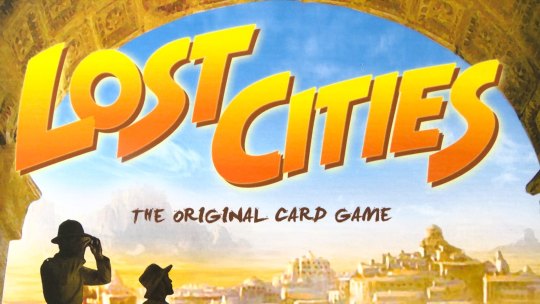
Lost Cities earns the distinction of being the only strictly two-player game on my list. In this card game, players work towards the goal of mounting the most profitable archaeological expeditions. In addition to the cards, the game comes with a board that shows the five different expedition areas and holds discarded cards and keeps them organized. The cards come in five different colors representing the five different expedition areas. Cards of each color go from 2-10 and include three special handshake cards. Handshake cards are basically an investment in an expedition that serve as a score multiplier and are considered below 2 in the numerical order.
Players must play one card each turn, either by discarding a card to the appropriate discard pile or by using a card for an expedition. After playing a card, players draw one card from the top of the deck or from the top of one of the five discard piles. The game continues in this fashion until there are no more cards left in the deck. At that point, the game ends, players discard whatever cards they have left in their hand, and they score their expeditions.
Players start an expedition when they play one card for that area. Players must play their cards for an expedition in ascending order, but the cards do not have to be in consecutive order. For example, if a players plays a 3, he or she can no longer play a 2 or a handshake card for that expedition. Each card is worth the value it depicts when it comes to scoring an expedition. Keep in mind that expeditions start at a value of -20 so you must play at least twenty points of cards into an expedition in order to make a profit. A twenty point bonus is awarded to every expedition with at least eight cards played into it. If the scoring still does not make sense, a couple of concrete examples might help.
An expedition has a 3,5,7,8, and 10 for a total of 33. This expedition is worth 13 total points: 33 minus the initial -20.
An expedition has one handshake, a 2,6, and 7 for a total of 15. This expedition is worth -10 total points: 15 minus the initial 20, ×2 for the multiplier.
Lost Cities is a fun, quick game, usually lasting no more than fifteen minutes. Players should definitely employ some strategy when planning their expeditions. Should you wait to see if you can build up that ascending order? Is it worth the risk to start with a handshake multiplier? What about using multiple handshakes for one expedition? By the way, a fun Easter egg to discover is that all of the cards of one color illustrate a cool little scene at that expedition area when laid out in ascending order. It adds a nice little touch to the game.
#13: Exploding Kittens
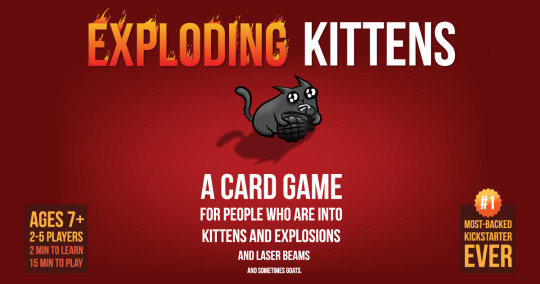
Exploding Kittens is marketed as “a highly-strategic, kitty-powered version of Russian Roulette.” Need you know any more than that?
Perhaps the simplest game on my list, Exploding Kittens plays like a cousin to Uno. The catch is that the player who draws an exploding kitten loses the game. Defuse cards allow players to save themselves from the exploding kittens, but they are very sparse in number. The deck is also made up of cards that let players see the future to know which cards are going to be drawn next, alter the future to change the order of the next few cards that are going to be drawn, shuffle, pick the card at the bottom of the deck instead of the top, nope cards that stop an action, etc.
There is not much more to say about this game, other than that it is fast-paced, a ton of fun, and downright suspenseful when the deck starts to get smaller and no one is able to avoid the next exploding kitten because everyone has already used their defuse card.
Exploding Kittens also has an expansion that adds an imploding kitten to the mix. When drawn, the imploding kitten is placed face up back into the deck and shuffled. Unlike exploding kittens, the imploding kitten cannot be defused, so the game becomes a rope-a-dope battle when the imploding kitten is about to be drawn again. Exploding Kittens also has a NSFW version, but I would pass on that because the artwork is too crass and limits the groups you can play the game with.
#12: Munchkin
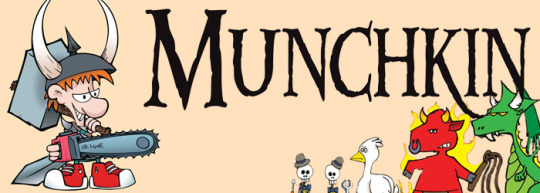
Have you always been fascinated by the world of D&D but did not want to get bogged down in all of the role-playing aspects? If so, you will want to get your hands on Munchkin. Munchkin satirizes the clichés of D&D with its own version of the dungeon crawling experience. You will still get the classic races, classes, weapons, and magic items you will find in D&D, but they will have a silly twist to them. Think the Boots of Butt-Kicking, the Staff of Napalm, the Chainsaw of Bloody Dismemberment, the Bow with Ribbons, or the Kneepads of Allure. And don’t forget the monsters! You will encounter everything from the seemingly harmless Potted Plant to the ferocious Plutonium Dragon. Can you use your magical items to make it past these terrifying beasts, collect the treasure, and reach level ten before everyone else?
Each player begins the game at level one. Munchkin has two types of cards—treasure cards and encounter cards. During his or her turn, a player kicks down the door and reveal an encounter card. Most of the time, this encounter card is a monster that the player must face. All of the monsters in the game have their own level. For example, the Potted Plant is level one, while the Plutonium Dragon is level twenty. A player defeats a monster by being a higher level than that monster. Weapons, magical items, and special powers contribute to the player’s actual level. If a player beats a monster, he or she usually collects treasure and levels up. If a player cannot best a monster, he or she can choose to run away by rolling a die. A successful die roll means the player escapes from the monster unscathed. The downsides to running away are not leveling up and not collecting any treasure. When a monster defeats a player, “bad stuff” happens, as explained on that monster’s card. This usually results in the loss of levels and treasure.
Players are not isolated during their turn. During an encounter with a monster, other players can choose to help or hinder the player fighting the monster by adding another monster to the fight or by using special powers. This can often go both ways though because the player fighting the monster can use a magical item or power to force other players to join him or her in the fight. All of this makes every monster encounter in the game exciting since a level one Potted Plant can jump up several levels and become quite formidable and a level 20 Plutonium Dragon can become seemingly unbeatable without help.
Munchkin is very popular in the gaming world. You can almost certainly find a copy of the game in any store that sells board games. It is so far reaching, in fact, that it now has countless expansions, from Super Munchkin to The Good, the Bad, and the Munchkin. Munchkin’s artwork is so iconic and recognizable and sure to get a few laughs and really helps the game stand out on the shelf.
While D&D is notorious for how long its campaigns can last, Munchkin can have its own playtime woes. One time I played with five other players, and our game was going on three hours before we decided to quit and call it a night. Players will find it is actually not uncommon to go through games like that. With all of the backstabbing and changing of levels, players can understandably feel like they are taking one step forward and two steps back for a lot of the game.
For those interested in Munchkin, I highly recommend the Deluxe version. It comes with a board, pawns, and colored cards to keep track of your character’s sex. The standard version only includes normal cards and a die. The deluxe version makes it much less of a headache to keep track of everyone’s level, and it also makes the game have much more of a board game feel rather than just being a deck of cards.
#11: Abraca...what?
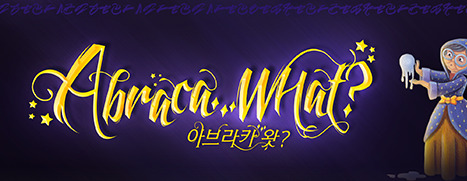
Abraca...what? No, I did not forget the most famous magical spell. That is the name of the game!
Abraca...what? is a cute, whimsical game of spellcasting and deduction for two to five players (best with three to four). On your turn, you try to successfully cast one of the spells in front of you. What is the catch, you ask? You cannot see which spells you have! Only your opponents are able to see you arsenal of spells, which are encased in great tactile stones. This mechanic fits perfectly in line with the theme of the game as you assume the role of a forgetful witch or wizard unable to remember spell names.
When casting a spell, you can choose between eight different spells, each with their own unique effects. One spell takes a life point away from the player to your right, and another spell restores one of your life points. Each of the different spells is numbered from one to eight, and the quantity of that spell matches its number. For instance, there are eight stones of the spell marked with the number eight, but there is only one of the stones for the spell marked with the number one. When casting a spell, you can only cast in ascending order. If you start with spell number seven, you cannot cast spell number two in that same turn. You always have to keep an eye on what spells other players have available and what spells have already been cast on the board to help you make your decision on which spell you are going to attempt to cast next. During your turn, you can cast as many or as few spells as you want. You may want to cast just one or two spells in a turn to make sure you do not run out of life points if you say the name of a spell you do not have. On the other hand, you may want to go all in and see if you can cast all of your spells in one turn. A round ends when a player has cast all of his or her spells or when a player has lost all of his or her life points. The game ends with the first player to reach eight points.
One of the, dare I say, magical things about Abraca...what? is player elimination is not permanent. If a player losses all of his or her life points, the round simply ends, players add onto their score, everything is reset, and the next round begins. I also appreciate that the game supplies each player with a spellbook, if you will, that serves as a reference sheet detailing the effects of each spell.
Abraca..what? is a great game to play with family and friends. Decisions are not really hard to make, and the game moves quickly. Most will find it appealing and lighthearted. Will this be the next game to cast a spell on your gaming group?
#10: Small World
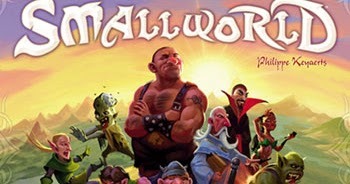
Take Risk, condense and simplify it, throw in some fantasy races and special powers, and you have basically got Small World. The title of the game perfectly describes what is going on inside the box. Players compete for control of a world that simply cannot hold everyone in it, and it really starts to feel that way as the game progresses.
Choosing from the available combination of fourteen different races and twenty special powers, players work to expand their territory, even if that means wiping out nearby neighbors. The trick is knowing when your race has become stretched so thin that your territories are basically defenseless. When it gets to that point, players can put their race into decline by flipping their tokens over on the board, usually losing that race’s special power and ability to conquer any more territories, and select a brand new combination of race and power from the available choices. Players collect coins at the end of their turn based on how many territories they occupy and any bonuses their race’s special power grants them. At the end of the final round, the players count up their coins, and the one with the most coins wins.
Small World contains many different components. The box itself looks appealing with its artwork and signature style, and it seems sturdy enough to be able to hold all of the components. Since the game can be played by two to five people, I love that the game includes a different board for each quantity of players. I also like that each player receives a reference sheet explaining the different races and powers. Speaking of the races and powers, I appreciate the variety and different combinations that pop up. This makes players form a strategy based on what is available to them, and it helps add to the replayability. One of the races that is available might be the tritons who are paired with the special power of being wealthy. The tritons are able to conquer all coastal regions bordering a sea or lake at one less token than usual, and their special power gives them a one-time benefit of collecting seven bonus coins at the end of their first turn. Players might also see the combination of the ratmen with the special power of flight. Ratmen have no benefit apart from their sheer number, and the territory they conquer does not have to be adjacent to one they already occupy thanks to their special power. The reinforcements mechanic also provides some excitement in the game. On players’ final conquest of their turn, they can roll a die if they are short of the necessary tokens for a territory. If they successful roll the number they need, they take over that territory.
Unfortunately, Small World did leave me with a few negatives. Sometimes, my group and I found the rules and the explanations of the special powers to be too vague. We also struggled with the sheer number of race tokens and coins we had to manage; make sure you have plenty of table space when you play this game. This really becomes a pain when the game is over and you have to organize everything back into the box. The compartments inside the box are not labeled, so a lot of time can be spent just trying to get everything to fit neatly back inside the box. That is not even recounting how long it took to punch all of the cardboard pieces out when I first got the game. While the game initially gives off an enjoyable fantasy world vibe, it can easily turn into a cold, calculating strategy game that saps the fun out of the atmosphere. When it is not their turn, players do not really do anything to participate other than pick up tiles if their territory was conquered. Sure, they can reformulate their strategy based on what the active player is doing, but players should prepare themselves for a lot of sitting around and waiting, especially in a full five player game. I would also argue that there is a small learning curve that players have to contend with to be able to get to a point where they can play the game fluidly. My first time playing the game was practically a bust because we kept stopping to check the rules, but we got a better grasp on it the second time we played.
Even if you do not like war games, Small World is worth a shot. Its varying combination of races and powers randomizes the game, and it easily adapts to the number of players who are playing. You might want to carve out a little time to read through the rules first before you pull it out at game night.
#9: Tsuro

Looking for a great game to start off or cap off your game night or even serve as a nice breather between more heavy games? Tsuro is an excellent choice! Beautifully designed inside and out, Tsuro can be played by up to eight people and only takes about fifteen minutes to complete. Thanks to its simplicity and accessibility, players can jump right into the game and have a terrific time.
In Tsuro, players lay tiles in front of their token. Each token has different paths on it. Players must follow the path of the marker that their token is on to its conclusion. Players lose when their path takes them off the board or when they crash into another player, so the goal is for players to keep their token on the board longer than anyone else. Players will find the game becomes more and more challenging as more tiles fill the six by six grid on the board and fewer empty spaces are available. They will also have to take into account how their opponents nearby tiles will affect their path.
Tsuro is extremely well crafted, and it shows that a lot of care went into the making of this game. The cardboard tiles that the paths are printed on are nice and sturdy, and the different colored tokens are very tactile and good quality. The artwork is pleasing to the eye, and it successfully conveys the Asian spiritual theme. According to the publisher, the paths represent the “many roads that lead to divine wisdom,” and the game as a whole represents “the classical quest for enlightenment.”
Tsuro is a joy to play and will most likely be a hit with any of your gaming groups. You cannot go wrong with this game.
#8: Splendor

Splendor is an entertaining, fast-paced card development and chip-collecting game for up to four people. Players race to be the first to reach fifteen points in the game by buying cards that have victory points or by having enough cards of a certain type to persuade a noble to visit them and give them points.
The setup of the game is very simple. There are three levels of cards that are laid out in a three by four format. The higher the level of the card, the more it costs to purchase, but the more victory points it rewards. Each card clearly shows how much it costs to purchase in the bottom left corner and what type of gem this card is used as once it is purchased in the top right corner. Noble tiles are also laid out (equal to the number of players plus one). The game receives high marks from me for using high quality poker chips for the different gems that players will need to use to purchase cards. The chips are fun to hold and give players a sense of satisfaction when they cash them in for a card.
Players have a few options on their turn. They can collect gems from the available supply by taking one gem of three different colors or two gems of one color provided that there are at least four gems of that color available. Players must manage their gems because they can have no more than ten at a time. If a player wants to ensure that no one takes a card that he or she wants or wants to prevent an opponent from buying that card, he or she can reserve that card and take a gold chip which acts as a wild and can be used as any color. Players can also spend their turn using the gems they have previously collected to purchase a card from one of the three different levels.
The artwork of Splendor is nothing to write home about, but players will be too focused on their strategy to bother noticing. The game is constantly changing with the different cards that become available to purchase and the requirements of the nobles. Players will discover it is best to choose a strategy at the outset of the game and stick with that strategy. If players try to change strategies midway through the game, they might dig themselves into a hole because there is not a lot of time in the game to turn things around; it really does feel like a competitive race.
I have to say that Splendor is, well, splendid. The rules are streamlined, making the game easy to understand from a player’s very first game. Players get a real sense of achievement when they beat their opponents. I highly recommend adding Splendor to your board game collection. It is a versatile game that fits in with any gaming group.
#7: Zombie Dice
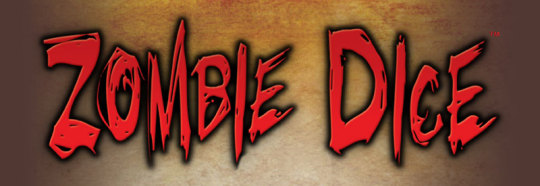
“Eat brains. Don’t get shotgunned.” That is the mantra of Zombie Dice. Zombie Dice, as the name points out, is a dice rolling game in which players assume the role of a hungry zombie searching for brains. The dice represent the humans the zombie is going after, and they can fight back. Each die has three different symbols on it. There are brains, footprints, and a shotgun blast. Brains are, of course, good for you as a zombie. Footprints mean that the human is trying to run away and can be re-rolled. Shotgun blasts are bad. If players collect three or more shotgun blasts during their turn, they lose whatever brains they have collected during that turn and end their turn. When a player collects thirteen brains, he or she wins.
On their turn, players must always roll a total of three dice. After their initial roll, players can decide to grab more dice and keep rolling or stop and collect their score. The game has three different colored dice indicating the likelihood or rolling a brain. Green dice are the safest bet for rolling a brain. Yellow dice have fewer brains on them, and red dice have more shotgun blasts than brains. Players cannot choose which three dice they want to roll; they must blindly pull them out of the dice cup. A player with bad luck may pull out three red dice, likely making for a very short turn.
Zombie Dice is one of the rare games where you never need to look at the rulebook. It is very easy to explain and usually ends in ten minutes or less. My one complaint about the game is that there is no padding in the dice cup, so it is really loud when players shake the dice around in it. Other than that, it all comes down to how lucky the players are and how risky they want to play things as they go on the hunt for more braaains.
#6: King of Tokyo
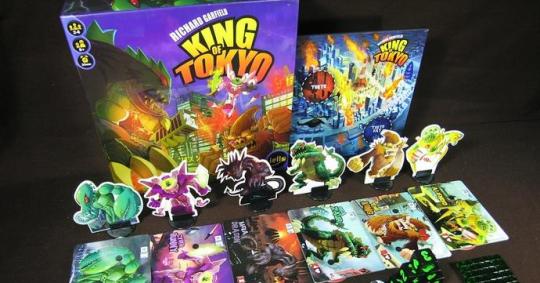
King of Tokyo reminds me of the 1986 video game Rampage, and it is just as much fun. In King of Tokyo, players choose to play as mutant monsters, giant robots, or aliens from outer space. Players win by earning twenty victory points before anyone else or by killing all of the other opponents to become the undisputed King of Tokyo.
On players’ turns, they roll six dice. Each die has a symbol for energy, health, attack, or a one, two, or three. Players have three successive dice rolls to decide which dice they want to keep and which dice they want to re-roll. Players will need to roll for health when enemies attack them, attack when they want to deal damage to other players, numbers when they want victory points, and energy when they want to purchase special cards. These special cards either have a permanent or temporary effect, ranging from things like a shrink ray that limits the number of dice an opponent can roll or one that deals poison damage to an opponent who is attacked. These special cards can really be game changers. The player in last place can turn the tide and even the odds with the right special card. Players may also have to enter Tokyo during their turn. The downside of being in Tokyo is that the player cannot heal; the upside is the player earns extra victory points. It turns into a calculated risk on how long to stay in Tokyo. Can you survive one more round to get those extra victory points, or should you play it safe by getting out and healing up?
In addition to the board, the special cards, and the dice, the game comes with figures depicting each character and a corresponding plate card with a dial for health points and a dial for victory points. The look of these plate cards is very clean, and the dials work perfectly. They hold their positions on the correct numbers and are easy for everyone to see. After reading through the rulebook once, you are sure to have it in the bag. King of Tokyo is an exhilarating brawl with high stakes that will leave players’ hearts pounding as they watch for the outcome of crucial dice rolls in the clash to claim Tokyo as their own.
#5: Pandemic
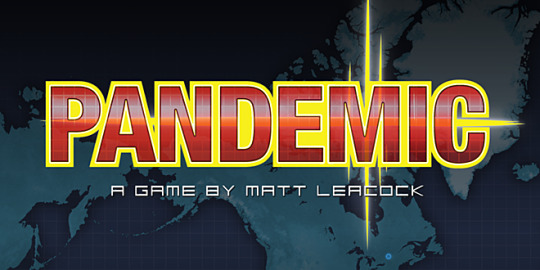
Board gamers widely credit Pandemic with popularizing cooperative games in which players work together to beat the game. Pandemic rightly deserves all that credit and more and has since spawned several offshoots. In the world of Pandemic, four plagues have broken out across the globe, and players work as a team of disease-fighting specialists based out of the CDC in Atlanta whose mission is to travel the world to treat the plagues while developing a cure for each one.
The board depicts forty-eight major cities across the world. On their turn, players can use up to four actions to travel between cities, treat infected populaces, discover a cure, share knowledge with other players, or build a research station. A deck of cards known as the player deck provides the players with these abilities, but epidemic cards are sprinkled throughout this deck, accelerating and intensifying the plagues' activity. A second, separate deck of cards known as the infection deck controls the normal spread of the plagues.
Each player is assigned a special role at random at the beginning of the game, each with its own unique ability. The scientist, for example, only needs four of the same cards to discover a cure for a plague, rather than the normal five. Players need to take advantage of each other’s special ability to aid them in their mission.
Pandemic stands out among board games because it is easy to learn but difficult to win. The only way to win is to find a cure for all four plagues before time runs out, but there are three ways to lose. One of the ways players can lose is if more than seven outbreaks occur. Outbreaks take place when a city has more than three plague cubes on it. Another way players can lose is if they run out of plague cubes when they need to be placed on the board. The final way players can lose is if they cannot draw any more cards from the player deck.
Pandemic is one of the most highly regarded board games for a reason. It will most definitely kick your butt more times than you will beat it, but you will still want to keep coming back for more in your quest to be victorious. The board is expertly designed, the theme is amazing, and the stakes feel real each turn. What are you waiting for? Get out there and save the world!
#4: Forbidden Island
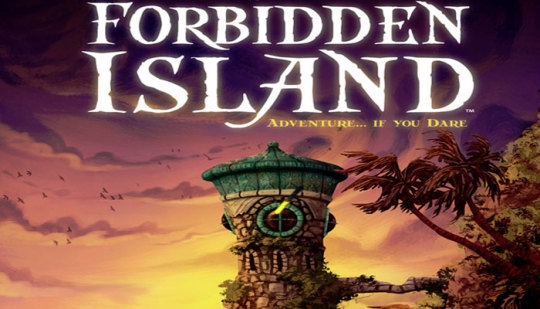
Described by some as Pandemic-lite, Forbidden Island is another cooperative game designed by Matt Leacock. Playable by up to four players, each person takes on a special role that grants them a unique ability on a team of daring adventurers who have traveled by helicopter to a dangerous island that is constantly flooding and sinking in search of four sacred treasures. The team must collect all four treasures and escape from the island together before it sinks into the watery abyss.
Players are randomly assigned a role on the team at the beginning of the game. There are six possible roles — pilot, diver, messenger, engineer, navigator, and explorer. All of these roles come with their own special ability as indicated on the character cards. In the instance of the pilot, he or she can fly to any tile on the island for one action. These abilities really help the team in trying to beat the game, and they all feel very balanced. Players’ pawns correspond to the color on their character card, and each character has a different starting point on the island.
Twenty-four tiles constitute the island. These tiles showcase some spectacular artwork, and each tile has a cool name. There is the Crimson Forest, the Misty Marsh, the Cliffs of Abandon, the Lost Lagoon, the Dunes of Deception, and the Temple of the Moon, just to name a few. One side of each tile is in full color, and the other side is a shade of blue to show that that tile is flooded and is in danger of sinking. A deck of twenty-four flood cards matches each of the twenty-four island tiles. Another deck contains twenty-eight treasure cards, including five cards of each of the four different treasures, three waters rise cards, three helicopter lift cards, and two sandbag cards. Helicopter lift and sandbag cards can be used at any time and do not count as an action. Sandbag cards allow players to shore up a flooded tile anywhere on the island. Helicopter lift cards can be used to fly players to another tile on the island; keep in mind that one helicopter lift card is needed at the end of the game to fly off the island and win. Waters rise cards cause the water level meter to rise. The water level meter tells the players how many flood cards need to be drawn at the end of each turn.
When it is their turn, players take up to three actions. Actions include moving, shoring up flooded tiles, collecting a treasure, sharing a card with another player on the same island tile (with the exception of the messenger, who can share cards from anywhere on the island), or using a character’s special ability. Normal movement only allows players to move to or shore up tiles that are orthogonally adjacent to the one that they are currently on. Some characters, however, have special abilities that let them modify this rule. The explorer can move and shore up tiles that are diagonal to the one that he or she is on, for example. When collecting a treasure, a player must be on one of the two tiles where that treasure can be found and must turn in four cards with that treasure on it.
Like Pandemic, there is only one way to win but multiple ways to lose. Players lose if Fool’s Landing, the location of the helicopter, sinks. They also lose if the both locations for a treasure has sunk before that treasure has been collected. Yet another way players lose is when the water level meter reaches the skull and crossbones. Finally, players lose if a players drowns when a tile they were on sinks and there are no adjacent tiles that the player can safely swim to. It truly is a team effort. If one player loses, everyone loses and the game ends.
Similar to several cooperative games, Forbidden Island starts out deceivingly calm, but players will notice things rapidly escalating further into the game. Tension certainly builds as the players rush to get back together at Fool’s Landing and escape with the treasures as the island swiftly sinks around them. Players do not need overly thought out strategies, but some short-term planning certainly helps. They need to manage how many treasure cards they discard since a player cannot have more than five cards at a time and be aware of which sets they are trying to collect on this pass through the treasure deck. Most importantly, players must be conscious of the rate at which they are burning through flood cards by letting the island sink. All the seemingly non-vital island tiles are critical buffers helping to prevent the more important island tiles from sinking. If players lose too many of them, they will suddenly find those important tiles endangered increasingly often, sometimes to the point where there is nothing they can do to stop them from sinking.
Forbidden Island is a great game to introduce to new players. Players only need to keep track of a small number of possible actions. The state of the game is easy to asses at any point thanks to the graphic design. The colored side of the tile indicates that that part of the island is dry, the blue side of the tile denotes that area of the island is flood, and sunken tiles are taken out of the game, leaving behind an empty space. Everyone’s hand of treasure cards are left face up throughout the game, allowing your team to see how close everyone is to being able to collect a treasure. New players will also appreciate that the consequences of their actions are apparent almost immediately.
Forbidden Island is a quality game inside and out, literally. The game is packed in a nice, sturdy tin box, and the compartments inside the box make it clear which pieces are stored where. After becoming accustomed to it, players can increase the difficulty of the game by moving up the starting position of the water level meter. Forbidden Island is sure to rise above everyone’s expectations at your next game night.
#3: Sheriff of Nottingham
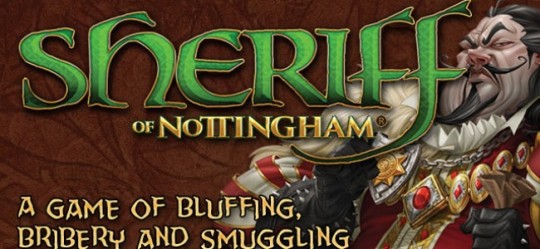
Prince John is visiting Nottingham, and all of the merchants in town want to impress him with their goods and net a big profit in the market in the process! The only person standing in their way is the sharp-eyed Sheriff of Nottingham. Do you have what it takes to convince the sheriff that you are true to your word and are only looking for an honest day’s wage? Will you forgo the facade and simply try to bribe your way past the sheriff? Just do not let the sheriff catch you with any contraband, or it could really set you back!
Sheriff of Nottingham is a three to five player bluffing and deception game. The game comes with 216 goods cards — 144 legal goods (apple, chicken, bread, and cheese) distinguished by a green border, 60 contraband goods (crossbow, pepper, mead, and silk) distinguished by a red border, and 12 royal goods distinguished by a red border and gold banner. You do not have to play with the 12 royal goods. In fact, it is probably best not to play with them your first couple of times. They make things a bit more complex by raising the stakes and adding an extra layer to the scoring. Coin tokens are used as the game’s currency and are used in the scoring at the end of the game. There are 110 coin tokens divided among four different denominations. There are also five merchant cards, five merchant bags, and one sheriff marker. The merchant cards are a nice, thick cardboard, and players place the goods they have gotten past the sheriff on the designated spaces for those goods around their card. The merchant bags are made of felt and have a plastic snap that close them tightly — maybe too tightly because the snap on one of my bags has already broken off after only three games since players really have to commit to opening the snap. The game makes full use of its storage trays; one serves as a card tray for the draw and discard piles, and the other functions as a bank holding all of the coins. While the artwork on the box and cards fits the game to a T, the actual quality of the box leaves much to be desired. Again, I have only played the game three times so far and am not rough with it when carrying it around, and the box has already torn and had to be super glued to hold it together.
The fun part about Sheriff of Nottingham is that players will not only play as a merchant, but they also get to assume the role of the sheriff. Once each player has been sheriff twice, or three times in the case of a three player game, the game ends and the merchant with the most money after totaling up scores wins. Each player is randomly dealt six goods cards at the beginning of the game; these can be any combination of legal or contraband goods. Two discard piles of five cards each are taken from the deck and left on either side of it. The two discard piles and the deck represent the market. For the first phase of a turn, players can visit the market, starting with the player to the left of the sheriff. Players may set aside up to five cards from their hand to discard after they have collected their goods from the market. They can choose to take cards from either discard pile, drawing from the top down. If they choose to take from the deck, they cannot draw any cards from the discard piles. After each player has had a chance to go to the market, players load their merchant bags with up to five goods and snap it shut. While players can lie to the sheriff about the kinds of goods in their merchant bag, they cannot lie about the number of goods. Once everyone has snapped their merchant bags shut, the declaration phase begins. Players must declare a single type of legal good to the sheriff, even if it does not match what is in their bag. The main event of the game is the inspection phase of each turn. This is the sheriff’s time to shine or, contrarily, fail miserably at his or her job. The sheriff takes each merchant’s bag and decides which ones to inspect. The sheriff may choose to first threaten to inspect a merchant’s bag, which may result in that merchant offering the sheriff a bribe with currency or a favor in the future. If the sheriff accepts a merchant’s bribe, the sheriff must return the merchant’s bag unopened. If the sheriff inspects a merchant’s bag, any goods that were truthfully declared must be returned to the merchant, and the merchant collects payment (the gold number on the card) and places the goods face-up around his or her merchant card. Any other goods, legal or contraband, are confiscated, and the merchant must pay the fine amount (the red number on the card) to the sheriff. The sheriff discards all confiscated goods. If the merchant was telling the truth and the bag contains exactly what was declared, the sheriff must pay the merchant the fine value for all of the goods in the bag. If a merchant sneaks contraband past the sheriff, he or she leaves it face-down at the top of his or her merchant card.
At the end of the game, the merchant with the most of a legal good earns the king’s bonus for that good, as indicated on the players’ merchant cards. The merchant who has the second most of a legal good claims the queen’s bonus for that good. If players tie on the amount of legal goods, the bonus is shared. If players are tied after adding king’s and queen’s bonuses to their scores, the player with the most legal goods wins. Sometimes it pays to be honest and play by the rules!
Sheriff of Nottingham makes for a fun social game that is easy to teach to new players. The bluffing and bribing combine for some great moments, like during one of my games when the sheriff called a merchant “a tricky little minx.” While some strategy is certainly involved, it really comes down to a player’s ability to read everyone else. Is the player declaring five chickens more suspicious than the player declaring only two apples? Is it worth taking merchants’ bribes, or are they shortchanging the sheriff compared to the total value of the goods in their bag? The game really shines when players commit to adding a little something extra by incorporating some role-playing. Things can get quite hilarious when everyone knows a bit about each merchant and the sheriff. Player elimination is nonexistent in Sheriff of Nottingham, so nobody will ever feel left out. Coming in at just about an hour, Sheriff of Nottingham will keep everyone entertained the whole time. Because of its playtime, you will probably not want to play it twice in one day, but it will hold its own on your growing gaming shelf.
#2: Ticket to Ride
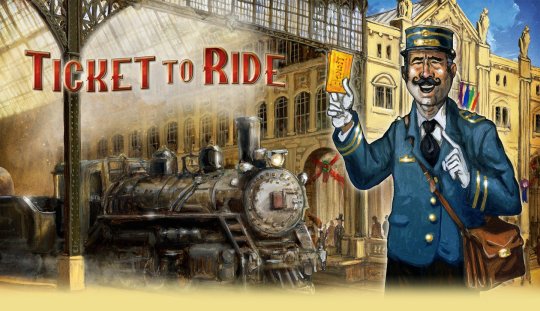
Ticket to Ride is the epitome of the gateway tabletop board game. If I had to pick any game to introduce someone to the world of tabletop gaming, it would be this one. Ticket to Ride is a cross-country train adventure in which two to five players compete to connect different cities by laying claim to railway routes on a map of North America. The game is elegant in its simplicity and pleasing to the eye with its artwork, easy to read map, and custom-molded train pieces. The rules are kept to a minimum and are actually pretty intuitive, and the design of the board makes everything so clear that players never need to dive into the rulebook after their first time playing. The board even keeps track of everyone’s score with a numbered border around the entire board that players move their wooden scoring markers on.
Players earn points in the game by claiming routes, completing destination tickets, and by having the longest continuous route. Each turn, players can draw train cards, which are used to claim routes, draw another destination ticket, or claim a route. Destination tickets instruct players which two cities they need to build routes between. The longer the route, the more points the player earns. The game ends when a player is about to run out of train pieces. If the game ends and a player has not completed one or more of their destination tickets, they must subtract the value of those destination tickets from their final score.
Ticket to Ride is extremely versatile. It works in a family setting as well as with competitive gamers. Alan Moon, the designer of Ticket to Ride, makes a good point about players having to find the sweet spot with their strategy. “The tension comes from being forced to balance greed — adding more cards to your hand, and fear — losing a critical route to a competitor,” Moon said. Easy enough to teach in a few minutes, Ticket to Ride packs plenty of action and tension to keep new and old players alike engaged in the game.
#1: Catan
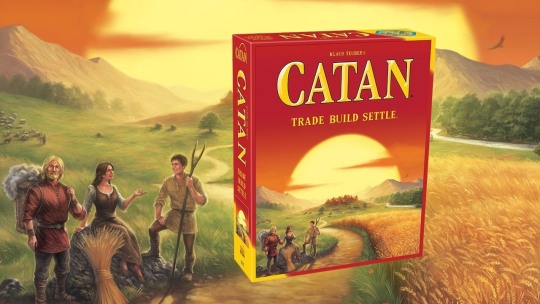
Called “the board game of our time” by The Washington Post, Catan has become synonymous with tabletop gaming. The players in the game take on the role of settlers building colonies on the island of Catan. The board, which represents the island, is made up of randomly placed hexagonal land tiles of different land types; each land type, with the exception of the desert in the middle of the island, yields a different resource players need to purchase development cards or build settlements, cities, and roads. Players with a settlement adjacent to a hex containing the number just rolled receive one card of the corresponding resource; cities produce two cards of the corresponding resource. If a player has one city and two settlements adjacent to a brick hex, for example, that player would take four brick resource cards if the corresponding number was rolled. As a wild card element to the game, the robber token, which begins the game in the desert, must be moved to another hex whenever a seven is rolled, and the hex that the robber is on ceases to produce resources until the robber is moved again. Sometimes adding insult to injury, players with more than seven resource cards in their hand when a seven is rolled must discard their choice of half of their resources, rounded down.
A player wins the game when he or she has ten victory points. When players build a settlement, they receive one victory point. Cities award players with two victory points. Development cards also hold the possibility of conferring victory points. Additionally, the player who builds the longest continuous road receives a victory point bonus.
Trading is a huge part of Catan. Players may have tons of one or two resources but severely lack key components of structures they want to build. To get what they need, players can trade resources with each other. They can also trade off-island with the resource bank at a ratio of four of one resource for one of any other resource. If players are connected to ports, they can trade with the resource bank at three-to-one (three of any single resource type) or two-to-one (two of a specific resource) ratios, depending on the port's specifications.
Catan is a mainstay in my gaming group back home, and we always have to play it at least once when I am there. It is a different game each time we play because the hexes and the probabilities of rolling resources change every time, allowing for endless variety. Everybody is involved and doing something on every turn, so nobody ever gets bored or feels left out. On top of that, Catan does not feature a player elimination mechanic; everyone plays until someone wins. The game involves some strategy on the part of the players, and hand management can be important, especially when it comes to avoiding forfeiting resources because someone rolled a seven. Even with the best strategy, however, the luck of the dice roll balances things out. Catan appeals to new and experienced players alike, has a surprising amount of depth to it, and brings something new to the table each time.
0 notes
Text
Most Anticipated Films of 2017
Can you believe that we are already in the second month of 2017? What better time is there to talk about my most anticipated films for this year? I thought I would take a break from the rankings on this one and simply go through the films in the order of their release dates. Let’s get started!
The LEGO Batman Movie
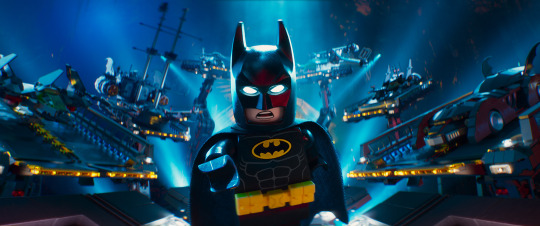
2014′s The LEGO Movie was a surprising hit, and Batman was a big part of that success. As a result, he now gets to star in his own LEGO movie. Is it sad that this has a higher chance of being the better Batman movie than DC’s Batman flick at this point?
Logan
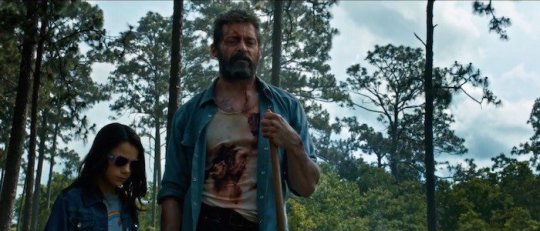
If Oscars could be awarded for trailers alone, Logan would be a front-runner with that Johnny Cash masterpiece. Logan has a very distinctive feel to it that is quite separate from the X-Men film universe, which might turn out to be a really good thing. Let’s be honest: Who is actually able to keep track of that all over the place timeline from the main films anyway? This Last of Us inspired solo film looks like it will do justice to the character of Wolverine and be a fitting sendoff for actor Hugh Jackman.
Beauty and the Beast
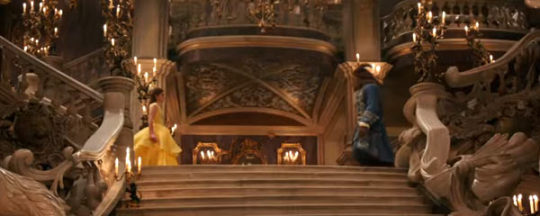
Beauty and the Beast was not one of my favorite Disney movies when I was growing up, but this live-action film looks gorgeous. Emma Watson, beautiful as always, is the perfect fit for Belle, and the voice acting for the servants sounds like it is going to be spot-on. The music sounds great too. All signs seem to point to Disney having another hit on its hands.
The Circle

Let’s follow up Beauty and the Beast with another Emma Watson film, The Circle. Based on Dave Eggers’ 2013 novel of the same name, The Circle imagines what the world would be like if a powerful and influential technology company like Google took control and created a surveillance society, leaving no room for privacy in the digital age. The book was written well enough that it was hard to put down, so I hope the film is just as good, if not better.
Guardians of the Galaxy Vol. 2
The first Guardians of the Galaxy film was an overwhelming success for Marvel. With C-list characters that casual fans had never even heard of, the first Guardians paved the way for other characters like Ant-Man to have their own films. The chemistry between the actors looks even better than before, and the Soul Stone might make an appearance and be the connecting tissue between the Guardians and the Avengers. I doubt this Guardians sequel will buck the trend of Marvel’s less than memorable villains, but it should be a hilarious, entertaining ride with another stellar soundtrack nonetheless.
Pirates of the Caribbean: Dead Men Tell No Tales
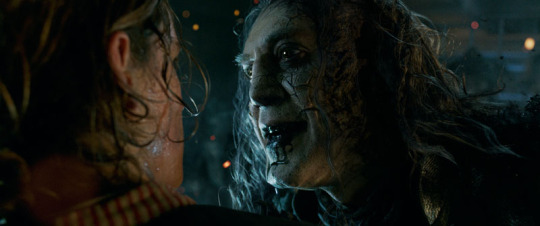
In the fifth film of the series, Johnny Depp’s Captain Jack Sparrow searches for the trident of Poseidon while Javier Bardem’s Captain Salazar hunts him down. Geoffrey Rush’s Captain Barbossa will also turn up again, and Orlando Bloom’s Will Turner will make his return after being absent from the fourth installment. Who knows? Kiera Knightley’s Elizabeth Swan may also make a surprise appearance. I will be the first to admit that I was not a fan of On Stranger Tides. It was so forgettable that the only details I remember were mermaids were in it and Penelope Cruz was a new addition to the cast. I wish the series would go back to what made it so enjoyable in the first film, but the trailer for Dead Men Tell No Tales indicates that it would prefer to spiral further into mysticism and supernatural ghost crews. To be honest, I am only anticipating this film because of three reasons: (1) I want to see if it turns out to be any better than On Stranger Tides, (2) I miss the character of Captain Jack Sparrow, and (3) I am interested to see how Will Turner is doing in his stint as captain of the Flying Dutchman.
Wonder Woman
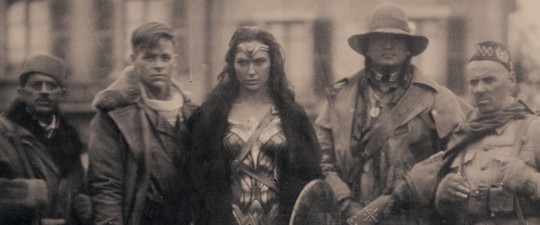
DC desperately needs this film to do well. Batman v. Superman: Dawn of Justice and Suicide Squad were both a mess. Wonder Woman gives DC the opportunity to scale things down a bit and focus on one single superhero. With Patty Jenkins at the helm as director, I am optimistic that Wonder Woman can follow in the footsteps of the first Captain America movie and turn out to be a fun blockbuster film with World War I as its setting. Now who else has Wonder Woman’s theme stuck in their head?
Spider-Man: Homecoming
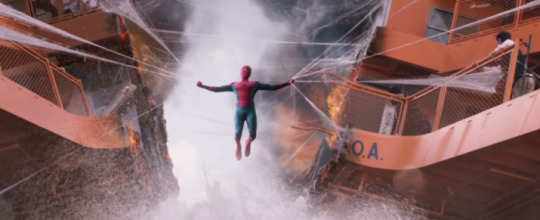
One qualm before we move ahead: the above scene is a ripoff of the train scene in Spider-Man 2. Now that we have gotten that out of the way, it is nice to see Marvel gain control of Spider-Man again. Was I asking for yet another reboot of the classic comic book hero? No. Personally, I liked Andrew Garfield and Emma Stone in the last series. There is no hiding the Amazing Spider-Man movies’ flaws, but they had their tremendously well executed moments too, most memorably this spoiler. However, this new reboot already has some good things going for it. Tom Holland killed it in Captain America: Civil War, and it is going to be great to see Robert Downey, Jr. come in as Tony Stark/ Iron Man as Peter Parker’s mentor. Let’s just hope that Michael Keaton’s Vulture is not Electro-level goofy as a villain.
Dunkirk

Slap Christopher Nolan’s name on a film, and tons of people are going to wait in line to see it. Nolan is the kind of director that can make the audience feel immersed in the world, and Dunkirk looks to be no different. The cinematography should be amazing, and Hans Zimmer should bring an epic score to the film. The fact that filming took place at the same location as the real historical evacuation during World War II only adds to the excitement for this war thriller.
Kingsman: The Golden Circle

Matthew Vaughn′s Kingsman: The Secret Service was one of my favorite films of 2015. The action was thrilling, the humor was hilarious, the soundtrack was amazing, and the acting was excellent but over the top when it needed to be to fit the film’s tone. Did I want a sequel? No, but I won’t be complaining so long as it does not tarnish the first film.
Blade Runner 2049

I did not see the original Blade Runner until my sophomore year of college. I did not come away loving it, but I appreciated it for what it was, especially for its notable moments like Roy Batty’s “Tears in Rain” monologue. Yet again, I have to ask: Did I want a sequel? No, but Denis Villeneuve, the masterful director of Prisoners, Sicario, and Arrival, has been turning everything he touches into gold lately. Plus, Roger Deakins is handling cinematography responsibilities, Harrison Ford is returning, and Johann Johannsson is teaming up with Villeneuve once again to compose the score.
Thor: Ragnarok
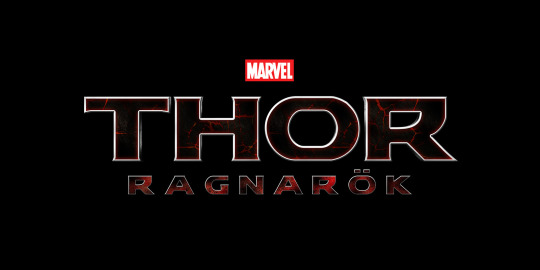
Thor’s films can be utterly dull at some points, but the addition of the Hulk and Doctor Strange should add a much needed kick to Thor’s third solo film.
Justice League

DC has been rushing toward this film, and its track record so far does not leave much room for optimism. Fans can only hope that Zack Snyder can pull it all together and do justice to the comic book characters we grew up loving. I am most interested to see how he will introduce franchise newbies Flash, Aquaman, and Cyborg.
Star Wars: Episode VIII — The Last Jedi

You didn’t think I would finish this list without mentioning Star Wars, did you? Disney and Lucasfilm recently revealed the title for Episode VIII: The Last Jedi. That sent off a wave of speculation. Why is the font red instead of the traditional yellow? Who is the last Jedi? Is it Luke? Will Luke die leaving Rey to be the last Jedi? Jedi can be singular or plural, so does that mean they will both survive? After the somewhat disappointing Rogue One, I am just ready to return to the main episodic storyline where we last left our beloved characters. Both the Resistance and the First Order will be scrambling, with Hosnian Prime decimated and Starkiller Base destroyed. Poe and Finn will probably go off on a mission together while Luke trains Rey, paralleling Snoke’s training of Kylo Ren. Hopefully, we will learn more about the mysterious Snoke and get to see some of the other Knights of Ren. I also hope we will get to see Luke in action as a central character of the film after we only got to see him for the last minute of The Force Awakens, and I have to wonder how they will handle Leia after the saddening, unexpected passing of Carrie Fisher. Tears will undoubtedly be shed when she first appears in the film. In the end, I trust that Disney and Lucasfilm will handle the character with respect for Fisher’s legacy. These 300-odd days will fly by before we know it, and we will all be back in that galaxy far, far away once again.
1 note
·
View note
Text
Movie Mania 2016: Most Memorable Shots
Before we close the book on 2016, let’s take one last look at an aspect of film that does not have an Oscar category: best shot. There were plenty of breathtaking shots to choose from in 2016, but I’ve narrowed my favorites down to the following list. I’ll try to keep the spoilers to a minimum, but in some cases they are essential to describing the shot. Now without further ado, enjoy!
Honorable Mentions
Captain America: Civil War — Airport Battle

This is it. This is the moment fans have been waiting for since the very first Iron Man. Marvel does these big hero shots really well (see Avengers: Age of Ultron or The Avengers), but this took things to a whole new level as our heroes chose sides and faced off against one another. Did they end up pulling a lot of their punches throughout the battle? Sure, but that does not take away from this awesome shot of all of our heroes on screen together at the same time, including ones you never thought you would see in a Marvel universe film. (I’m looking at you, Spider-Man.)
Kubo and the Two Strings — Kubo’s Origami Wings

I am still amazed at the amount of behind-the-scenes work that went into every single frame of this film, and this shot is the perfect example of all of that hard work paying off. The 3D stop-motion animation, the 3D printing used for the character models, the color palette, and the origami all come together to form what looks like a modern version of a Japanese woodblock print combined with a classic ink wash painting. Paired with Dario Marianelli’s fantastic score, this shot perfectly encompasses the wondrous scale of the film. And to think that this epic fantasy adventure film was made entirely on a 12-foot-long table top.
#5: Arrival — First Look at the Alien Spacecraft in Montana
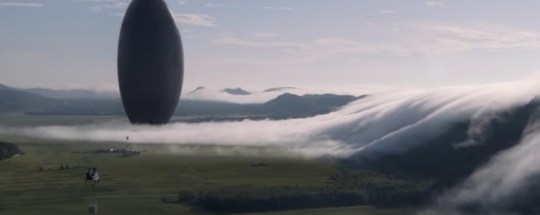
Director Denis Villeneuve really knows how to capture the mood of a shot. Add on Jóhann Jóhannsson’s beautifully haunting, otherworldly score with Bradford Young’s focused cinematography, and you have got a home run on your hands. The landscape of the shot is both gorgeous and mystifying, just like the alien spacecraft. Although the setting of the shot is the plains of Montana, it has an alien quality to it. This shot does a tremendous job of building up the suspense as the film’s main characters and the audience prepare for their first encounter with the aliens.
#4: Rogue One: A Star Wars Story — Darth Vader Faces Off Against the Rebels
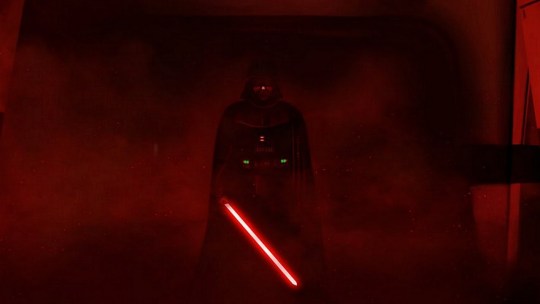
Hands down, this was the best scene of the entire film, and it all starts with this terrifying shot, which comes at the end of the film. Put yourself in the rebels’ shoes. Imagine seeing this figure appear out of the darkness. Yeah, you probably peed your pants in utter terror. With the alarm siren blaring and the electricity failing due to the space battle raging outside the ship, there are echoes of boots walking slowly at the end of the hall before an all-too-familiar breathing fills the air. Suddenly, the darkness gives way to the red light emitted from the dark lord’s crimson red lightsaber, and a feeling of absolute dread takes over. What follows is the Darth Vader scene fans have been waiting for ever since they were first introduced to the evil Sith lord.
#3: Fantastic Beasts and Where to Find Them — Jacob in the Rain
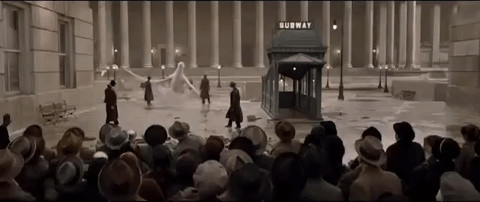
Apparently, it is extremely difficult to find images of key shots from Fantastic Beasts and Where to Find Them, so this image will have to do. One of the best parts of Fantastic Beasts and Where to Find Them is the scene towards the end of the film after the confrontation with Grindelwald and Credence. Newt releases the Thunderbird to erase the memories of the New Yorkers who witnessed the magical destruction of the city. Jacob, a No-Maj, is forced to step into the memory-wiping rain, and what follows is a poignant shot that serves as a fitting farewell to a character the audience has grown to love over the course of the film.
#2: La La Land — Los Angeles Freeway “Another Day of Sun” Opening
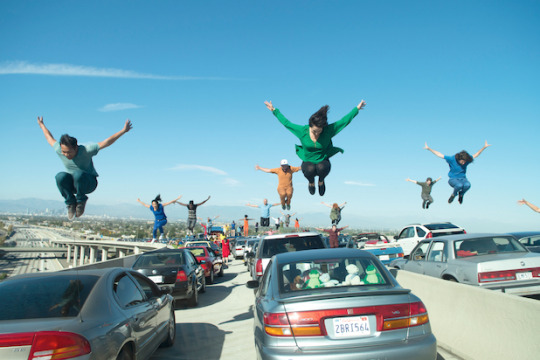
Right off the bat, La La Land draws its audience in with a dazzling opening music number, “Another Day of Sun.” In the midst of dreary traffic jam on a Los Angeles freeway, the people in the traffic jam refuse to stay in one place and be stuck in their lives, so they burst from their cars, filling the screen with youthful exuberance and bright colors. What makes this shot even better is that it is not CGI. Director Damien Chazelle managed to convince California officials to shut down an E-Z pass where Los Angeles’ Interstate 105 connects with Interstate 110. The expansive scope of the shot, the remarkable choreography, and the catchy musical opening make for one of the most joyful beginnings of any film in recent history.
#1: Hell or High Water — Marcus Hamilton Takes a Walk

I knew as soon as I saw this shot in the theater that it would be one of my favorite shots of the entire year. Coming in around the midpoint of the film, the audience has become familiar with all of the characters and has learned their motivations. Unlike other Westerns, Hell or High Water is not afraid to sit back and relish in the simpler, quieter moments. There is no guns-blazing action in this shot; rather, it is a portrait of a tired but determined Texas Ranger, played by Jeff Bridges, on one last grand chase. Above all, this shot’s artistic quality is what takes the cake. From the color palette to the wind blowing Marcus’ outfit, everything looks perfect. Cinematic morsels like this shot are what make Hell or High Water one of the top films of 2016.
0 notes
Text
Movie Mania: Top 15 of 2016
The first month of 2017 is nearly over, so what better time to release my best of 2016 list? What started out as a pretty sparse year for film quickly turned into one that churned out hit after hit. We can only hope that 2017 matches or exceeds the level of quality films that the last few months of 2016 produced.
This is the first time I have ever published a best of list, so I am excited to jump into it. My hope is that this list will shine a spotlight on some of the lesser-known films of the year and pique your interest in some of the bigger films that you may have missed. Read ahead confident that there will be no spoilers.
Honorable Mentions
Hidden Figures
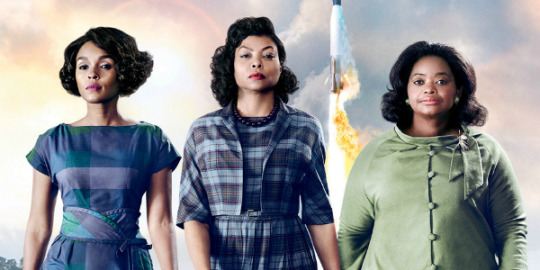
What’s not to like about this endearing, educational biographical drama? Based on the nonfiction book of the same name by Margot Lee Shetterly, this film follows the story of three African-American mathematicians who work at NASA in the 1960s, when racial segregation was sadly still prevalent. Taraji P. Henson as Katherine G. Johnson and Octavia Spencer as Dorothy Vaughan are outstanding and bring so much energy and personality to the screen. Whereas this film could have been bogged down by complex mathematics and literal rocket science, Theodore Melfi expertly directs the film so that it is fast-paced and accessible, and while he acknowledges the racial prejudice of the time, he does not let it dilute his main story. Melfi and Allison Schroeder’s screenplay delivers witty and memorable dialogue throughout the film that feels natural to the characters.
Hans Zimmer returns to another space-related film to compose the score, but Pharrell Williams’ music really takes center stage. “Runnin’,” “I See a Victory,” and “Crave” are all great bets for your music playlist. Best of all, this film teaches audiences about historical figures that they would be hard-fought to discover in standard history textbooks, making it a film that should be shown in school classrooms throughout the country. While not really a negative, the film does slow down when the three women leave NASA after a long workday and return home to their families. As a biographical drama, the film is responsible for showing us different parts of these extraordinary women’s lives, but you are left waiting for them to go back to breaking barriers at NASA.
Rogue One: A Star Wars Story
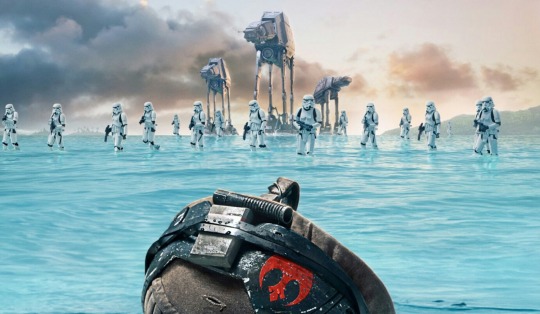
Ah, my beloved Star Wars. How I wish this film could have actually made it onto my list! I will be the first to admit that I am biased as a Star Wars fan, so that may be why this film even gets an honorable mention nod. When Star Wars: Episode VII - The Force Awakens came out in December 2015, I saw it on opening night and three or four times after that before it left theaters. By contrast, I saw Rogue One on opening night and have not seen it since. No one can accuse me of not being excited for Rogue One, and I tempered my expectations by avoiding any and all reviews before seeing the film. I even read the canon Catalyst: A Rogue One Novel by James Luceno to learn about the backstories of Orson Krennic and the Erso Family before seeing the film.
Without spoiling anything, the weakest facet of Rogue One is its lack of character depth and development. I did not really care about most of the rebels in the film; in fact, there were a couple of parts where I was actually cheering for the Empire! I will say that Alan Tudyk was great as K-2SO with his dark comedic humor and Donnie Yen was a badass as the blind Chirrut Imwe, but when the droid has the most personality out of the bunch, you have done something wrong.
On the other hand, the cinematography proves to be Rogue One’s strength. Never before, not even in the original trilogy, have we truly experienced what it feels like to be a world occupied and controlled by the Empire; Rogue One does an amazing job showing the reach and power of the dreadful Empire. New planets like the tropical world of Scarif look beautiful. Additionally, Rogue One includes the first true space battle we have seen in a Star Wars film since the beginning of Episode III – Revenge of the Sith. It is a sight to behold, and the new ships and tactics used by the Rebellion are quite the thrill. Director Gareth Edwards does a great job with the space battle; it never feels too cluttered or hard to follow with choppy editing. Finally, who can forget THAT scene in the last ten minutes of the film?
I appreciate the novel approaches and risks the creators of Rogue One took. I enjoyed the references to other canon material like the animated television show Star Wars Rebels for fans like me who have cared to invest in them. However, this film has proved to me that Star Wars needs strong, fully-developed characters to succeed. It makes me wonder what Rogue One looked like before those infamous re-shoots.
Game of Thrones: “The Winds of Winter”
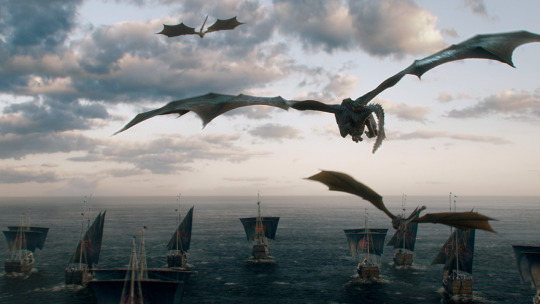
I know, I know. This pick is not a film; it is a television episode. That is why it is only listed among the honorable mentions. Let’s face it, though. Game of Thrones is practically a ten-hour film each season. The quality, scope, and budget of many of the episodes easily surpass those of several films. While “Battle of the Bastards” was outstanding in its own right, “The Winds of Winter” is my pick for the best episode of season six. The season six finale delivers on so many fronts for long-time viewers of the show after what can be argued was a very up-and-down season, and it is rich with emotion, suspense, and superb acting. What fan of the show did not get goosebumps and/or tear up when that music swelled up in the final scene of the season, and wasn’t that “Light of the Seven” piano piece at the beginning of the episode so chilling? I cannot really say more without treading into spoiler territory, so do yourself a favor and go watch (or re-watch) this masterful episode of television.
#15: Deadpool
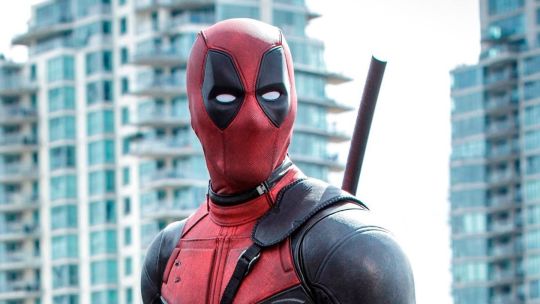
Can we all extend a big thank you to Ryan Reynolds? His enthusiasm and dedication to the character of Deadpool may have been the sole reason this film was made. Thank goodness that test footage was “leaked” to the public! This Deadpool is a far cry from that unspeakable depiction in X-Men Origins: Wolverine. (Who thought it was a good idea to sew the Merc with a Mouth’s mouth shut?) From the opening credits, this film promises that it is self-aware and ready to break the fourth wall, true to its titular character. Deadpool embraces its R rating and runs with it. The crass humor and the no holds barred action scenes are great fun, and Deadpool’s interactions with Negasonic Teenage Warhead and Colossus supply some rib-busting laughs. (Deadpool at Xavier’s Mansion: “It’s funny how there’s only ever two of you. It’s almost like the studio couldn’t afford another X-Man.”) At a time in cinema where comic book films are a constant, Deadpool brings a refreshing breath of fresh air to the genre.
#14: Manchester by the Sea
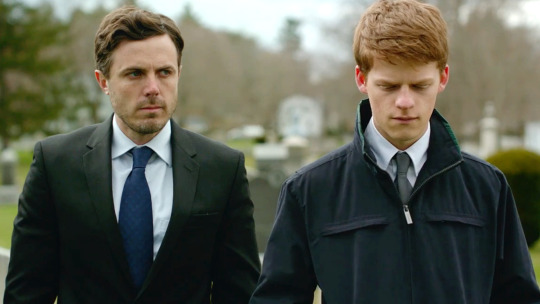
Warning: This film is very sad and heavy. However, writer and director Kenneth Longergan manages to infuse some genuinely comedic moments in the film’s bleak landscape that somewhat lighten the mood when necessary. Lucas Hedges delivers as teenager Patrick Chandler, and this may be Casey Affleck’s best work yet as Patrick’s uncle, Lee Chandler. I went into this film with a very faint idea of what it was about, and I think that is the best way to approach it if you are going to see it. My two biggest complaints with this film are the Oscar-bait score and the ending. The score, in my opinion, detracts and distracts from the film, and the ending is one of those where it just abruptly cuts off. The film was on the longer side in terms of run time, though, so I guess I was sort of grateful for the ending too.
#13: Jackie

You can tell Natalie Portman poured her heart and soul into this film, and I am hopeful that she will be awarded for it with an Oscar. It is overwhelmingly evident that she spent countless hours studying and perfecting Jackie Kennedy’s accent and mannerisms, and her hard work pays off. When you are watching this film, you see Jackie Kennedy, not Natalie Portman. Whereas this biographical drama could have leaned on other historical figures and really tapped into the utter tragedy of President John F. Kennedy’s assassination, director Pablo Larrain lets Jackie stand on her own and carry the film. Mica Levi’s score really surprised me and deserves some award nods. “Intro” is entrancingly eerie and haunting, sticking with you even after the film is over. As the award-winning musical Hamilton teaches us, history is all about who lives, who dies, and who tells our story. Jackie focuses on Jackie Kennedy’s intense dedication and foresight in the midst of tragedy to shape the way JFK’s story is told and how he will be remembered in history.
#12: The Founder
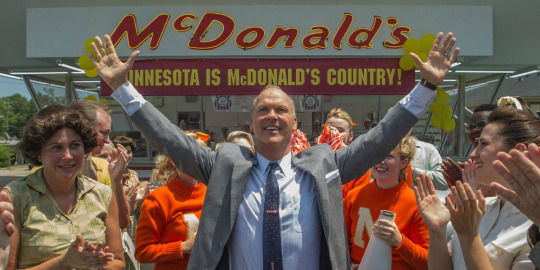
Set aside a few bucks for a milkshake and a burger after this film. Just trust me on that. The Founder tells the story of Ray Kroc and the establishment of the McDonald’s fast food empire. I did not know the history of McDonald’s, so this film was not only entertaining, but educational for me. Michael Keaton fully embraces the role of Kroc, taking on his (to borrow another line from Hamilton) “never satisfied” attitude on life. As he bullies his way to the top, we also see the tragic downfall of the endearing Richard and Maurice McDonald, played by Nick Offerman and John Carroll Lynch, whose portrayal of the brothers turns out to be the film’s strongest feature. As Matt Zoller Seitz from RogerEbert.com puts it, “[The Founder] is an ad that becomes a warning before circling around and becoming another, darker kind of advertisement, and one of the most intriguing and surprising things about The Founder is that, in the end, it seems vaguely ashamed of itself for letting this happen.”
#11: Moana
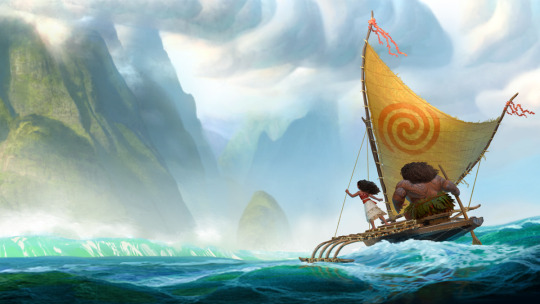
2016 was the year of the animated film, and we have hit the first one on my list. With Moana, Disney continues to showcase its amazing progress in animation; the islands and the water in Moana look so life-like. Moana brings viewers a welcome surprise in that there is absolutely no romance in this film, taking it a step further than even Frozen. Moana is all about ancestry, culture, family, and finding your calling in life. It is also extremely touching; do not be surprised if you find yourself unconsciously crying throughout the film. Lin-Manuel Miranda, the genius creator of Hamilton, and Opetaia Foa’i come together to create an incredible soundtrack full of soaring, vibrant songs like “We Know the Way” or Moana’s (Auli’i Cravalho) anthem “How Far I’ll Go.” Jermaine Clement’s “Shiny” is one of the best villain songs Disney has produced in a long time, and “You’re Welcome” perfectly embodies the character of Maui as well as his voice actor, Dwayne “The Rock” Johnson. For all that it does well, Moana can afford to have a very, very basic plot, but if it would have improved on that front, it may have found itself higher on my list.
#10: Arrival
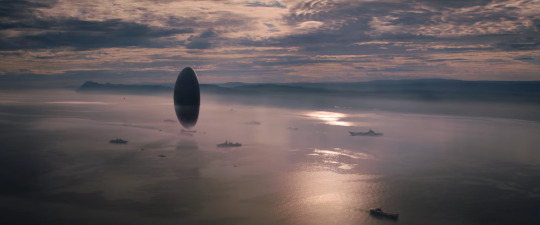
Director Denis Villeneuve delivers another critically-acclaimed film with Arrival. Based on Ted Chiang’s short story “Story of Your Life,” this science fiction film explores the untouched aspects of the genre, choosing to investigate communication instead of destruction. In the film, the spacecraft of extraterrestrials known as heptapods appear scattered across different parts of Earth. Renowned linguist Louise Banks, played by Amy Adams, is called upon to attempt to communicate with the heptapods by learning how to read and write their language alongside physicist Ian Donnelly, played by Jeremy Renner. The cinematography by Bradford Young is truly breathtaking throughout the film. Combined with Johann Johannsson’s beautiful, otherworldly score (see “First Encounter” and “Heptapod B”) and subtle “show don’t tell” acting, this cinematography creates heart-pounding, white knuckle suspense that keeps you on the edge of your seat.
I was totally onboard with this film until the last ten or fifteen minutes. A certain plot twist is revealed that I can see as one that splits the audience in half on the matter, and the quality of the dialogue goes way downhill all of a sudden. By no means did it ruin the film for me, but it just made me love it a little less. As long as you do not go into this film expecting Independence Day-style science fiction action and are ready to put your thinking cap on, you should enjoy the experience.
#9: Patriots Day
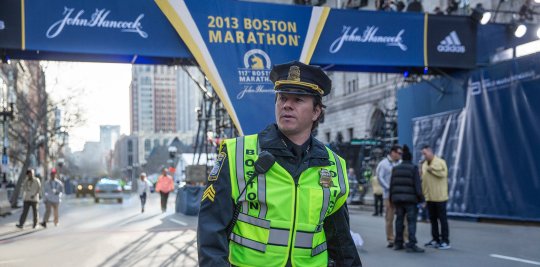
Peter Berg and Mark Wahlberg were busy in 2016! After producing Deepwater Horizon, they return to produce a film about another disaster in recent American history, the 2013 Boston Marathon bombing. Some may question if this film is too soon, but rest assured that it treats its source material with respect. While Mark Wahlberg is usually the standout actor in Peter Berg’s recent films, everyone shines in Patriots Day. J.K. Simmons, John Goodman, and Kevin Bacon are all great, and I was left wishing they had taken even a little more screen time from Wahlberg. On a dramatic level, this thriller leaves you at the edge of your seat. I could feel the suspense and anticipation throughout my sold-out theater, and I could hear the sobs and sniffling of many.
I did not feel that this film delved into exploitative thriller territory, but I cannot speak for the people of Boston and those who experienced the tragedy firsthand. The Boston Globe’s Ty Burr, however, can. He says in his review, “It’s professionally made, slickly heartfelt, and is offered up as an act of civic healing. At best, it’s unnecessary. At worst, it’s vaguely insulting.” Again, having only experienced the bombing thousands of miles away from television news media reports, I have to disagree with Burr’s assertion that this film is unnecessary. It is genuinely moving on an emotional level, and it reinforces the ideas that good always wins and that Americans will stand united in the face of terrorism.
#8: Captain America: Civil War
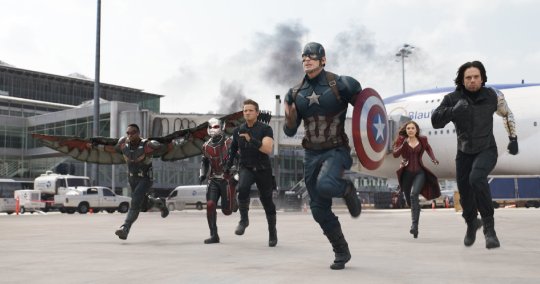
Captain America: Civil War is essentially Avengers 2.5. Following the success of Captain America: The Winter Soldier, the Russo brothers return to direct Civil War. Everything since the first Iron Man has been building up to this film. Although it does indeed have its flaws, the good far outweighs the bad here. While it is labeled as a Captain America film, the Russo brothers smartly give Robert Downey, Jr. plenty to work with in his role as Tony Stark/Iron Man. This may be, in fact, the best Downey, Jr. has been in the Marvel franchise since the first Iron Man. Surprisingly filled with emotional depth, the character development in Civil War is outstanding considering the cornucopia of characters in the film. Not only does the film continue to develop its veteran playmakers, but it also does a great job introducing brand new characters to the universe. Another positive of this film is that it imposes real, lasting consequences on the actions of our heroes. Bygones are not bygones by the end of this film. In the end, Civil War delivers on its promise of pitting Avenger against Avenger. Although punches are obviously being pulled in the airport battle, it is still an entertaining sequence that showcases each individual character. Now can we please stop focusing on Bucky moving forward with Captain America?
#7: Kubo and the Two Strings
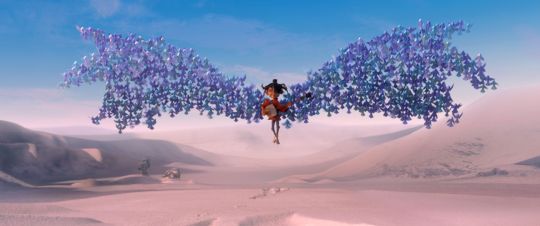
Darn you, McConaissance! If it were not for Matthew McConaughey, this film may have ended up higher on my list. McConaughey is by no means bad in his role, but he just seems out of place in this film. Aside from that, it is hard to find any serious faults with this film without getting overly nitpicky. Kubo and the Two Strings is an aesthetically beautiful work of art with its 3D stop-motion. The voice acting is some of the best of the year: Art Parkinson as the adventurous and imaginative Kubo, Charlize Theron as the sickly but loving mother of Kubo and the grumpy but protective Monkey, Rooney Mara as the creepy Sisters, and Ralph Fiennes as Raiden the sinister Moon King all fully embrace their roles and add layers upon layers to the characters with the simplest of voice inflections. The score is also top notch, transporting you directly into the story. Kubo and the Two Strings is an adventure filled with humor, darkness, love, melancholy, and inspiration that completely absorbs its viewers.
#6: Zootopia
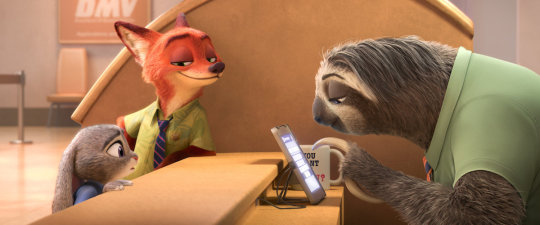
It was practically a toss-up between Kubo and the Two Strings and Zootopia, but Zootopia won out in the end because of its thoughtful, timely themes of discrimination and social stereotypes and how well the film handles them. The voice acting is on point, with such talent as Ginnifer Goodwin, Jason Bateman, J.K. Simmons, Idris Elba, and Alan Tudyk. The animation is gorgeous, and the sprawling urban Zootopia is fleshed out and full of character. Whereas Moana has a very simple plot, Zootopia offers a couple of unexpected twists. The stereotypes that the animals fit into work perfectly, and the film really makes you care about its main characters. Full of humor and Easter eggs, this film celebrating diversity will make you want to go back for repeat viewings, all the while perpetually humming Shakira’s “Try Everything.”
#5: Sing Street
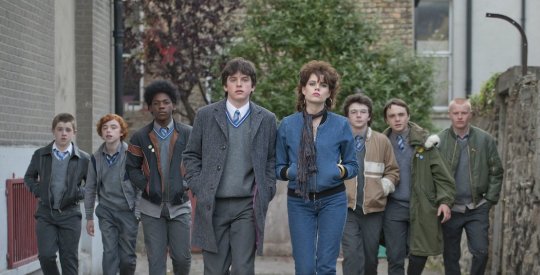
Sing Street was a huge surprise for me. It was nowhere on my radar of films to see. I just happened to come across it while scrolling through Netflix, and boy am I glad I decided to watch it! At its core, Sing Street is about a teenage boy who starts a band to impress a girl and get her to like him. “Eh, seen it before,” you say? Maybe, but not as well done as this. Set in Dublin in the 1980s, this film is a feel-good musical comedy-drama where every single song is outstanding with a charismatic Irish cast and huge heart that is not only about getting the girl, but also friendship, brotherhood, and pursuing dreams. Sing Street knows what it wants to be and embraces it without turning into a musical fantasy, leaving viewers full of irresistible optimism and humming its catchy tunes while looking up Duran Duran songs at the end of the film.
#4: Hell or High Water
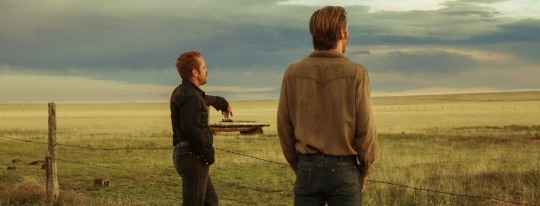
I could not say it any more eloquently than Mason Walker did, so I will just start by leaving what he said about this film, all thanks to the exemplary cinematography of Giles Nuttgens: “Plenty of films pretend to take place in small-town Texas, but many of those versions resemble my home state about as much as the ‘barbecue’ joint I visited in New York resembled barbecue. But this wild Neo-Western gets it right. Here is a rural Texas I recognize, where the Aggie Game’s always on, the Shiner is within arm’s reach, and the customers and wait staff play out their familiar interactions like a social-norms square-dance.” In reality, the filming took place in New Mexico, but that is close enough so we will give it a pass, right?
Hell or High Water follows two brothers, played by Chris Pine and Ben Foster, who carry out a series of bank robberies to save their family ranch, all the while being hunted by two Texas Rangers, played by Jeff Bridges and Gil Birmingham. Foregoing mindless gunfights, Hell or High Water stuns with its complex characters and well-paced narrative. Director David Mackenzie deftly mixes scenes dripping with suspense with scenes full of lighthearted Texan humor. Taylor Sheridan’s screenplay includes some brilliantly written dialogue that especially comes through during the final scene of the film on the porch. The stupendous acting, particularly by Jeff Bridges as the Texas Ranger on the brink of retirement, brings it all together in this heartfelt heist film.
#3: Hacksaw Ridge
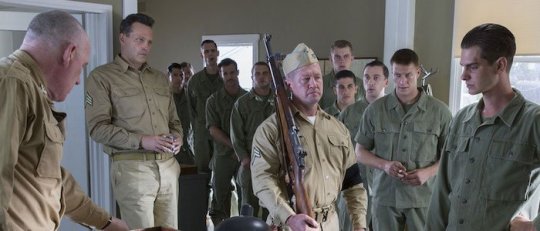
This was another toss-up between Hell or High Water and Hacksaw Ridge, but Andrew Garfield’s Oscar-worthy acting helped Hacksaw Ridge edge it out. Hacksaw Ridge is based on the true story of Garfield’s Desmond Doss, the first conscientious objector to be awarded the Medal of Honor. With Hacksaw Ridge, Mel Gibson makes a triumphant return to the director’s chair for the first time since 2006 when he released Apocalypto. Gibson boldly and fearlessly tackles this film on the level of both a large scale war drama as well as a concentrated character study. Like few other directors can do, Gibson seamlessly transitions from some of the most graphically violent scenes you will ever see on screen to endearingly tender, touching emotional scenes.
Before we get to Garfield, Vince Vaughn deserves his own round of applause. When people think of Vaughn, they probably think of films like Wedding Crashers or Dodgeball: A True Underdog Story. In Hacksaw Ridge, Vaughn proves he can handle a serious dramatic role when he is dialed in. Hugo Weaving also delivers a great performance as Doss’ father, a troubled World War I veteran. In the end, though, this is far and away Garfield’s film. From playing a comic book hero to a real life hero, Garfield’s career sure has blossomed. With Doss’ story, Garfield has such wealth of inspiration to draw from. From his simple life growing up in Virginia to the cacophony of war while serving as a combat medic at Hacksaw Ridge, Garfield plays every scene perfectly. At the beginning of the film, you might wonder if Garfield’s southern accent is going to detract from the film, but he is so committed to it that it ends up working.
Doss’ steadfast Seventh-day Adventist faith is certainly present in the film, but it never gets preachy or hits you over the head with it. It is actually very important that it was included because it was such a central part of who Doss was. Gibson does go a tad overboard with the religious imagery, especially with the themes of baptism and ascension, but that is a central part of Gibson’s trademarked directorial style. Hacksaw Ridge is an inspiring war film whose main character never even picks up a rifle, much less fires one, offering a different way to envision courage.
#2: The Edge of Seventeen
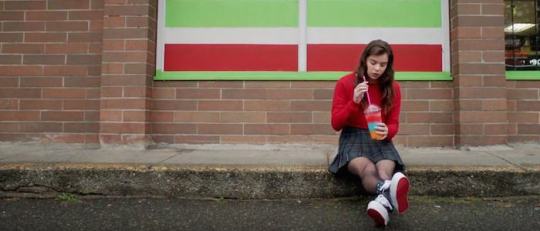
Never have I ever seen a more accurate portrayal of life as a high schooler. I will flat out say it: this film blew me away. I remember walking out of the theater so happy and extremely proud of everyone involved with the film. For her directorial debut, Kelly Fremon Craig hits it out of the park. Do not pass this film up as just another coming-of-age dramedy because it is so much more than that. This film will have you laughing, this film will have you crying, this film will have you cringing at the all-too-relatable awkwardness, and sometimes this film will have you doing all three at the same time. In short, it touches on every single emotion, but never in a sappy or undeserved way. Craig not only directed the film, but she also produced and wrote it. The sharp dialogue sounds exactly like something that would come from the mouth of a high schooler in 2016.
The acting is terrific all around. Hayden Szeto masterfully emulates myself in high school as Erwin Kim. Woody Harrelson nails it in his role as a high school teacher and confidant. Kyra Sedgwick expertly assumes the challenges of being a mother to teenage children. Blake Jenner surprises with his subtle acting as Darian. Last but certainly not least, Hailee Steinfeld proves she is the real deal as 17-year-old Nadine, the film’s main character. Perhaps even more impressive than her line delivery is Steinfeld’s ability to act with her body language doing most of the heavy lifting. The Edge of Seventeen forgoes the teen tropes from John Hughes movies in favor of fully developed, three-dimensional characters who emotionally grow right before our very eyes. It has its hilarious moments, but it is not afraid to heavily tap into reality and maturely handle the really serious situations that teens may face today. Male or female, young people and parents alike will be able to relate to this film on a deeply personal level.
#1: La La Land

I never considered musicals to be one of my favorite genres, which makes it all the more noteworthy that La La Land lands at the top of my list for 2016. I was beyond impressed with director Damien Chazelle’s work with 2014’s Whiplash, a film about the destructive cost of single-mindedly pursuing one’s dream. La La Land adopts a much more positive spin on this message as it follows Mia, an aspiring actress played by Emma Stone trying to make it in Hollywood, and Sebastian, a jazz pianist played by Ryan Gosling with the dream of reviving jazz and opening up his own jazz club. The impressively stunning opening scene of the film, which I won’t spoil here, had me smiling from ear to ear, and I could feel the entire theater straining from holding back their rapturous applause.
From that opening scene on, Linus Sandgren’s cinematography prowess is on full display, allowing the camera to become just as much a part of the choreography as the actors on screen. Ryan Gosling and Emma Stone’s chemistry is unrivaled by anything else you will see on screen from 2016, making the relationship between their characters feel real and honest, and their dedication to their roles is palatable. The set design and costumes, two aspects of films that do not get paid nearly enough attention, are remarkable in La La Land. The vibrant colors and the smog-less skyline of Los Angeles create fantastical imagery that fit in with the grand dreams of the film’s two main characters. Chazelle’s writing is composed of snappy dialogue that is full of heart and honesty.
I sometimes find that the song and dance part of musicals distract from the plot of the film, but, credit to Chazelle’s writing and Justin Hurwitz’s music, La La Land’s musical numbers work as a cohesive unit with the plot and even elevate it. Hurwitz’s music is impressive instrumentally and dazzling with its creative, insightful, and thought-provoking lyrics. Hurwitz’s ability to shift gears throughout the film is praiseworthy. One moment, he is powering through the upbeat “Another Day of Sun.” The next he is revving it up again for the equally catchy “Someone in the Crowd,” but even within that song he slows things down to a point where the audience can soak it all in before picking the pace right back up. “Mia & Sebastian’s Theme” and “Planetarium” take the audience on a whimsical adventure. “Herman’s Habit” is jazz at its finest. In “A Lovely Night,” Hurwitz channels classic Hollywood duet material. With “Audition (The Fools Who Dream),” Hurwitz and Stone make you wish you had a box of Kleenex handy. As the film approaches its bittersweet ending, Hurwitz flawlessly sums the entire film up musically in “Epilogue.” La La Land is a technical masterpiece, and its record seven Golden Globe wins prove it. Thank goodness Whiplash succeeded so that Chazelle could bring us this powerfully intimate masterwork.
I think it is important that I list all of the films I can remember seeing with a 2016 release date (37 in total) so that you have an idea of what the competition was like.
· Jane Got a Gun
· Deadpool
· Zootopia
· Midnight Special
· Batman v. Superman: Dawn of Justice
· Captain America: Civil War
· The Jungle Book
· X-Men: Apocalypse
· The Lobster
· Alice Through the Looking Glass
· Neighbors 2: Sorority Rising
· Finding Dory
· Star Trek Beyond
· Suicide Squad
· Kubo and the Two Strings
· Hell or High Water
· Sully
· The Magnificent Seven
· Deepwater Horizon
· Miss Peregrine’s Home for Peculiar Children
· The Accountant
· Doctor Strange
· Hacksaw Ridge
· Arrival
· Fantastic Beasts and Where to Find Them
· Sing Street
· The Edge of Seventeen
· Manchester by the Sea
· Moana
· Jackie
· La La Land
· Rogue One: A Star Wars Story
· Hidden Figures
· The Founder
· Patriots Day
· A Monster Calls
· Silence
1 note
·
View note
Text
The Walking Dead: Who Lives, Who Dies, Who Tells Your Story?
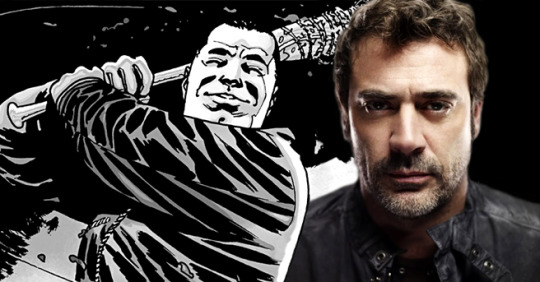
In today’s day and age, services like Netflix and Amazon Prime have spoiled television viewers. Entire seasons of hit television shows are dumped at viewers’ online doorsteps for them to binge-watch as quickly as they can. Before viewers even have time to think about or critique an individual episode, their streaming service has already queued up the next episode and started playing it.
The modern entertainment mindset has turned binge-watching into a competition. Nowadays, it’s all about who can finish the season first. People go to seriously unhealthy lengths physically and mentally (see “post binge-watch depression” http://www.npr.org/sections/health-shots/2015/02/04/383527370/does-binge-watching-make-us-depressed-good-question) to accomplish the feat of binge-watching an entire season of a show in one go, and they are celebrated and reaffirmed for it by society. When a new season of House of Cards or Daredevil comes out, some people will call in sick, isolate themselves, assemble their buffet of chips and other junk food, and plant themselves on their couch or bed and even forgo sleep until they have made it through the season. People who successfully binge-watch a whole season like such talk as if that is a source of pride for them.
Don’t viewers miss something when they power through a 10+ episode season of a show? What about the buildup, the anticipation, the unknown? In the pre-streaming service era, viewers hypothesized and connected over shows like Lost. They were able to float theories around and analyze (and over-analyze) every element of an episode. Television shows were major subjects of conversation. However, that doesn’t really happen anymore, with the exception of a few shows. People rush through shows, and then they are done with them. They’ll talk about them for a couple of days, maybe even a week, then they’re ready to move on. Granted, this is a generalization, but one has to admit it’s true in most cases.
The point being here is that television viewers have been conditioned to expect to receive the answers to their questions almost immediately. Viewers are more impatient than ever, and their impatience is changing the way show runners construct television shows’ plot points (http://www.nytimes.com/2015/10/05/business/media/new-twists-for-the-tv-plot-as-viewer-habits-change.html). Could a television show in 2016 even dream about ending its season on a major cliffhanger?
Well, believe it or not, The Walking Dead did just that in its divisive season six finale on Sunday. Building up to one of the most iconic, horrifying moments in the comics, show runner Scott Gimple and company decided to save the payoff for season seven.
Cliffhangers are nothing new in television shows. Just look at Lost for a couple of absolutely mind-blowing season finales. In season one, the finale ends right as Jack and Locke stare down the mysterious hatch they have finally managed to blow open. Season three’s finale left viewers with the show’s first flash-forward as opposed to its classic flashbacks. Finally, who can forget the flash to white at the end of season five? Looking outside of Lost, Sherlock also threw viewers for a loop with its season two finale, where the fate of one of the main characters is left in the air. Then there’s the classic from Dallas where the audience is left asking, “Who shot JR?” Of course, there’s no moving ahead without mentioning the season three finale of Star Trek: The Next Generation, which one could argue created the template for television cliffhangers.
youtube
The season six finale of The Walking Dead could have fallen right in with these other great season finale cliffhangers. However, The Walking Dead has been toying with its viewers for far too long now. Just this season alone, The Walking Dead threw at least three cliffhangers at its audience. First, there was that bull with Glenn. Then, just one episode before the finale, a fan favorite character was shot and the screen cut to black. For some reason, the show decided it would be a great idea to follow up the penultimate episode’s end scene with one just like it in the finale.
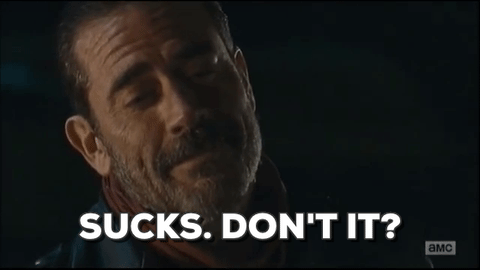
It’s fine for The Walking Dead to use cliffhangers. The point is the show overuses the storytelling device, so much so that is has become a crutch that the show has to lean on to keep going. Cliffhangers are supposed to be shocking, not purely rage-inducing and aggravating. With The Walking Dead, viewers have come to expect cliffhangers. Cliffhangers need to mean something or lead to something. They can’t just be used because the show runner can’t think of a better way to end an episode, which is exactly what it has felt like lately on The Walking Dead.
Season six had been building up to the biggest big bad the show has ever had, Negan. In the finale, he finally appears in the last ten or so minutes of the episode. Those final minutes were heart-pounding intense suspense, thanks in great part to Jeffrey Dean Morgan’s superb, charismatic, and captivating acting, and fans of the comic know exactly what happens next. There was so much emotion in the scene, but when Negan makes his choice of who to kill, the shot changes to a POV and the audience is left, perhaps quite appropriately, with Negan bashing the camera with Lucille, his beloved barbed wire baseball bat, complete with some really cheap, terrible looking blood flowing down the camera lens. That moment practically acted as a metaphor. Sub in Scott Gimple for Negan, and it’s a pretty accurate picture of what The Walking Dead just did to its fans in that moment. All of the emotions built up in that moment will be lost by the time season seven arrives nearly six months from now.
Scott Gimple said on Talking Dead after the finale that he knew there would be strong feelings about how the season ended. He promised to “deliver a story that justifies it” in season seven. He argued that this moment was the end of the story they were telling in season six, and the death begins the new story of season seven. A couple of days later, he went on to compare fan reaction to The Walking Dead finale to the reactions Game of Thrones usually garners. Gimple needs to realize he’s practically comparing apples to oranges. Whenever Game of Thrones throws in a shocking death, they almost never do it in the season finale. Think Ned Stark, the Red Wedding, the Red Viper, and the Purple Wedding. There’s always time left in that season to recover and see the repercussions of those events. The one exception is what happened in the latest season with Jon Snow, but at least we got to see everything happen on camera. AMC would have cut to black on that scene and kept the audio going. Game of Thrones also has the very valid excuse of that being the point where the source material currently ends. Nice try, Gimple.
youtube
The Walking Dead needs to come back in a big way and deliver from the very beginning of season seven. No more leaving fans wondering who lives, who dies, who tells their story with the characters (thanks, Hamilton). Show them you still care about them and stop playing around, Gimple. No more cheap cliffhangers. It’s time to move past that and stop falling back on it. There are plenty of rich characters to tell an entertaining, engrossing story, so there’s no need to resort to stupid, redundant tricks. Step up your game, or be prepared to lose even more viewers than you just did.
youtube
0 notes
Text
A Tale of Two Shows: The High and Low of Summer Television
Summer, unfortunately, has come to an end. In its place, we have brisk fall weather, pumpkin spice everything, Octoberfest beers, football, postseason baseball, and the return of all the big fall television shows.
Before we all don our Green Arrow hoodies or grow out that Rick Grimes beard again, I would like to discuss two television shows that premiered this summer. I had never heard of one of them until I kept hearing critics raving over it following the season finale, and I had moderate hopes for the other one based on the way that it was played up leading into the pilot. There is a stark difference in quality between the two shows, and it might surprise you which one turned out to be far superior.
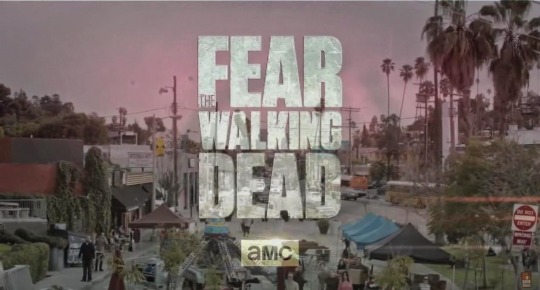
Fear the Walking Dead on AMC
I decided to review this show first because I did not want to leave a bad taste in your mouth at the end of the blog. Yeah, you can already tell how much I liked this show.
Where do I even begin with this show? Fear the Walking Dead is set in Los Angeles right before whatever caused the zombie - er, sorry...walker - outbreak. We follow a broken suburban family as we get their perspective of the chaos unfolding all around them, and herein lies one of my biggest beefs with this show: I never once cared about a single one of the characters. That’s right, not even one. Well, maybe just one, but he only made cameo appearances in two episodes, so I am not counting him (see Tobias, the zombie-ready high school student). If anything, they almost always ticked me off. That is a major problem for a television drama, especially one that only has six episodes in its first season to hook us. If people want to use that short run as a way to excuse the poor character development, all you have to do is point them back to the main show to render that excuse ineffective. Season one of The Walking Dead only consisted of six episodes, yet I was already onboard with Rick Grimes from the moment he woke up from his coma in the pilot episode. By contrast, when I would talk about an episode of Fear the Walking Dead during the week, sometimes I could not even remember the names of the characters; that is how forgettable they are!
Travis and his wife, fiance, girlfriend (Did they ever make it clear if they were married?) Madison (I had to look up her name, and she is one of the main characters of the show!) are the central focus of Fear the Walking Dead. Both of them work at a high school, with Madison as a guidance counselor and Travis as a teacher. Alicia and Nick are the two kids of the family. Alicia is a senior in high school and has grand plans to move away for college. Nick, meanwhile, is a drug addict.
Before we move on to a few of the other characters, let’s take a moment to talk about Nick. I immediately had a feeling I was not going to like this show in the pilot episode when the first character we see is Nick. I am fine with having a drug-addicted character on the show (just look at Charlie from Lost), but I absolutely hated how the showrunners used Nick as the person to introduce us to the zombie apocalypse. It felt like such a cheap way to do it. Of course no one is going to believe a druggie, so of course we are going to have to have an episode where all of the characters are like “Oh my gosh, Nick was actually telling the truth and not having a drug-induced hallucination.” And of course there are going to be plot points throughout the show where Nick battles his addiction and screws things up because he needs his fix. When there are so many other interesting ways to introduce a zombie apocalypse, using a drug addict as your in came across as such an easy way out.
Back to the other characters, we learn that Travis had a previous marriage. His first wife is still alive (again, can’t remember her name), and she looks after their teenage son, Chris, while studying to becoming a doctor or nurse practitioner.
A couple of episodes into the season, we also get introduced to yet another family. (Jeez, enough with the families, show creators!) The dad is a barber from Central or South America with a dark past (ooh, how original...), the mom is super religious, and there’s a daughter. I thought of all the characters I might end up liking barber dad since he seemed to know how to handle himself in a zombie apocalypse, but he turned out to be just as unlikable as all of the other characters.
It is not only that these characters are unlikable, it is that they are so inconsistent throughout the first season. For example, Alicia and Chris randomly spend an episode trashing a neighbor’s house. Where did that come from? It also seemed like they would hook up in the same episode, which would have been weird considering they are step-siblings. Hopefully that never comes up again.
I knew going into the show that The Walking Dead audience would be at a disadvantage. We have known about the walkers for six seasons now thanks to the main show, but the characters of Fear the Walking Dead have never experienced them before. It was going to be tough to refrain from screaming at them for not immediately trying to kill them by shooting or bashing them in the head. Therefore, I was willing to be patient with them. However, after Travis and Madison encounter a walker with Nick and witness firsthand how undead it is, when they come across another one they treat it like it is someone who has the flu rather than the killer it has become. Okay, I guess, but they kept doing that for most of the season! Oh, and they do not even bother warning Alicia about the potential undead threat! Do not even get me started on how much of a wuss Travis is with his pacifism toward the undead. Ugh!
Fear the Walking Dead had such potential. We had seen the zombie apocalypse on the east coast in Georgia with Rick and the gang, but this was our first time to see what it was like in another part of the country in one of the most heavily populated cities, nonetheless. In The Walking Dead, we were introduced to the zombie apocalypse after it happened since Rick was in a coma in a hospital when things went down. With Fear the Walking Dead, we could experience it from day one. However, instead of showing us a broader picture of the apocalypse as it happens in the city of Los Angeles, the show creators confine us to a dull, unlikable family. I thought we might get to see the apocalypse from the military’s perspective, and I was hopeful when they finally made an appearance midway through the season. Unfortunately, the show quickly crushed my hopes when it made the military out to be a bunch of bullies who did not care at all about their fellow human beings, which seems to be quite unrealistic if you ask me, even for a fictional television show. Speaking of unrealistic, one of the great mysteries season one of Fear the Walking Dead left unanswered is how Travis’ truck came out of that riot without a single scratch!
Fear the Walking Dead suffered severely from poor pacing. We go from pre-apocalypse with only a couple of zombies at most for the first maybe two episodes to full blown walker mania and city-wide shutdown and quarantine in the next episode. There was no sort of transition to this point. It just sort of happened. The show could have done so much more leading up to that point. We already have full blown zombie apocalypse in the main show. Why didn’t we focus on the period leading up to that more in this spinoff show?
The end of the season finale piqued my curiosity as to where the show was headed with the beginning of season two. In the interest of avoiding spoilers, I won’t mention it here, but I will say it involves Abigail, something we have never seen in The Walking Dead.
Was I expecting this show to be great like the main show? No. I was, however, hoping it would be a good show that would hold us over during the summer months while The Walking Dead was on vacation. It turned out to be barely decent, if that. I constantly wondered why I continued to watch the show since it started to feel more like a weekly chore I had to do. I will be tuning in when the show returns next year, but I am not sure if I will be sticking around much longer.
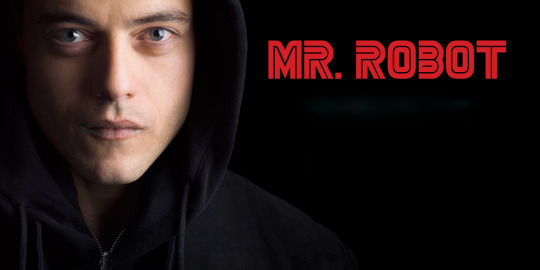
Mr. Robot on USA
Wow! Maybe I should start paying more attention to USA’s original shows because this one blew me out of the water.
I had no idea what to expect going into the pilot episode of Mr. Robot. The only thing I had heard about it was most critics giving its first season a 10/10 and certifying it fresh on Rotten Tomatoes. I was not sure if this was a show about robots, artificial intelligence, technology, etc. Perhaps not knowing what the show was about at all made the viewing experience even better.
In a world of instantaneous spoilers, I was fortunate enough to watch all ten episodes of the inaugural season of Mr. Robot without having any of the plot given away. To return the favor, I won’t mention any plot points or crucial character development (ah, actual character development...how refreshing!) in this review.
Mr. Robot excels in every aspect of a television drama thriller. From its characters to its tone to its camera work, everything is virtually perfect. One of the things I really enjoyed about the show is how current and modern it is, even throwing jabs at Steve Jobs. The characters use social media like Facebook and Twitter, actual current events are mentioned, and people in the show act like people of the 21st century act.
The themes of the show really make an impact. The show certainly offers up plenty of criticism about our technology-driven society, among other topics like mental health.
Practically every actor in the show gives a standout performance. Martin Wallström as Tyrell Wellick and Michel Gill as Gideon Goddard stand out, but Rami Malek as the main character, Elliot, and Christian Slater as Mr. Robot steal the show. Elliot, in particular, is an amazing main character who is a shining example of an unreliable narrator. The actors nail every nuance of their characters, and they make them and their actions so believable. Nothing ever seems out of character for anybody. Good or bad, you really feel strongly for these characters.
The pacing of Mr. Robot is perfect. (I know I keep using the word “perfect,” but I really mean it!) The story flows well from episode to episode. There are plenty of cliffhangers to make you want to binge the entire season (I watched at least two or three episodes a night.), but it feels like each episode wraps up quite nicely at the same time.
The plot and dialogue are extremely well-developed, and pretty much everything that happens and is said makes sense. The show has plenty of curveballs to throw at the audience, too. There were a couple of plot twists in the show where I had to pause the episode and stare at the screen in disbelief for a few minutes. I would then get up and walk around thinking about how incredibly well executed these plot twists were. Some were right in front of me the whole time, but they were still absolutely shocking. That is when you know you have done things right.
I could say so much more about Mr. Robot, and I really wish I could go into more detail. However, I want everyone to go into the show blind like I did to get the most enjoyment out of it. Mr. Robot is the pinnacle of summer television, and it deserves every nomination and award it gets.
The creator of Mr. Robot, Sam Esmail, has promised that season two will “get really f***ing dark,” which is unbelievably awesome considering how dark season one was already. (Even though it was dark, you never felt like you were being crushed under the weight of that darkness.) Season two of Mr. Robot should premiere sometime during the summer of 2016.
We are fsociety. We are finally free.
0 notes
Text
Star Wars Rebels: A Return to Classic Star Wars
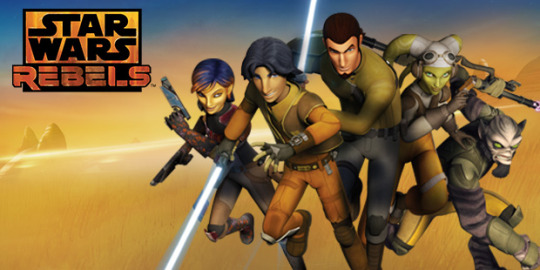
The word is out on Star Wars Rebels: it’s a darn good show.
A lot of people, myself included, blew Rebels off when they saw the animation design. It looked childish, especially having come fresh off the final season of the animated Clone Wars series. However, some critics argue that Rebels is better than Clone Wars, and I would agree that they have a very strong argument.
Rebels introduces its audience to its ensemble cast through the force-sensitive 14-year-old Ezra Bridger, a native of Lothal, a planet in the Outer Rim. I really liked this approach to the character introductions because the audience, like Ezra, has to build up trust with the crew and decide to accept them before going off on adventures with them. The Rebel cell Ezra joins up with calls the spaceship Ghost their home. Each member of the crew has an established role. Sabine Wren, a teenage female from Mandalore, serves as the crew’s demolitions and painting expert. As a youth, she joined the Imperial Academy. During her time as a cadet, however, the Empire’s way of handling things made her question her affiliations, so she defected. Zeb Orrelios is the muscle of the Ghost. Zeb is a Lasat and former member of the Lasan Honor Guard. He is one of the last remaining Lasat still alive after the Empire brought destruction to the planet of Lasan. Hera Syndulla is a female Twi’lek and the ace pilot of the Ghost. Chopper is the crew’s astromech droid, and just like R2D2, it has the attitude to go along with it. Last, but certainly not least, is Kanan Jarrus, one of the few Jedi who managed to survive Order 66, thanks to his master’s sacrifice. In the years since the Jedi Purge, he has kept his identity as a Jedi secret, and his weapon of choice has become his blaster instead of his lightsaber.
The crew of the Ghost is certainly a ragtag bunch, and you can’t help but to fall in love with them. Each one of them grows on you in their own way. Hera turned out to be the hardest character of the crew for me to like, though. She comes across as bossy too often, and she constantly runs around yelling, “That’s an order!” I get that the Ghost is her ship and I guess that gives her the right to give orders like that, but it just seemed out of place. The crew of the Ghost is a team. They share responsibilities for everything. Plus, it’s not like this crew follows any sort of military structure. They’re a band of Robin Hood-esque thieves. It just felt weird having Hera act like an established commander sometimes. I have to appreciate her for her flying skills though. Anakin Skywalker was a bigshot pilot, but I think Hera might be able to rival him. Yeah, Hera is alright. Chopper, on the other hand, gets downright annoying sometimes. Does it always have to have such an attitude? It’s funny sometimes, but it gets really tiring when it has a sassy response in every single scene it’s in.
While we’re talking about the crew of the Ghost, allow me to bring up something that season one left to be desired. We get almost no backstory on the crew. Since this is a television series and not a movie, that’s something that can definitely be established. The show occasionally throws us snippets of backstory, but it all really boils down to “The Empire did this to me, my family, or my planet, so I hate the Empire now.” That’s perfectly understandable and basic, but I want some other emotions besides just hate on display. Let me in on the sadness the characters felt when the Empire tore their lives apart. This lack of backstory not only applies to our good guys, but the main bad guys of the show as well.
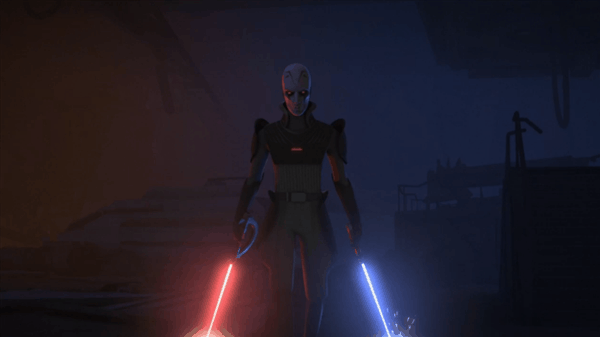
Speaking of bad guys, why don’t we talk a little bit about the folks working for the Empire? The show’s two main bad guys are the Inquisitor and Agent Kallus. We never really find out anything about these characters except they are evil, especially the Inquisitor. The Inquisitor is dispatched to deal with the Rebels when Kanan pulls out his lightsaber during an encounter with Kallus and reveals he is a Jedi (really cool scene, by the way - “All troopers focus your fire on...on the Jedi”). It turns out the Inquistor has studied the Jedi archives and learned their fighting techniques. Oh, and he has a double-bladed red lightsaber that he can spin around. Beyond that, we don’t know anything about him. I guess that really doesn’t matter all that much though. He still comes across as an intimidating, menacing force to be reckoned with. Agent Kallus is an officer of the Imperial Security Bureau. That’s really all you need to know, and that’s good because that’s all we do know.
youtube
We can’t talk about the Empire and not bring up the stormtroopers. At this point, it’s standard pop culture knowledge that stormtroopers couldn’t hit an elephant if it was an inch away from them. I was hoping this show would veer away from that, given that many clone veterans from the Clone Wars would be stormtroopers before normal humans started gearing up in the white armor, but it turns out stormtroopers were terrible shots from the very beginning. Heck, there is even one scene were Sabine is standing right in front of a bunch of stormtroopers talking to them, and they still miss her! The stormtroopers’ less than stellar accuracy takes away the suspense and danger any of these exciting action-packed scenes might have had when you know the stormtroopers can’t kill, much less even injure, the person they are shooting at. In fact, the Empire as presented in Rebels appeared discombobulated. It didn’t feel like a threat as much as an inconvenience or a ruthless government that couldn’t enforce its policies. Its laughable handling of the Rebel cell on Lothal made me question if this was the same unstoppable force the Rebel Alliance went up against in the original trilogy. Fortunately, the final few episodes of the season bring in [**************************SPOILER**************************] Grand Moff Tarkin, and he begins to set things straight. Things get really serious when Darth Vader shows up in the finale. While James Earl Jones must have had a cold that day or something as Darth Vader’s voice sounded off, there’s no denying that his entrance to the show is epic. Having already seen episode one of season two of Rebels, I can confidently say the show will do his character justice; he kicks some serious butt [*****SPOILER OVER*****].
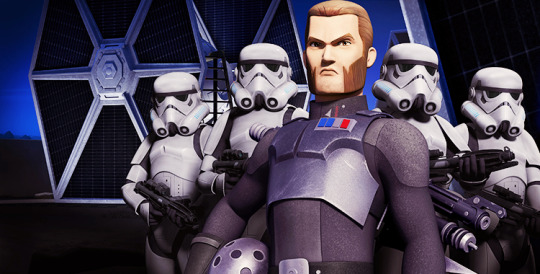
Moving on from the characters of Rebels, I think the second season of the show could improve on a couple of other things as well. Although you can get past the animation, I have to say the lightsabers look horrible. Why in the world are they so thin? I’m not sure if that is the best they could do for lightsabers with this animation style, but it just looks weird and stands out in a bad way.
A bigger issue for me than the lightsaber design, though, was how constrained Rebels felt in its first season. Constrained is not a word that should ever be used to describe Star Wars, given its vast, extensive galaxy. However, it’s unfortunately a very accurate description for season one of Rebels. Almost all of the episodes took place on Lothal or in its nearby orbit. The farthest away the show takes you from Lothal is in space above Mustafar, the lava planet in the Outer Rim from Revenge of the Sith where Obi-Wan and the newly christened Darth Vader dueled. Luckily, it looks like season two will expand the universe of Rebels and provide new settings for the show.
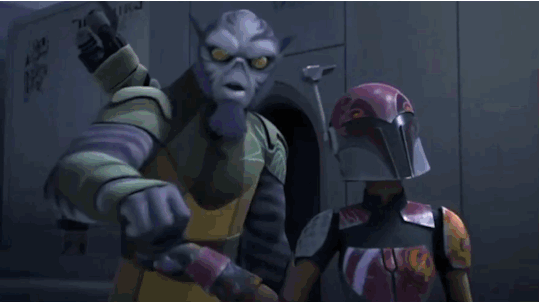
Star Wars Rebels certainly isn’t perfect, but it has that classic Star Wars feel from the original trilogy. In many ways, it’s reminiscent of A New Hope in the way that it is beginning a new saga with characters the audience will grow to love. Unlike Attack of the Clones and Revenge of the Sith, both of which had several very dark moments, Rebels manages to find a nice balance, erring on the lighthearted, comedic side. There’s a real sense of adventure, and the show doesn’t get bogged down with the technical side of the force once Kanan starts training Ezra as a Jedi.
On top of that, Star Wars fans get treated to some nice guest appearances from classic Star Wars characters with their original voice actors. Anthony Daniels returns to voice C-3PO alongside his pal R2D2. I do have to say of all the guest character appearances, C-3PO and R2D2 felt the most forced. Rebels also gives us the voice of Frank Oz as Yoda, and we get the classic wise master we all grew up with, not the lightsaber-weilding warrior who jumped all over the place that the latter two prequels gave us. In addition, Billy Dee Williams’ Lando gets to star alongside our cast for an entire episode. His guest appearance worked the best, and he had great chemistry with the crew of the Ghost. Thankfully, Rebels sounds like it is going to tie up some loose ends from Clone Wars, as certain characters from that series also make an appearance.
Star Wars Rebels is easily accessible and bingeable, with a total of 15 episodes for the first season. Season two premieres on October 14, 2015. Hopefully the upcoming 2016 Rogue One film will throw some Easter eggs from Rebels in as a gift for the fans who have been following the show. It would certainly fit within the timeline. Now go watch Rebels, and remember the force will be with you. Always.
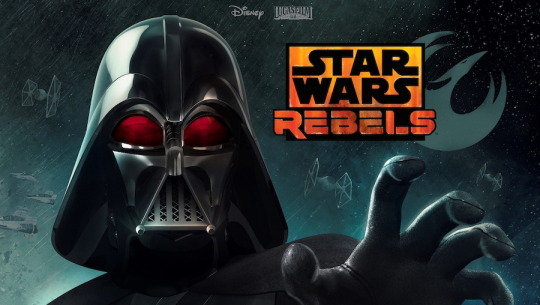
0 notes